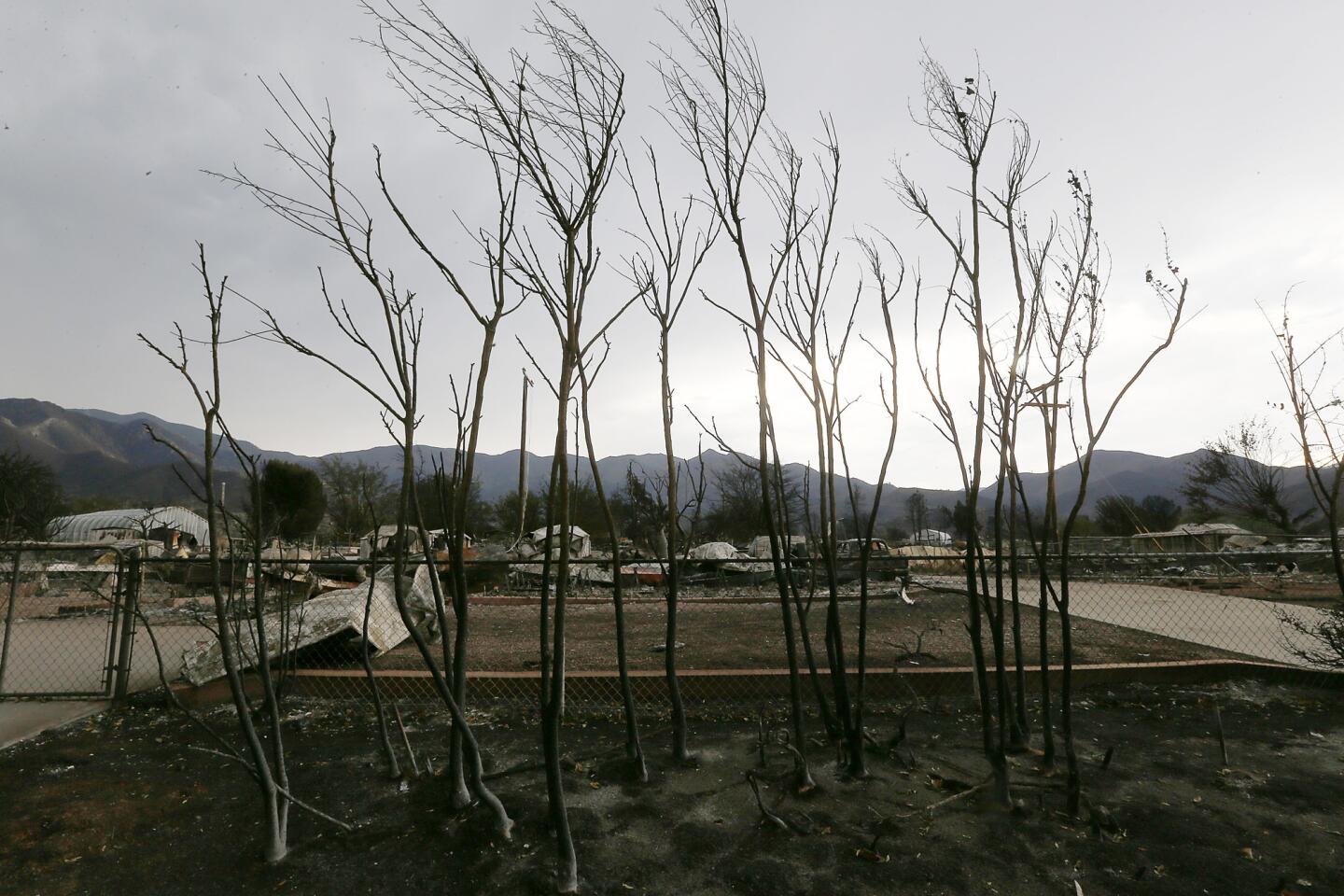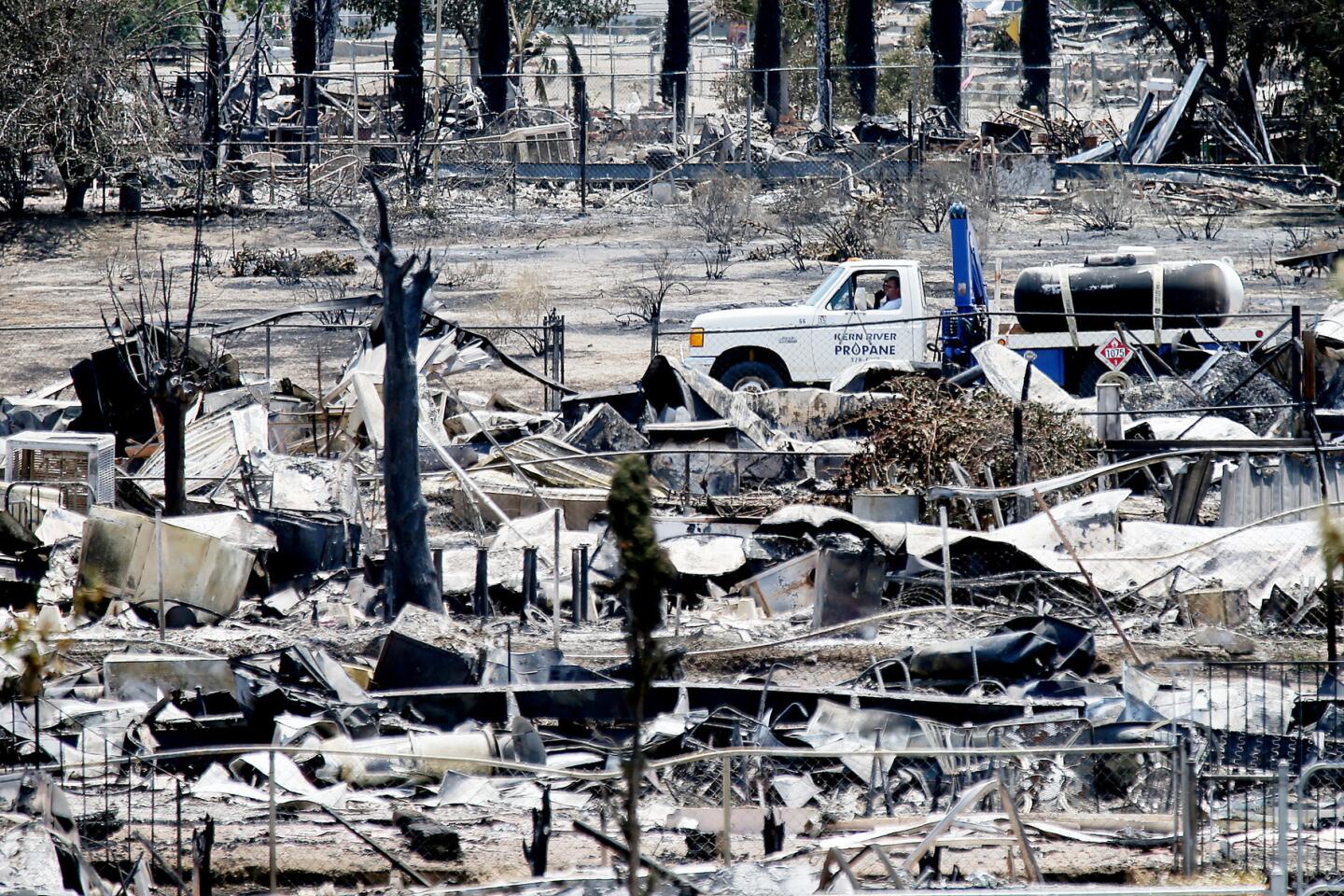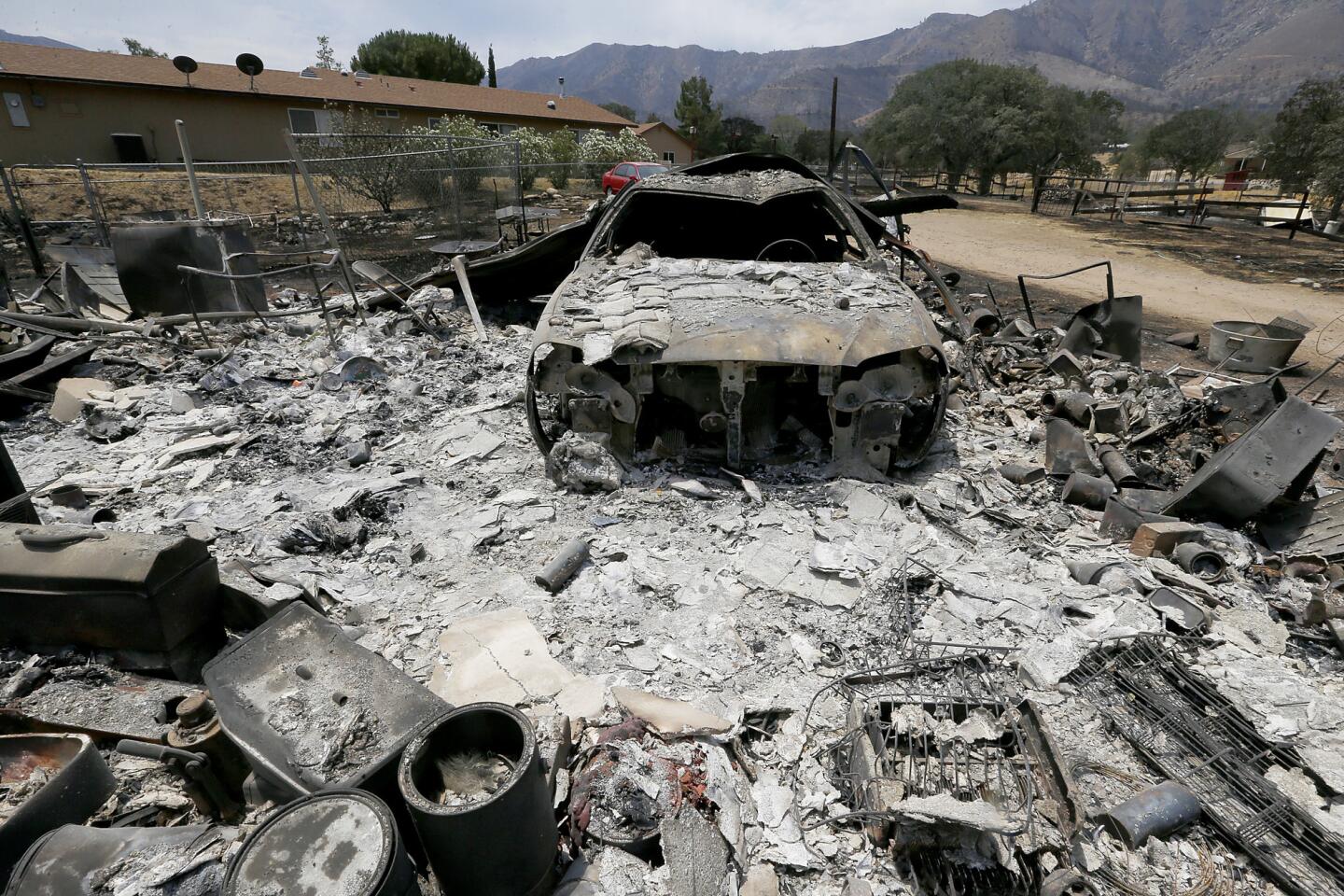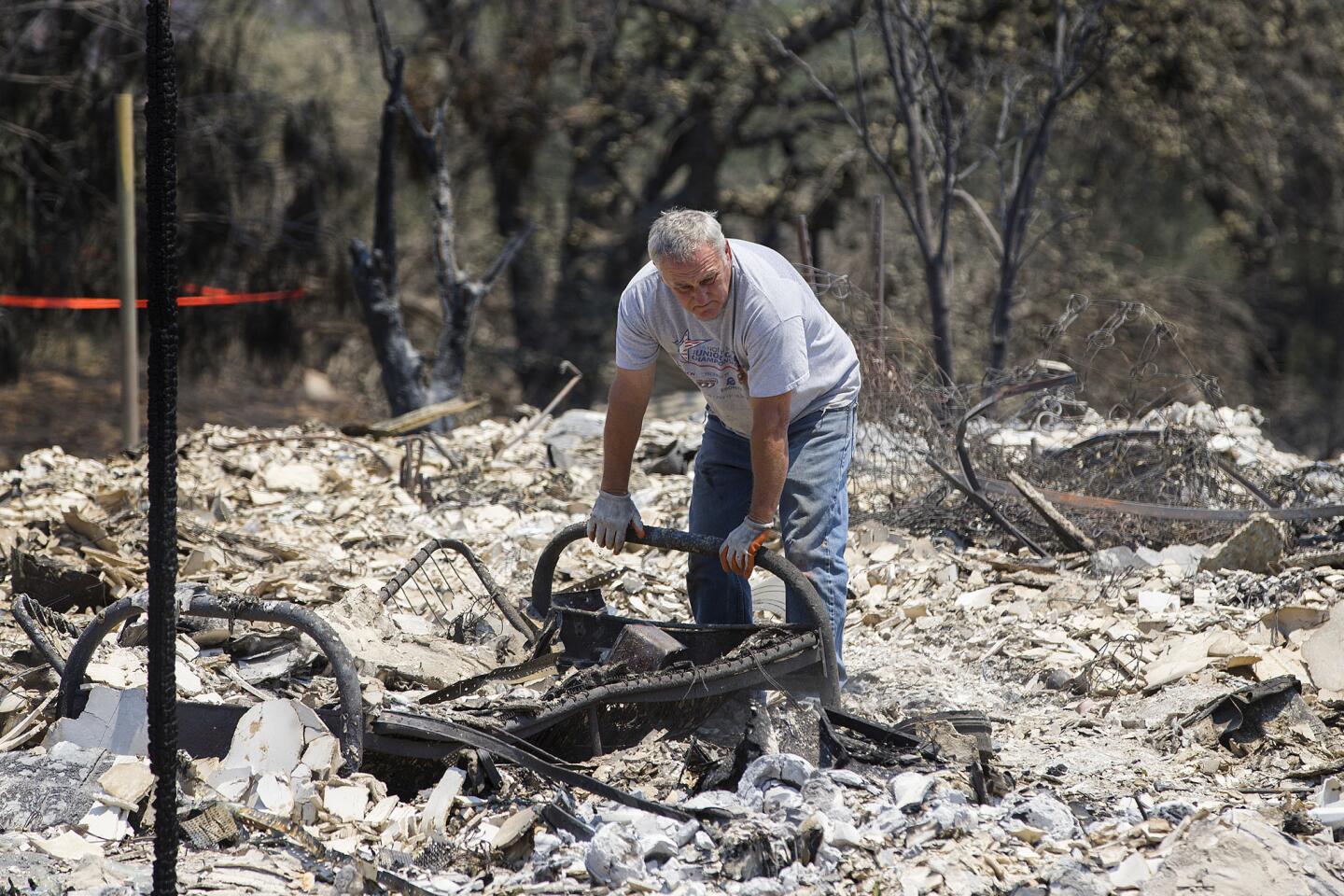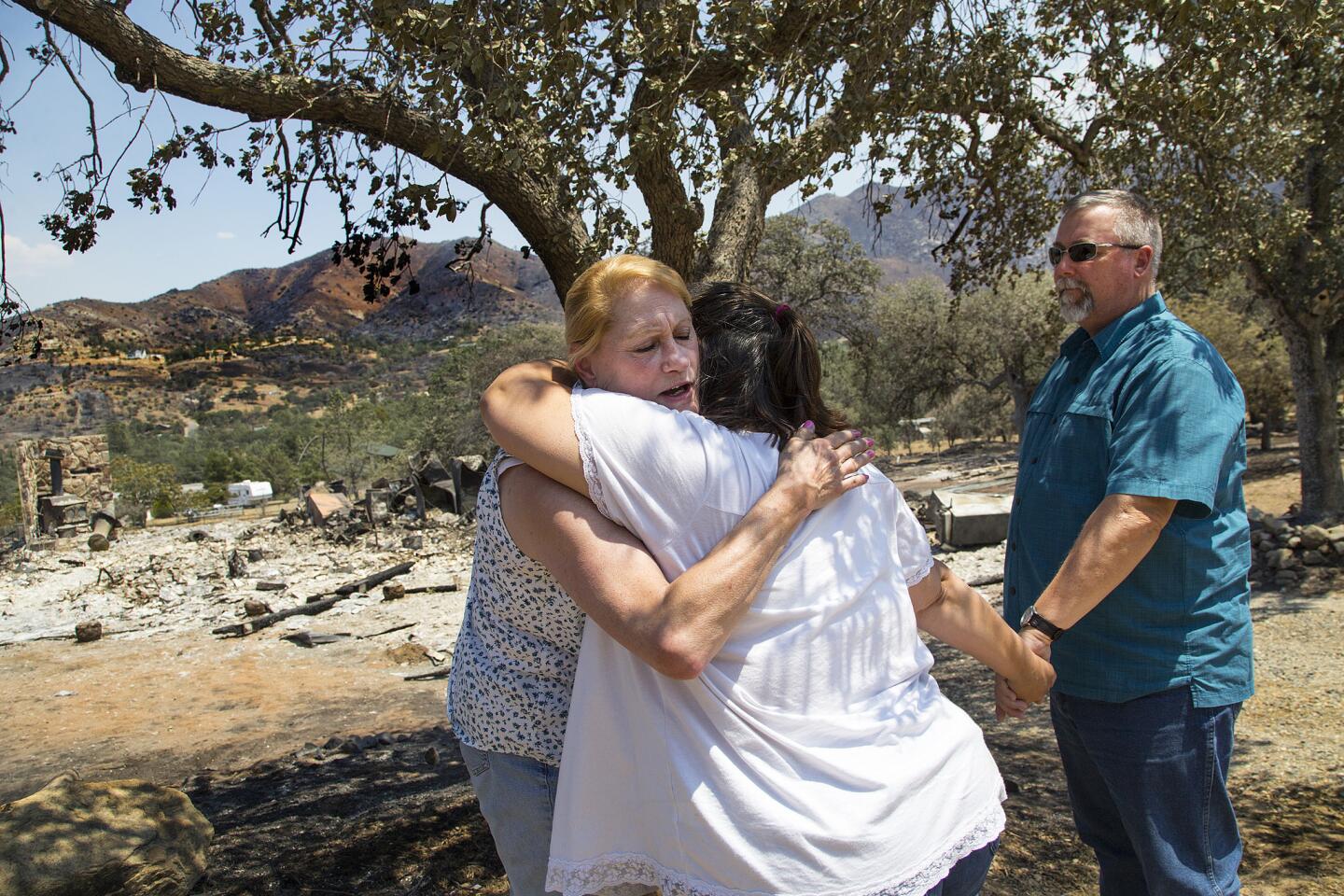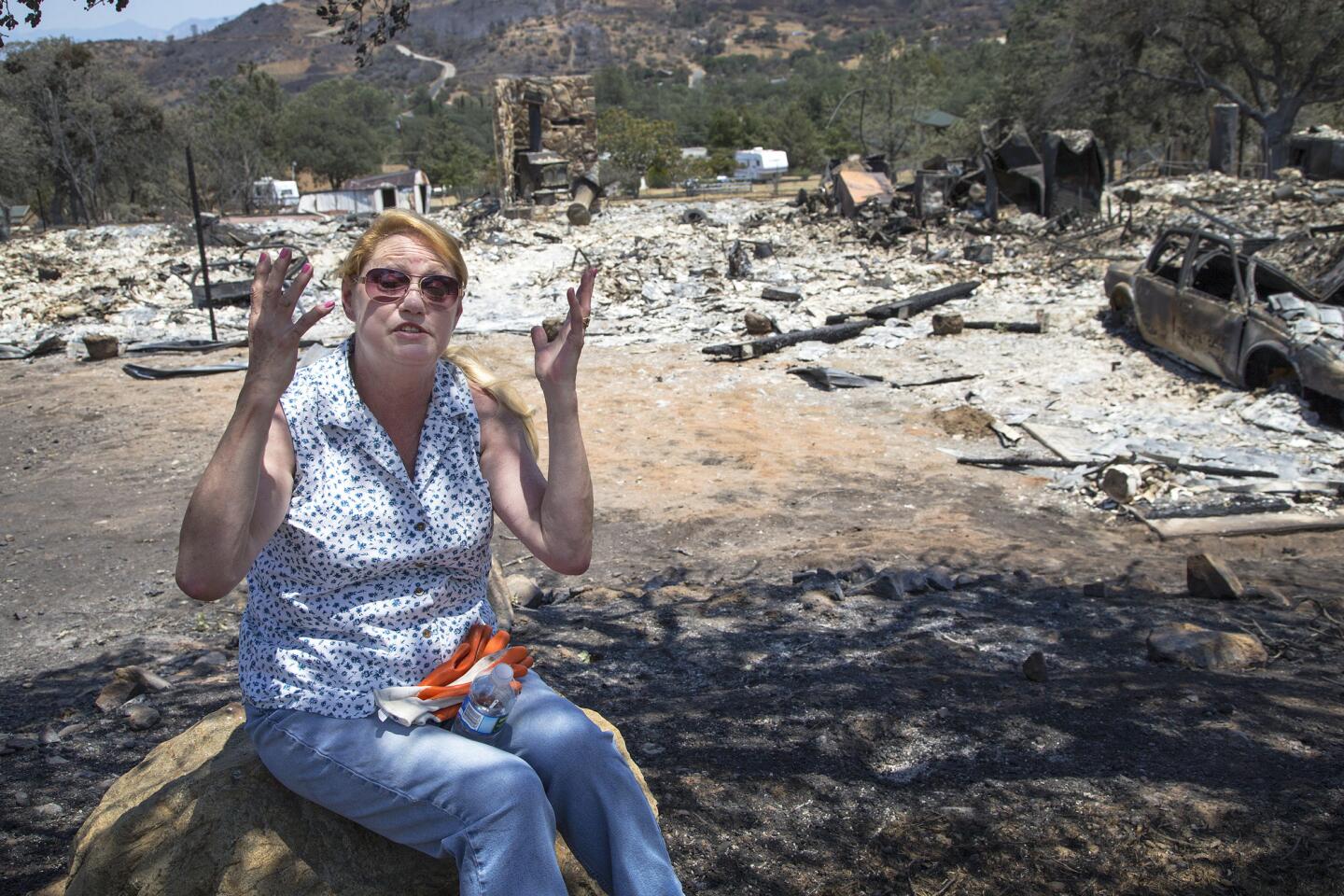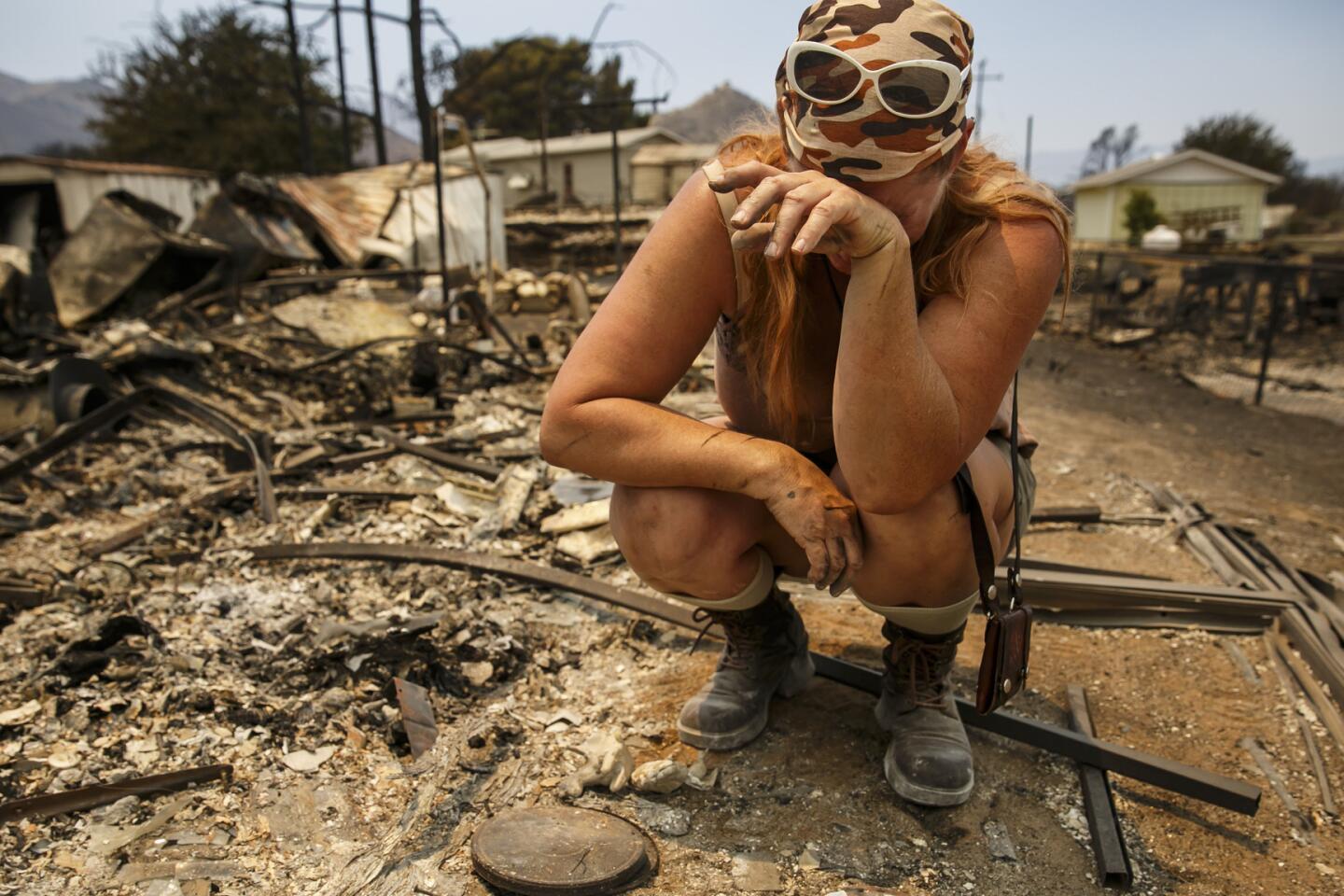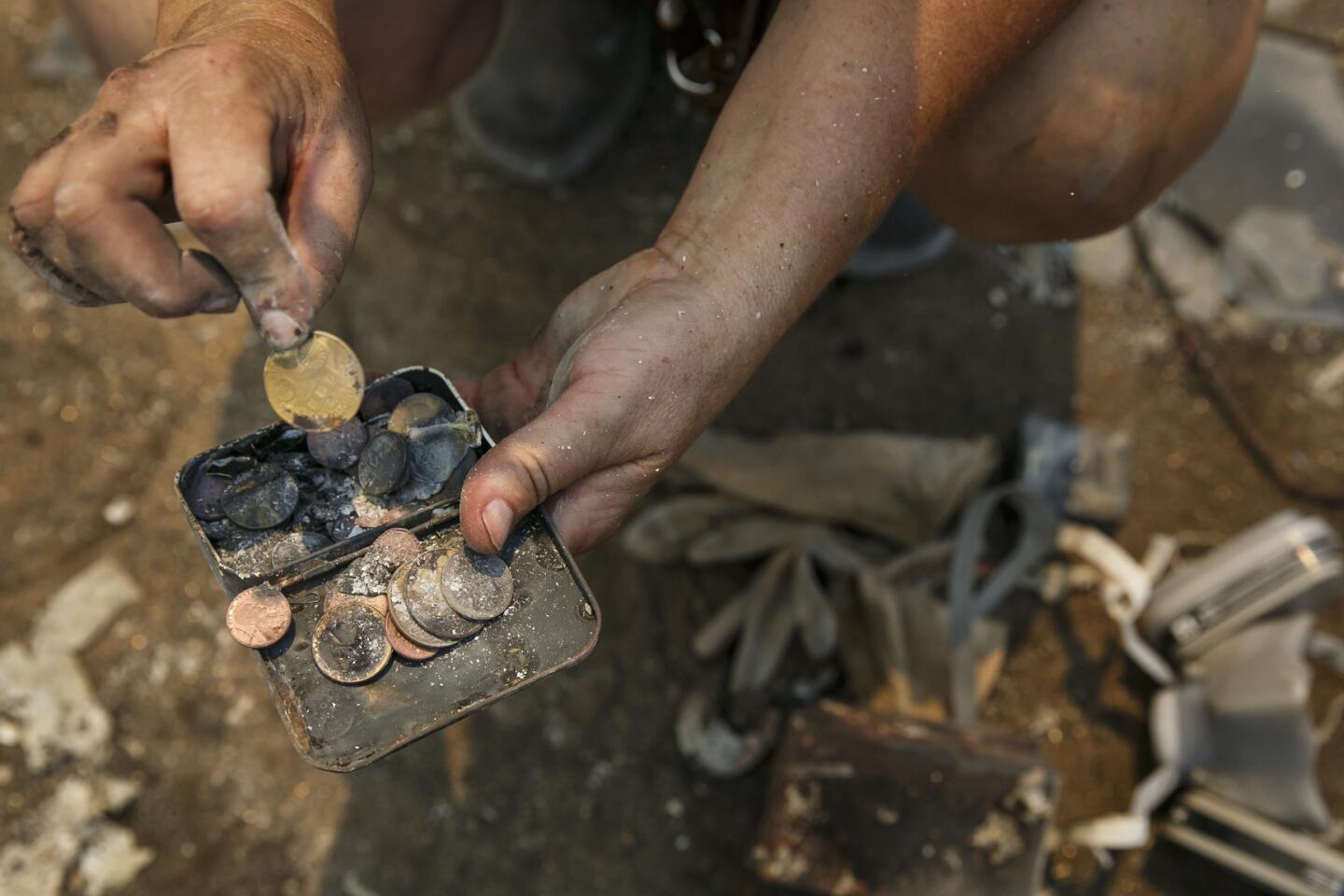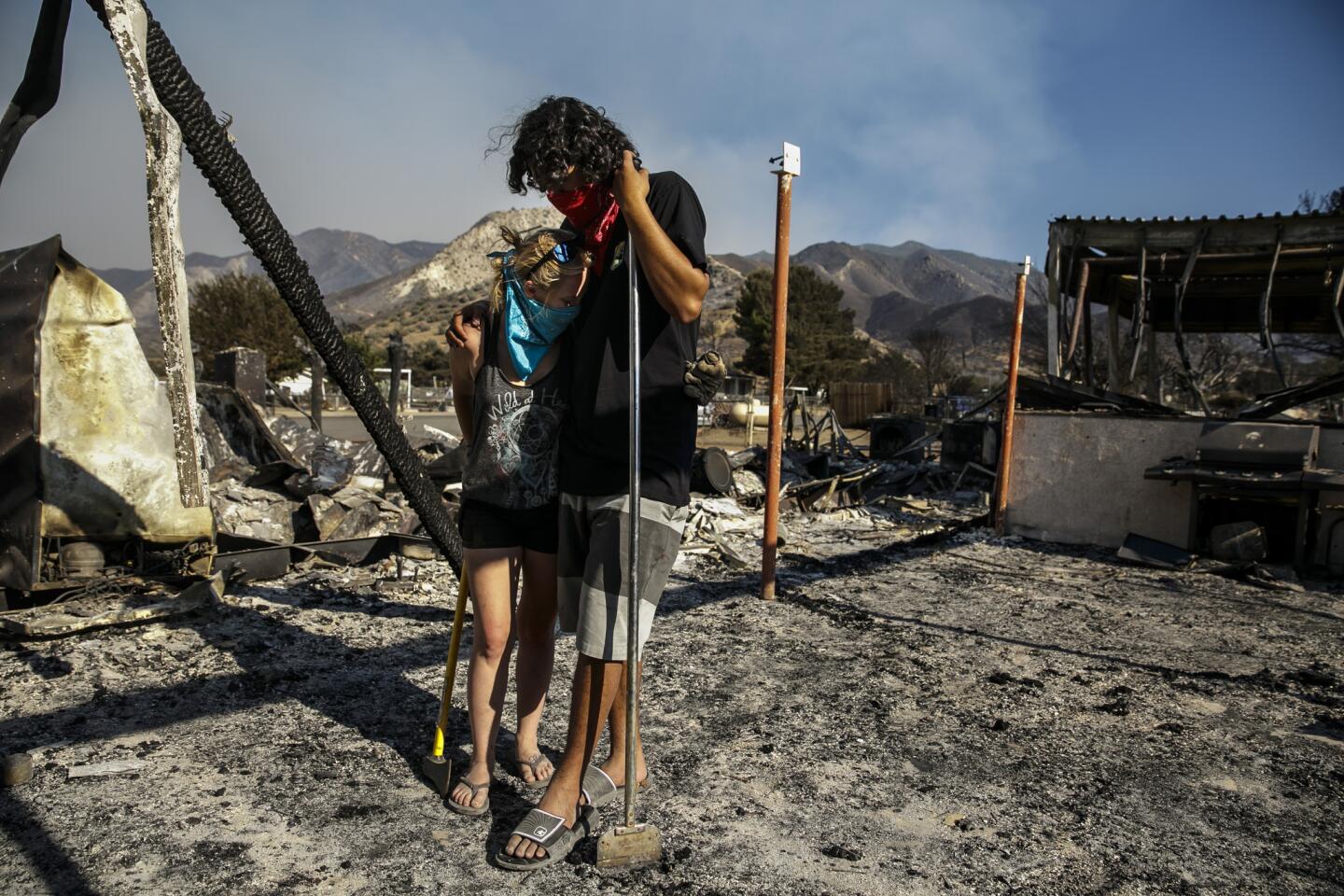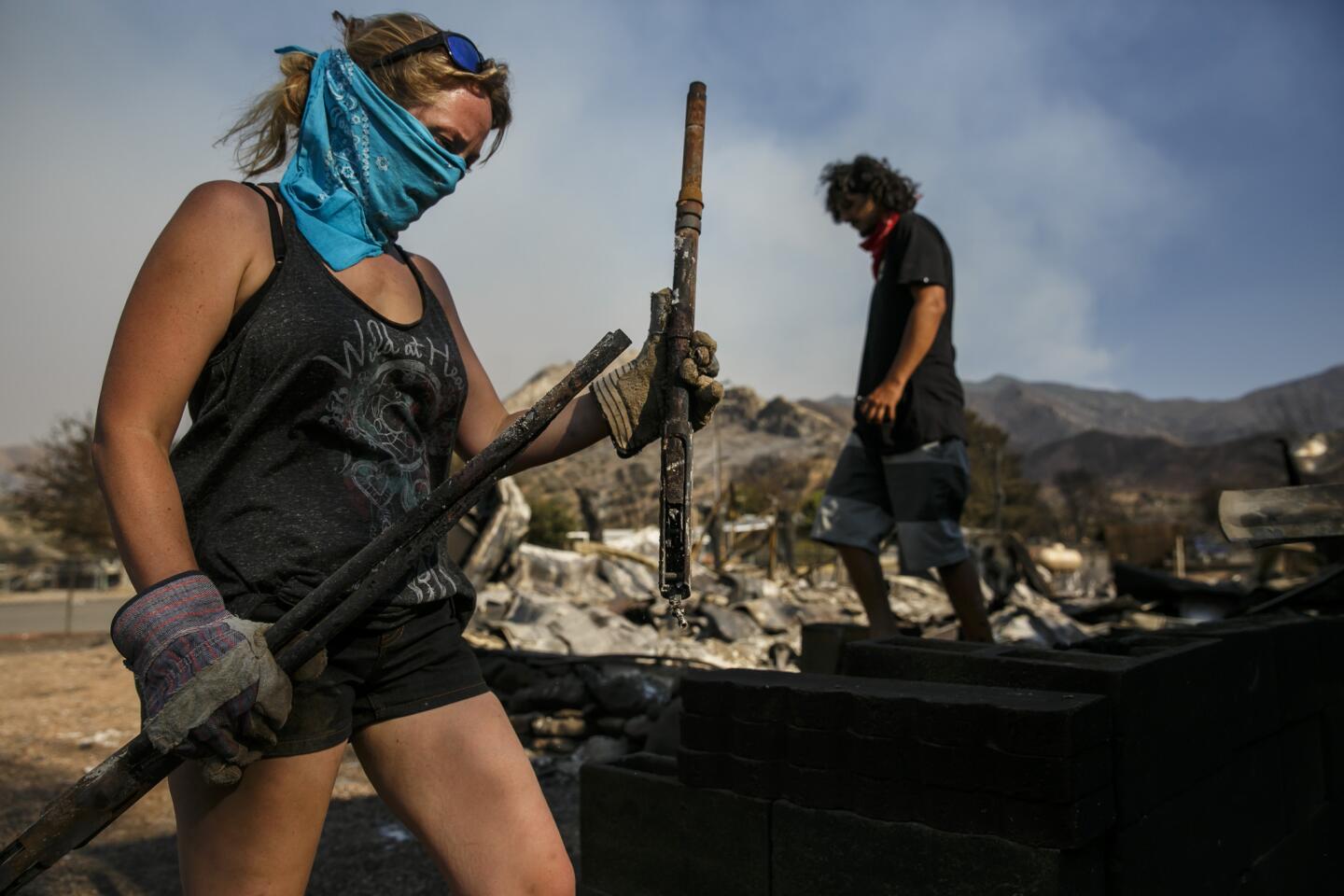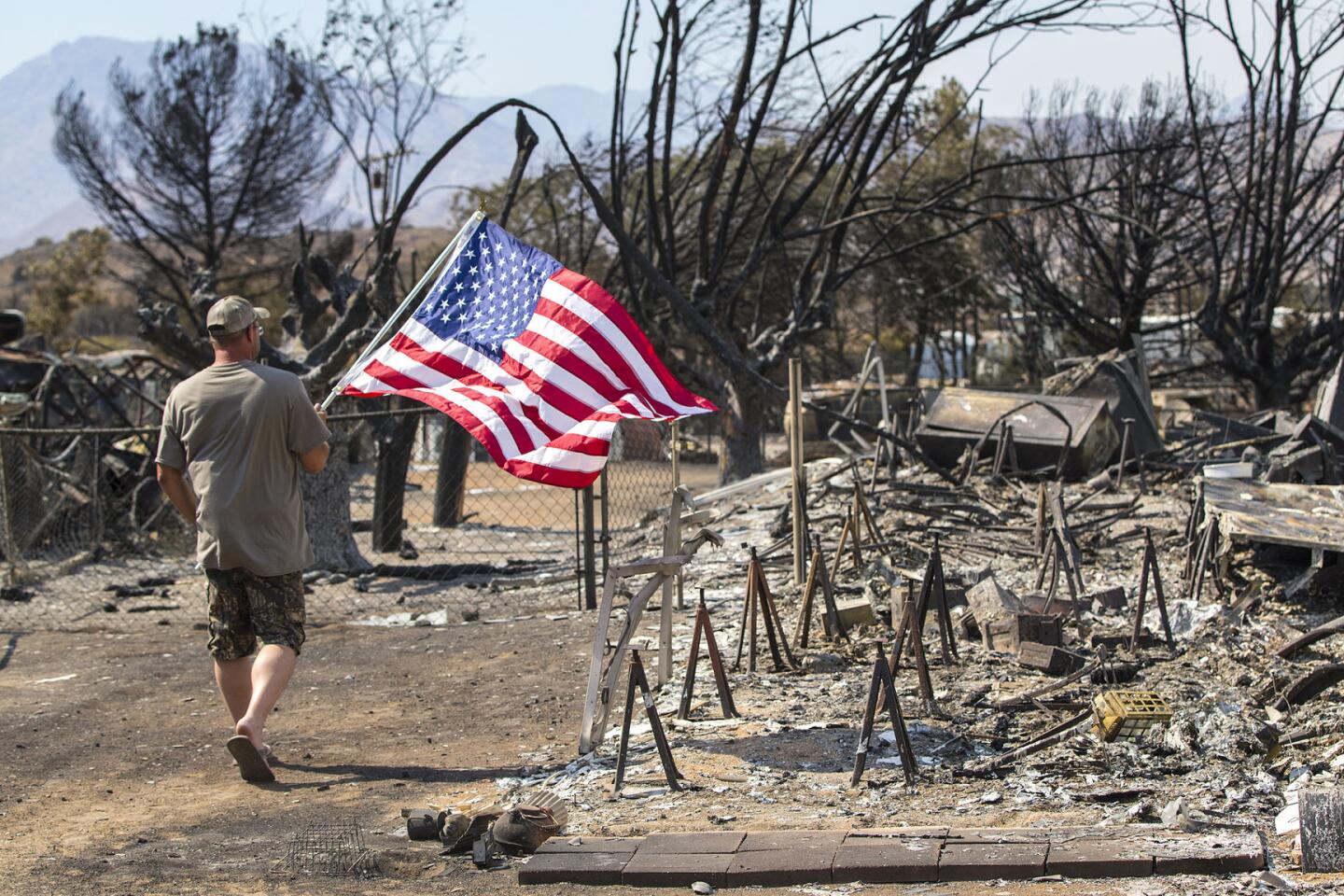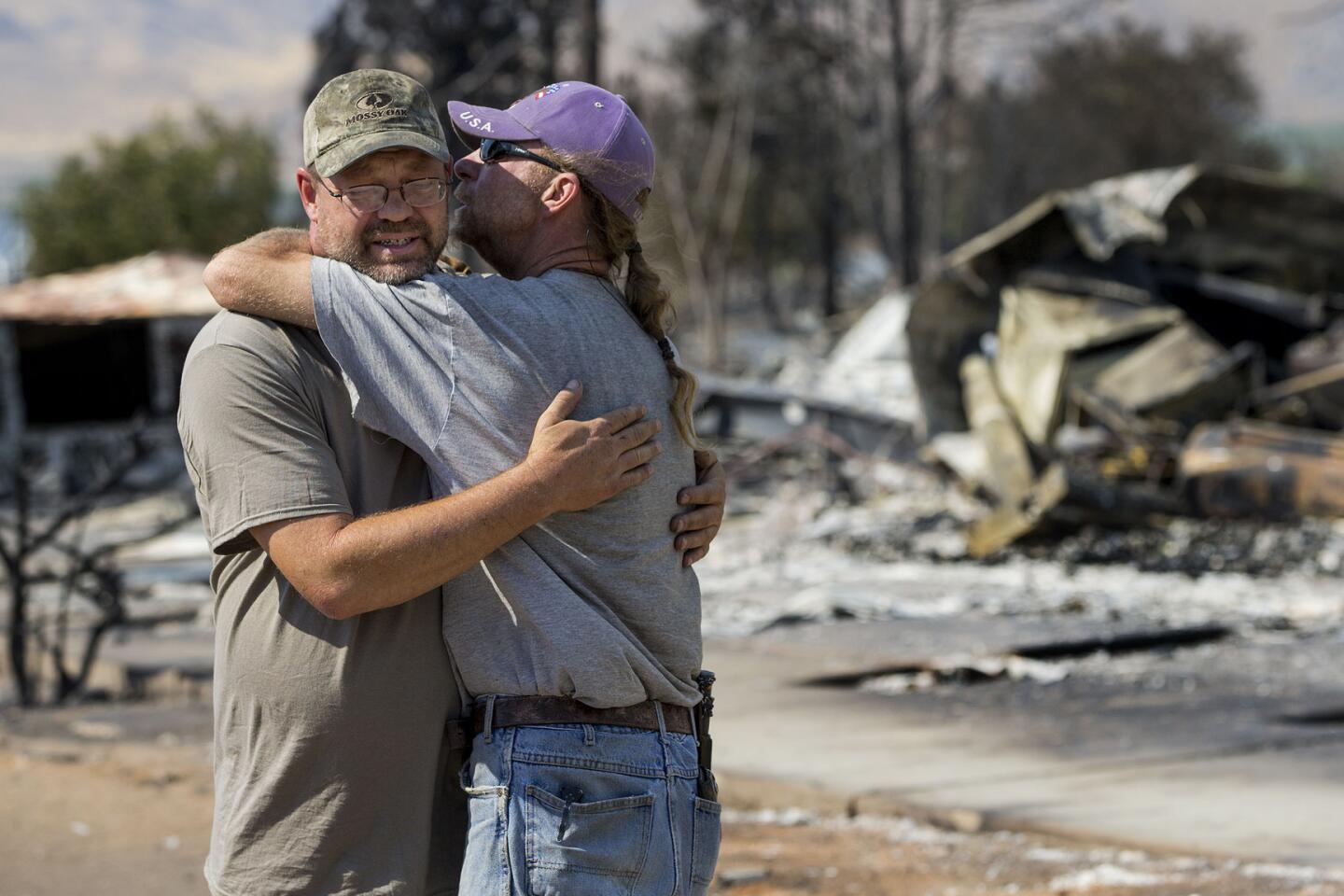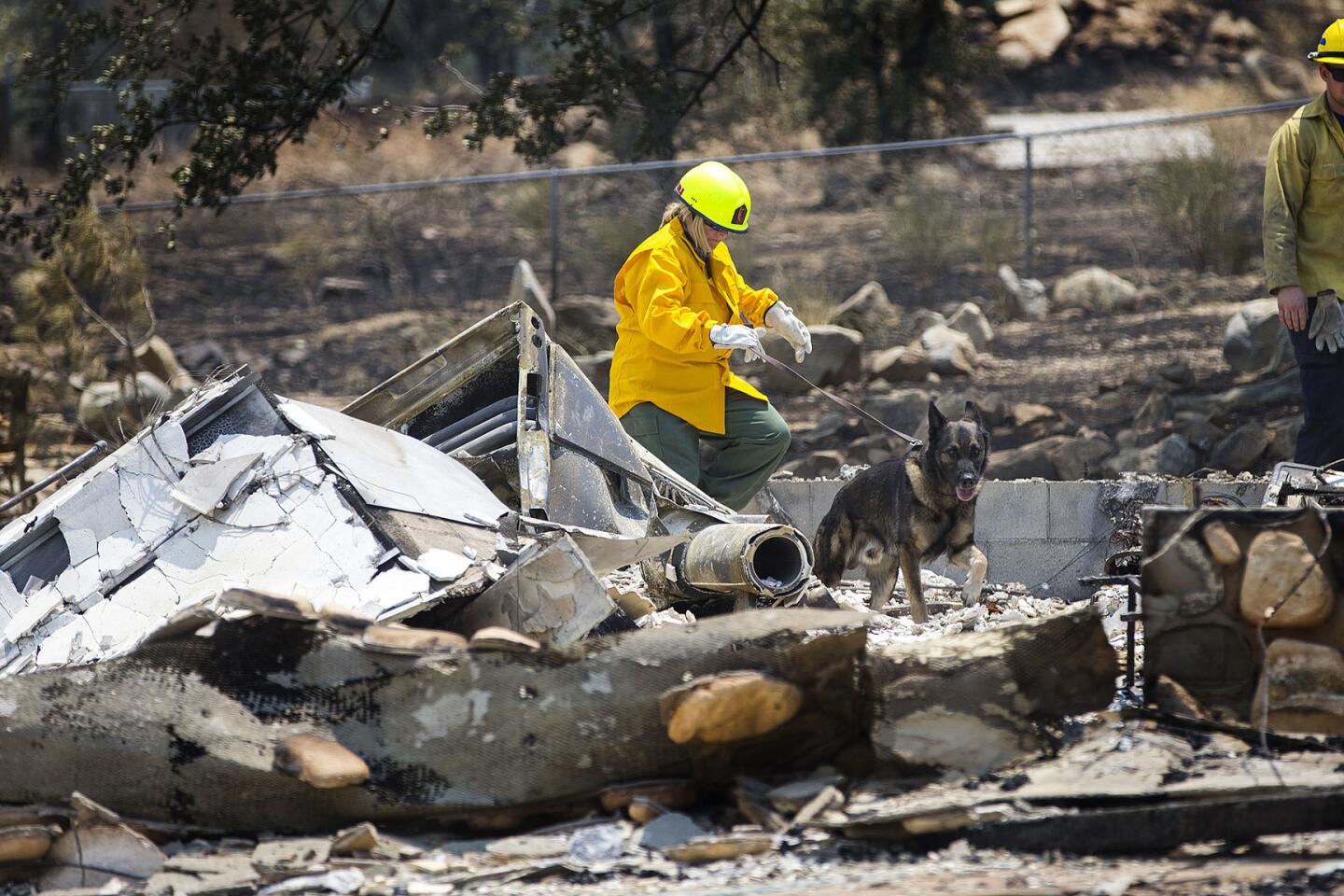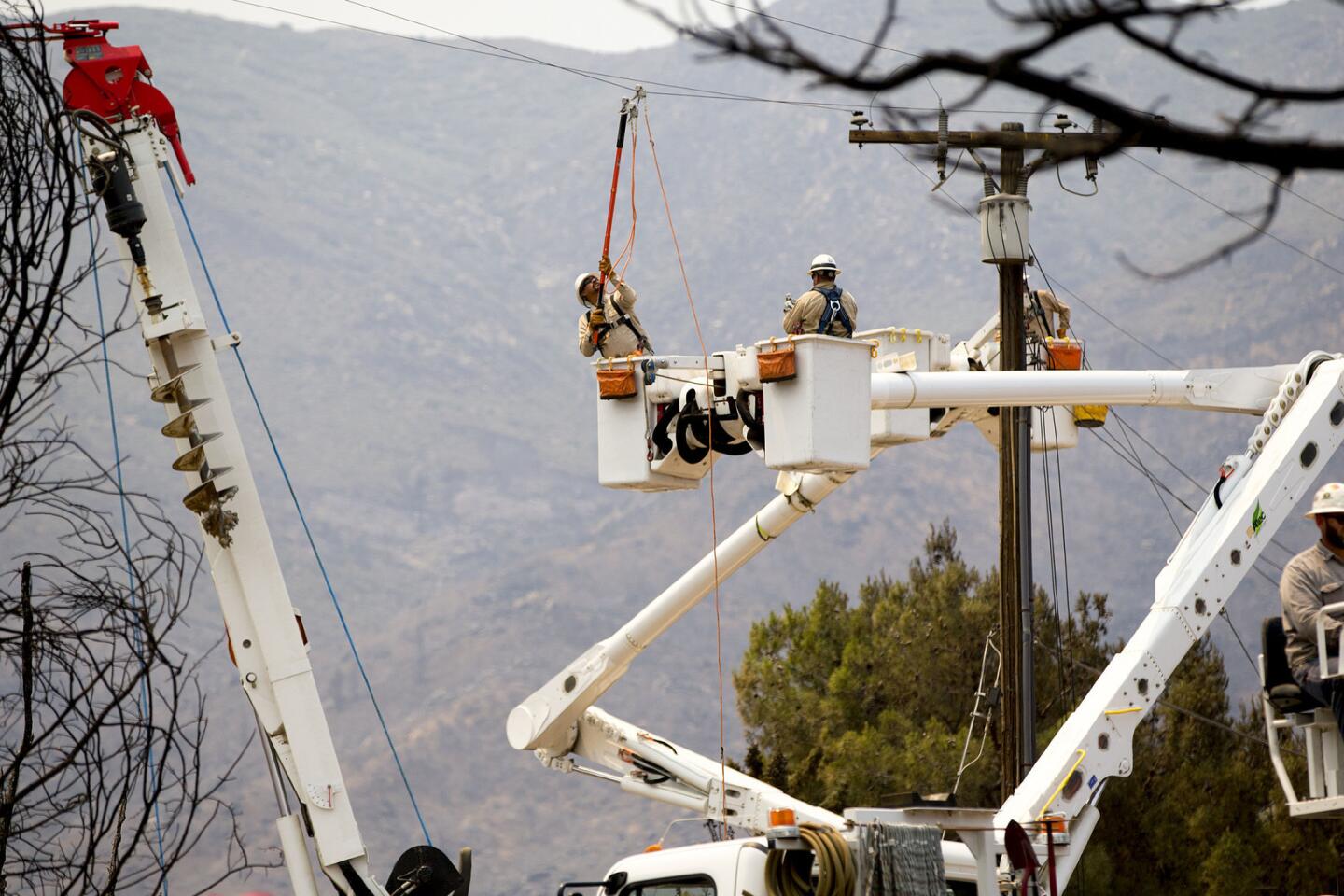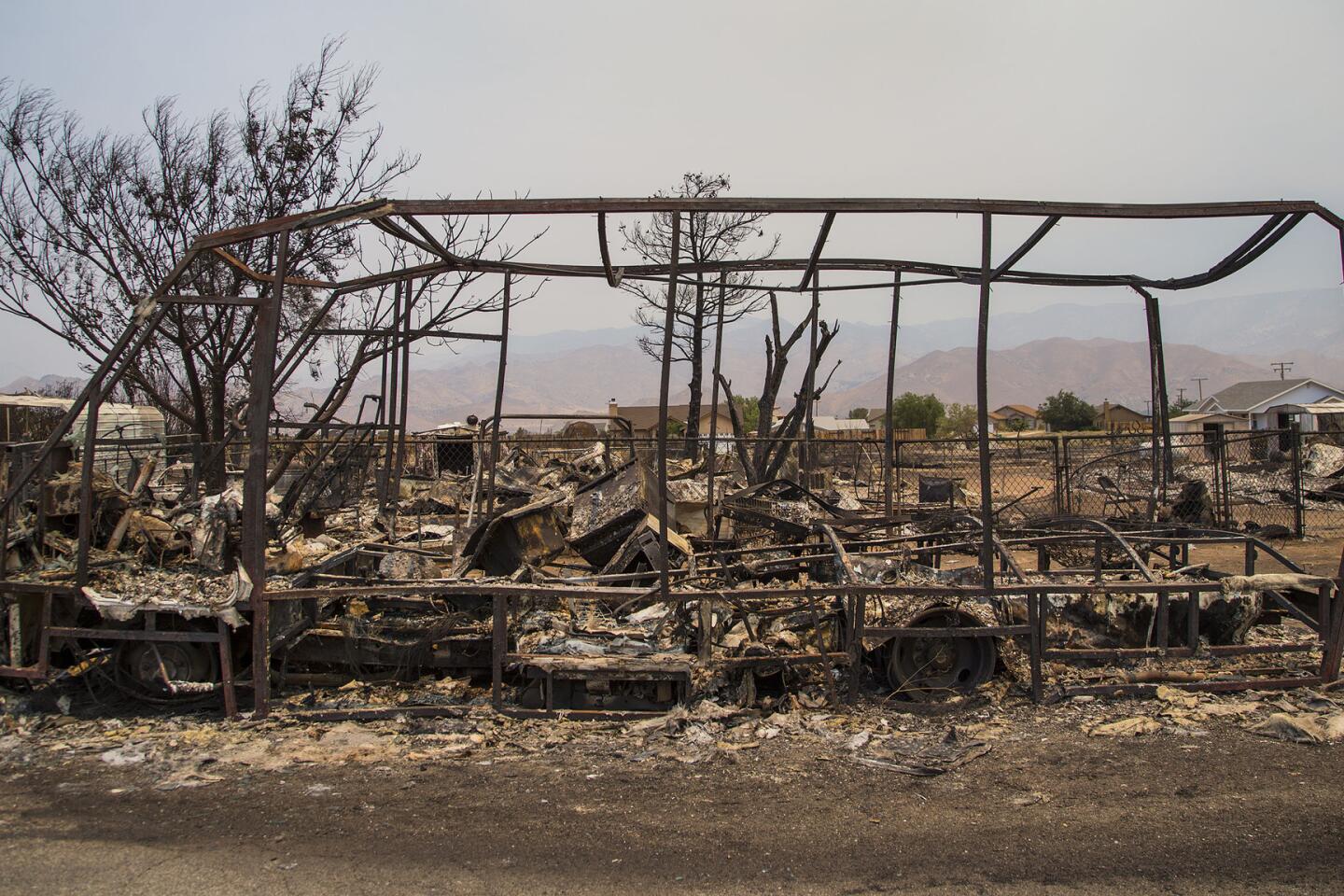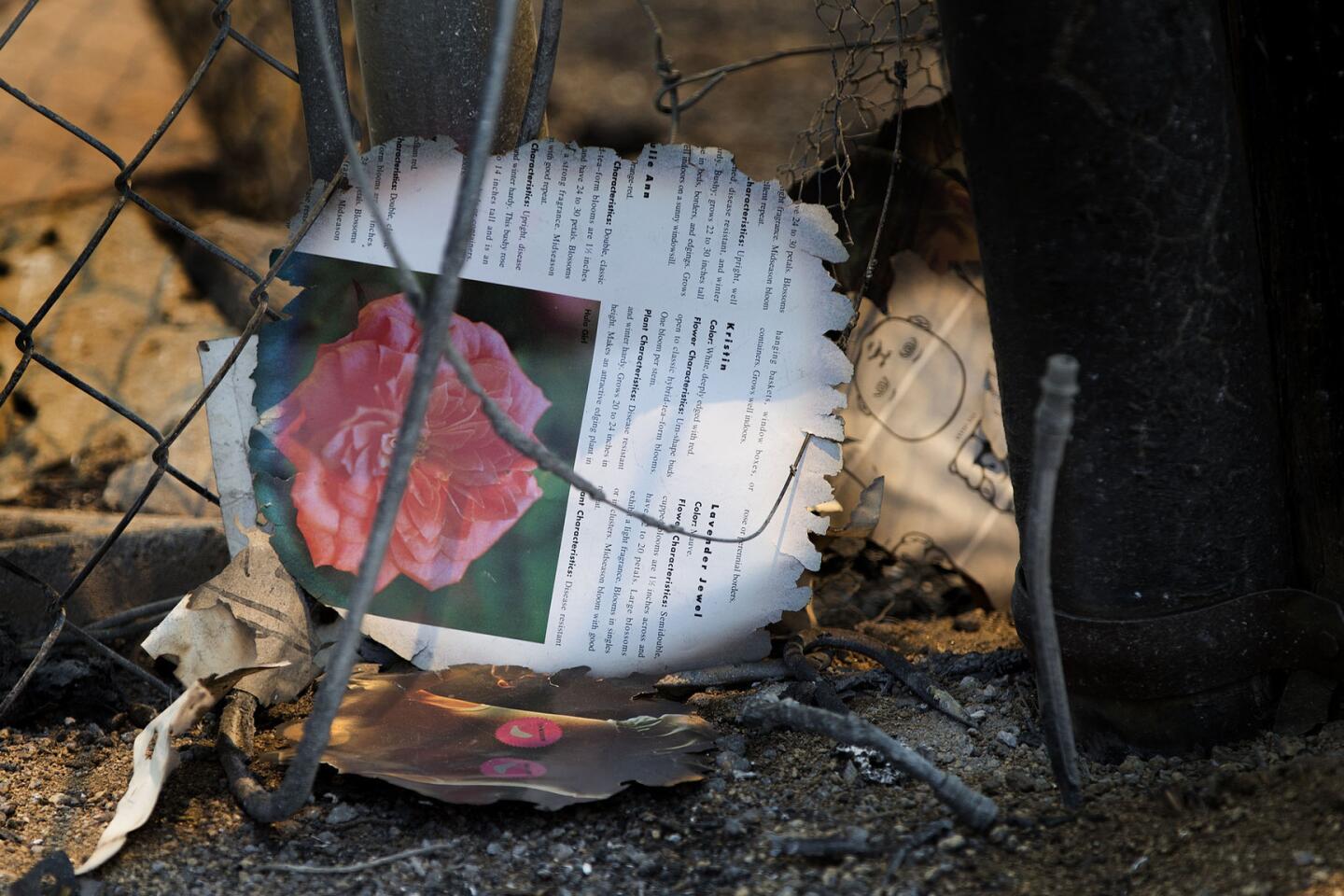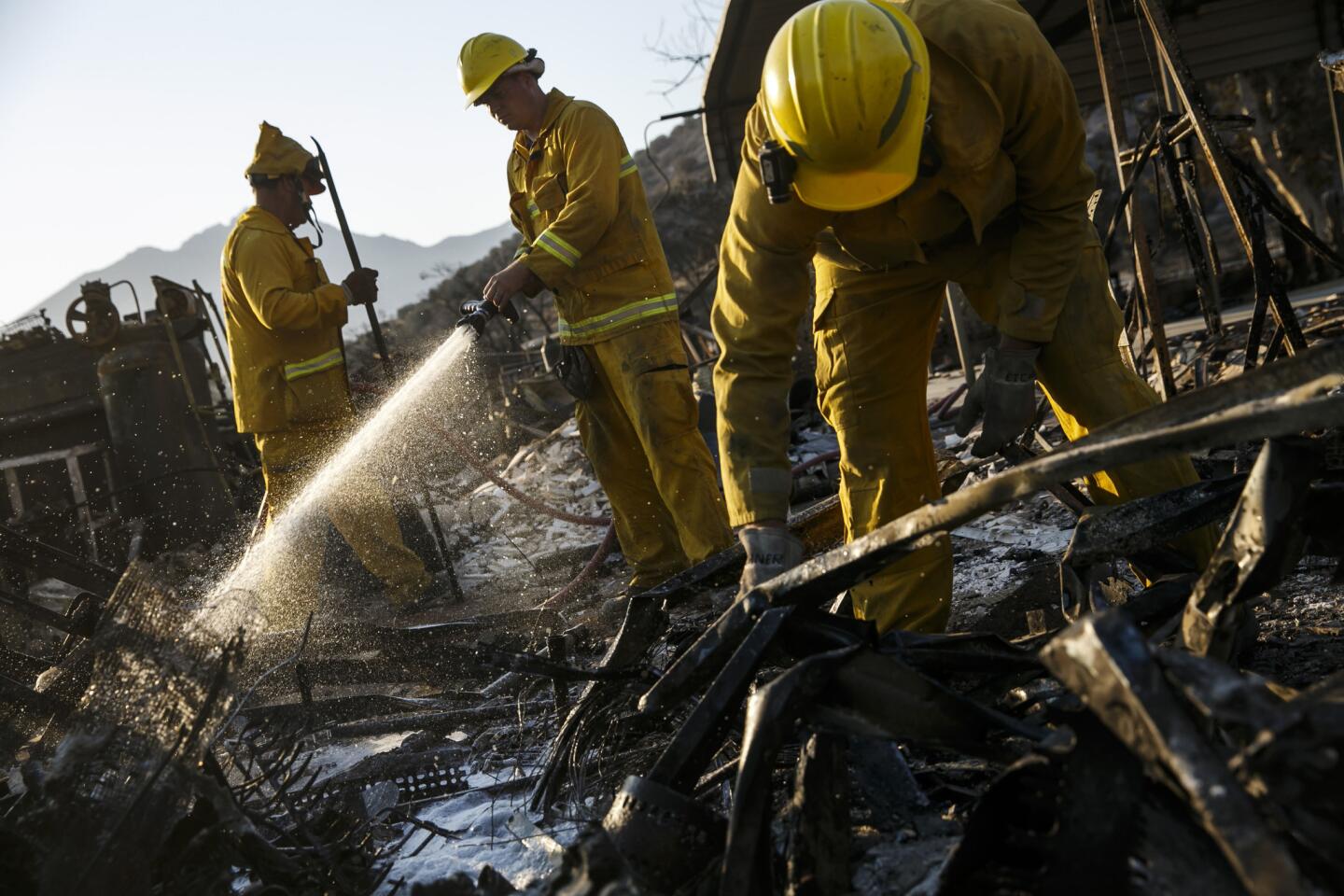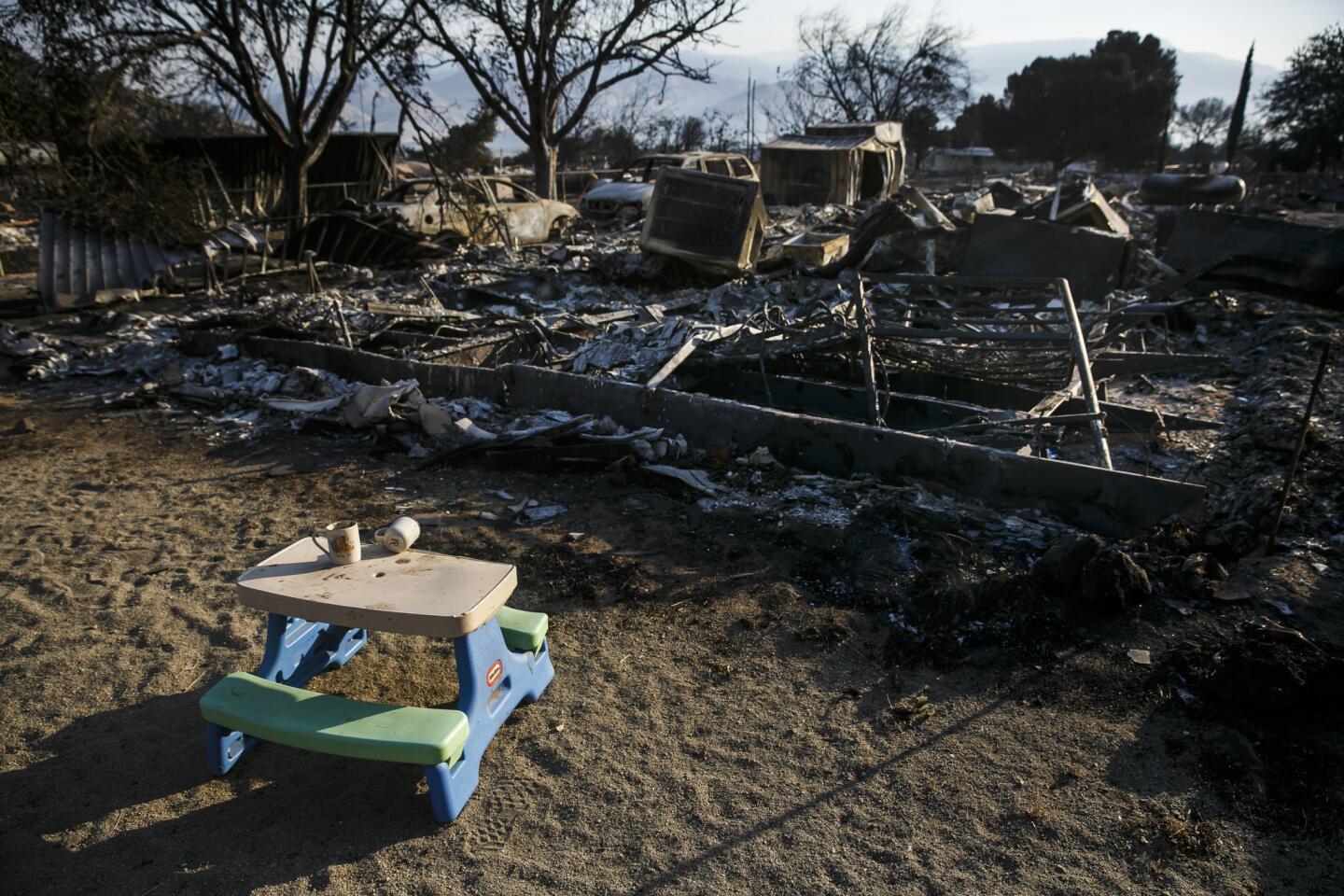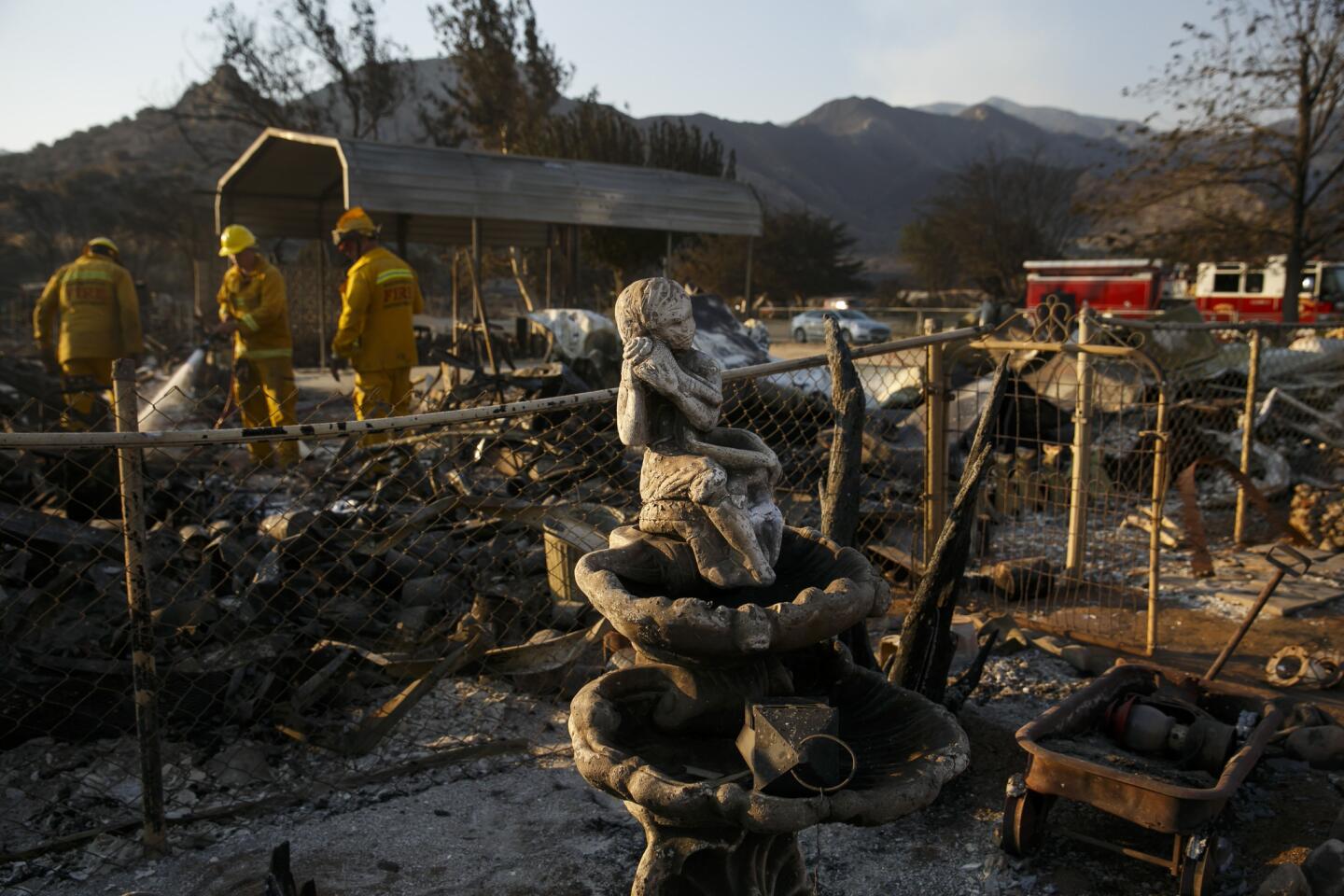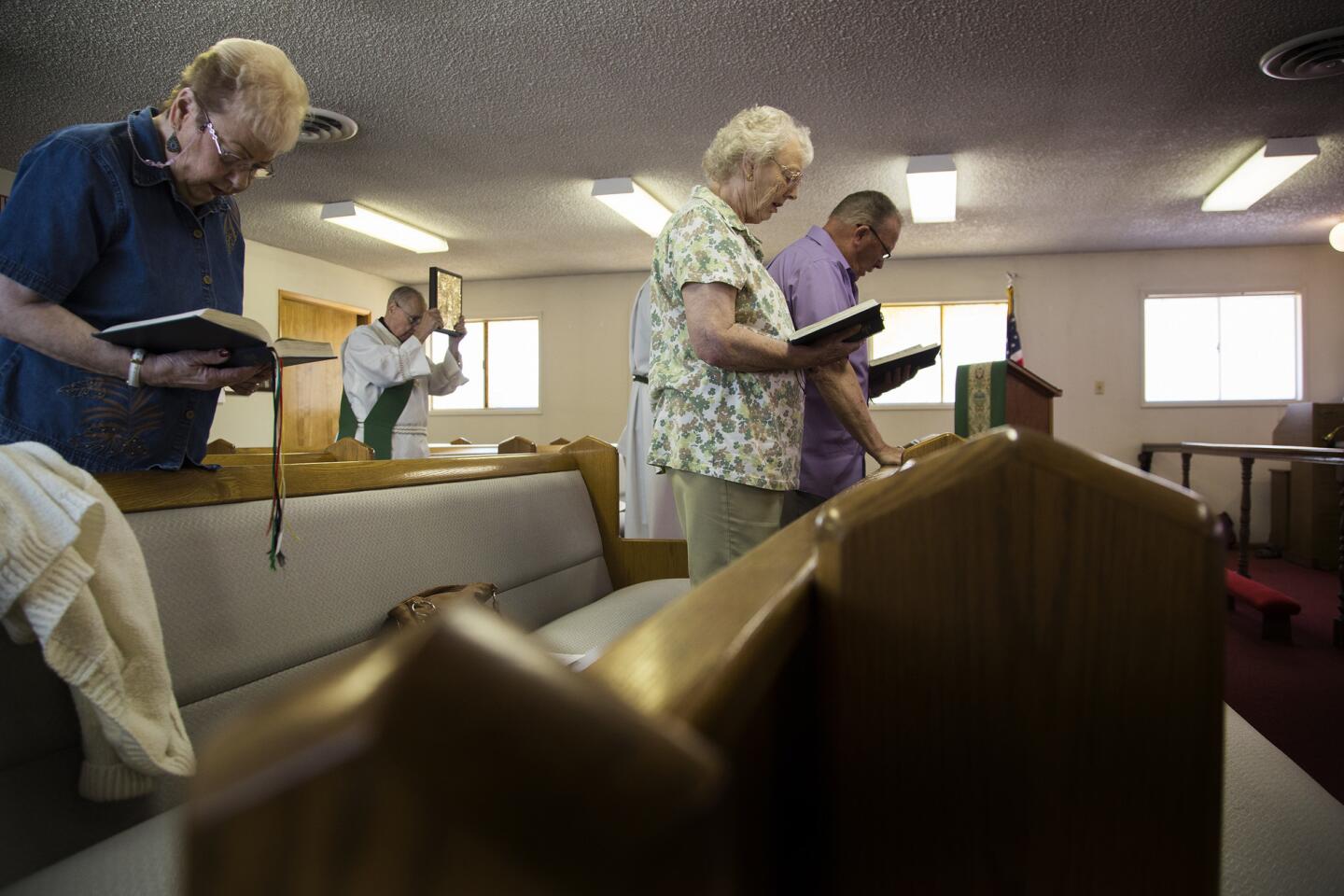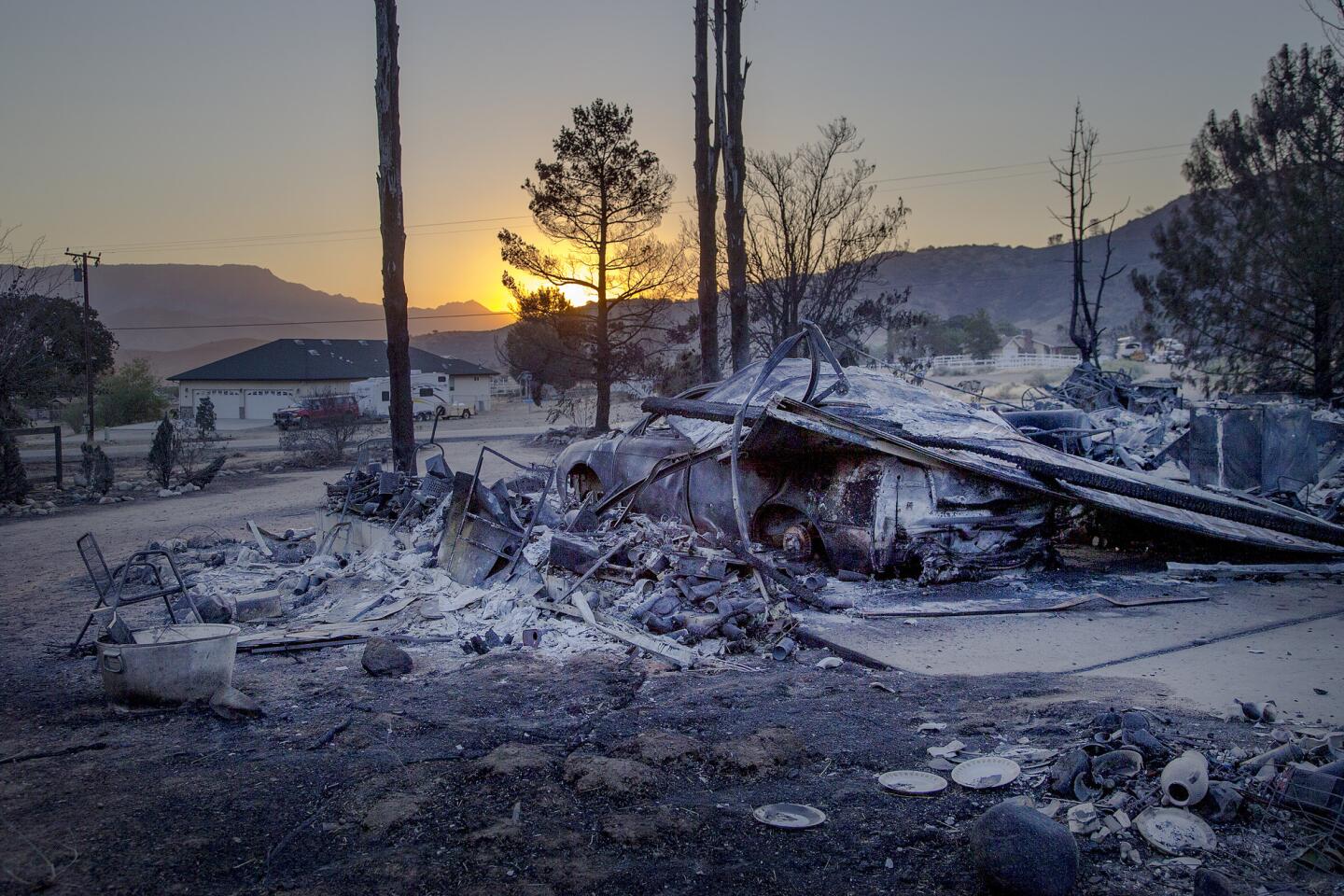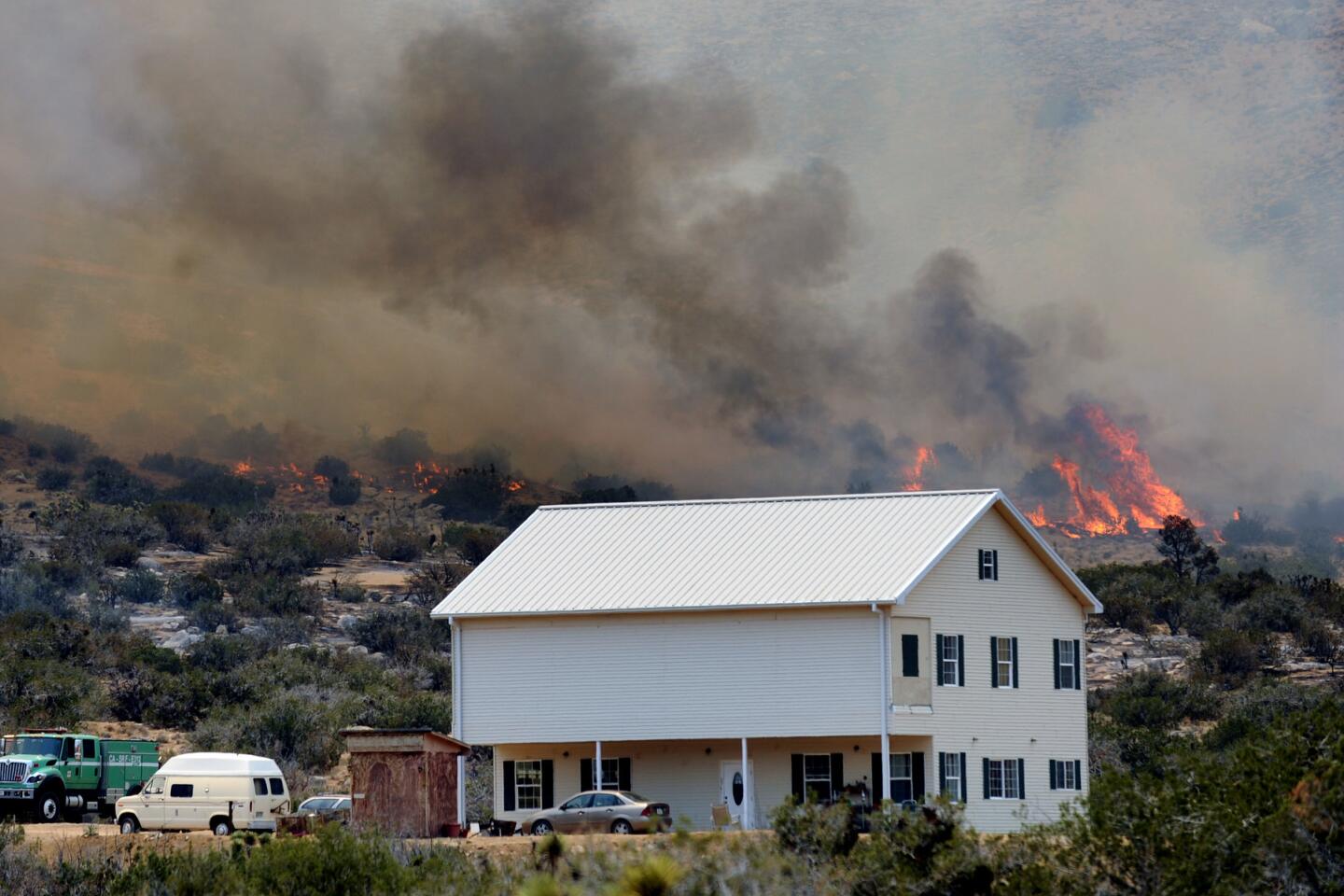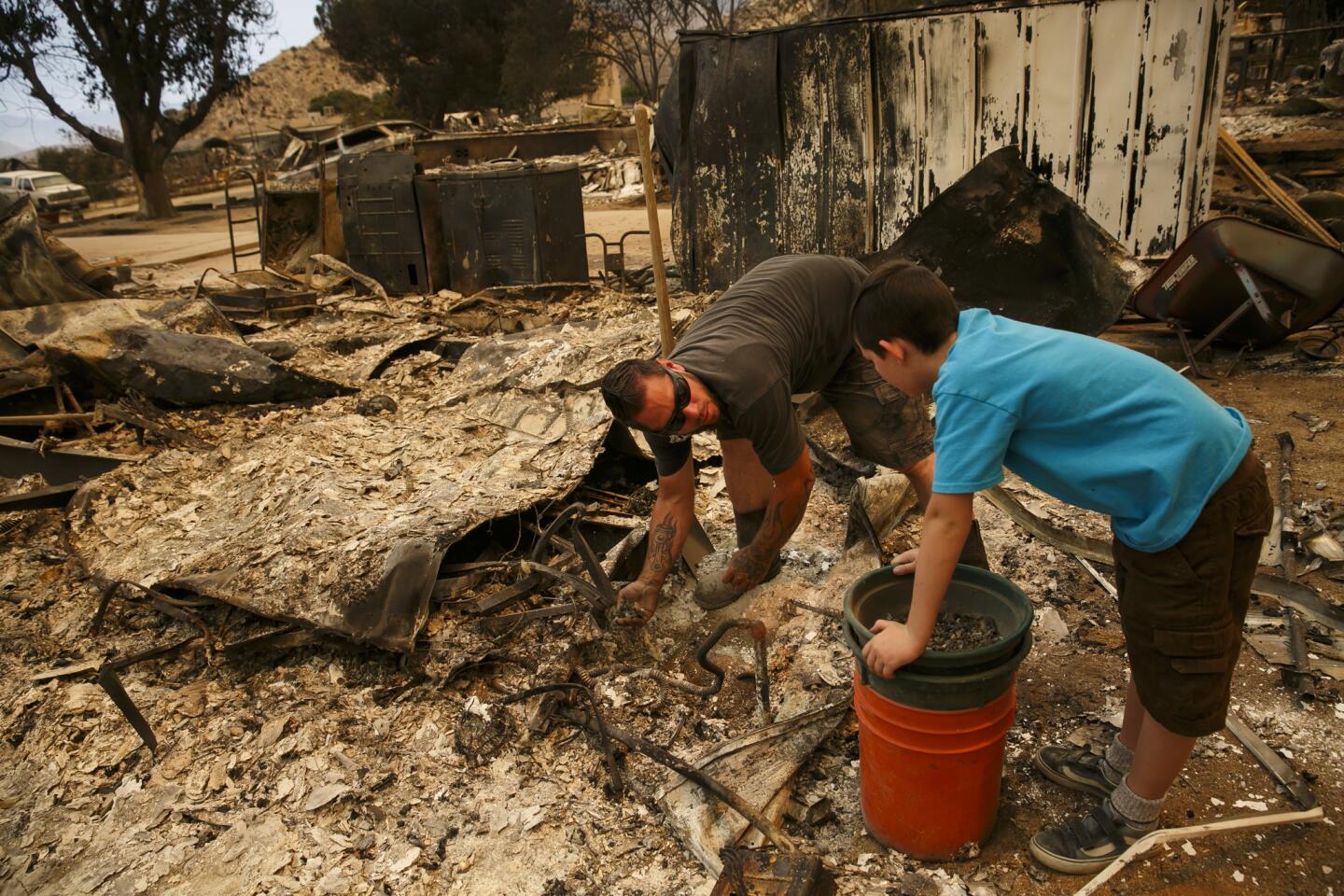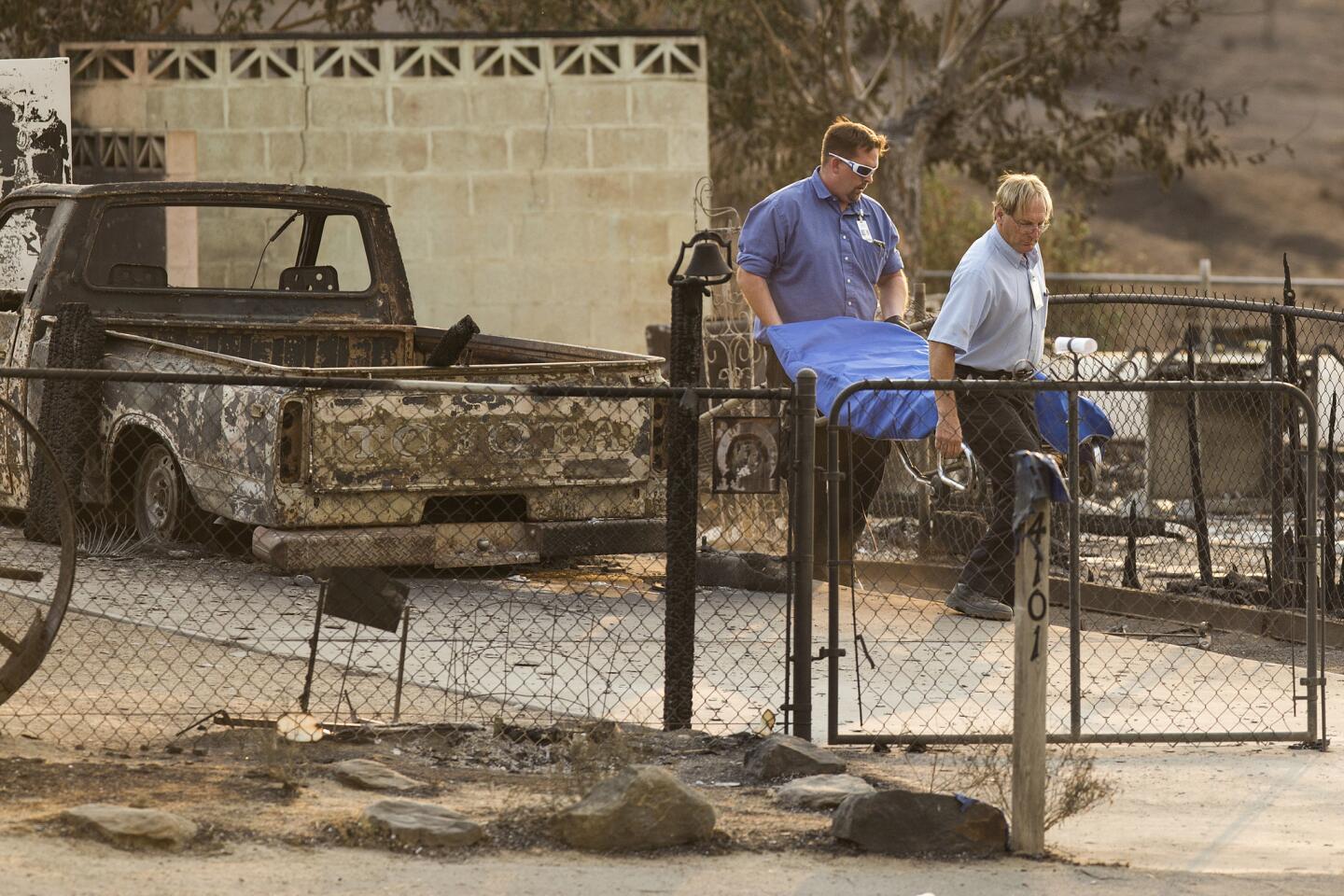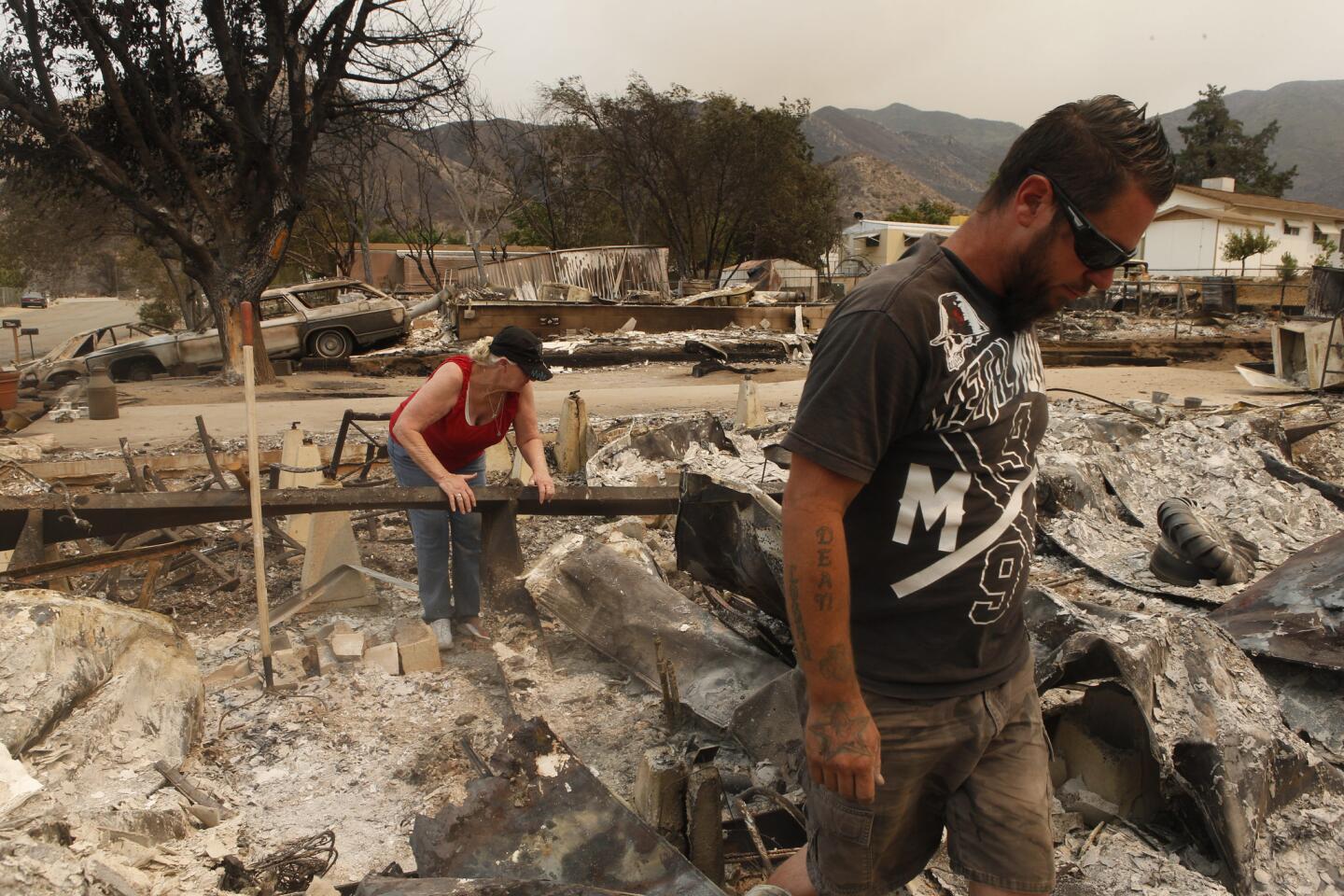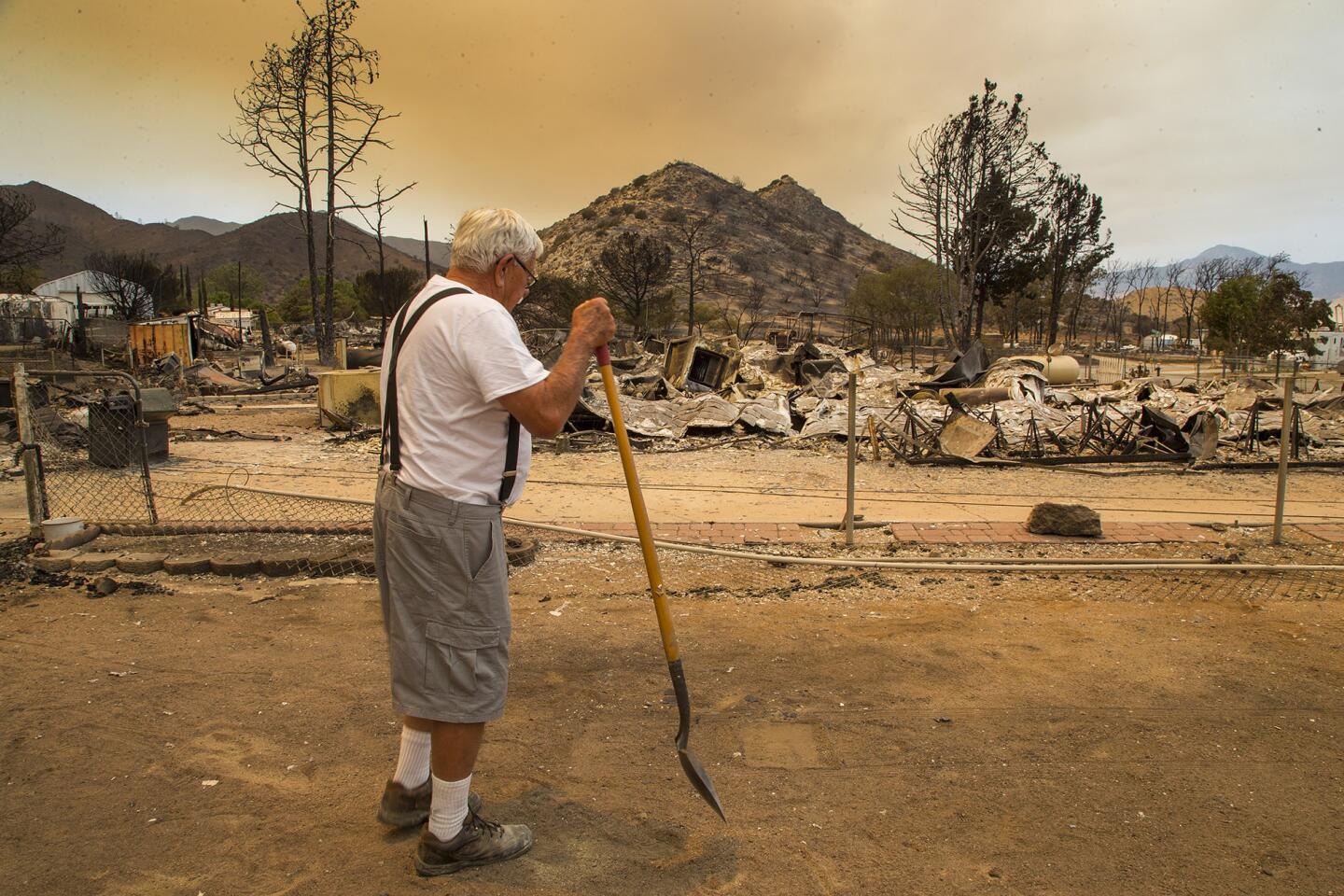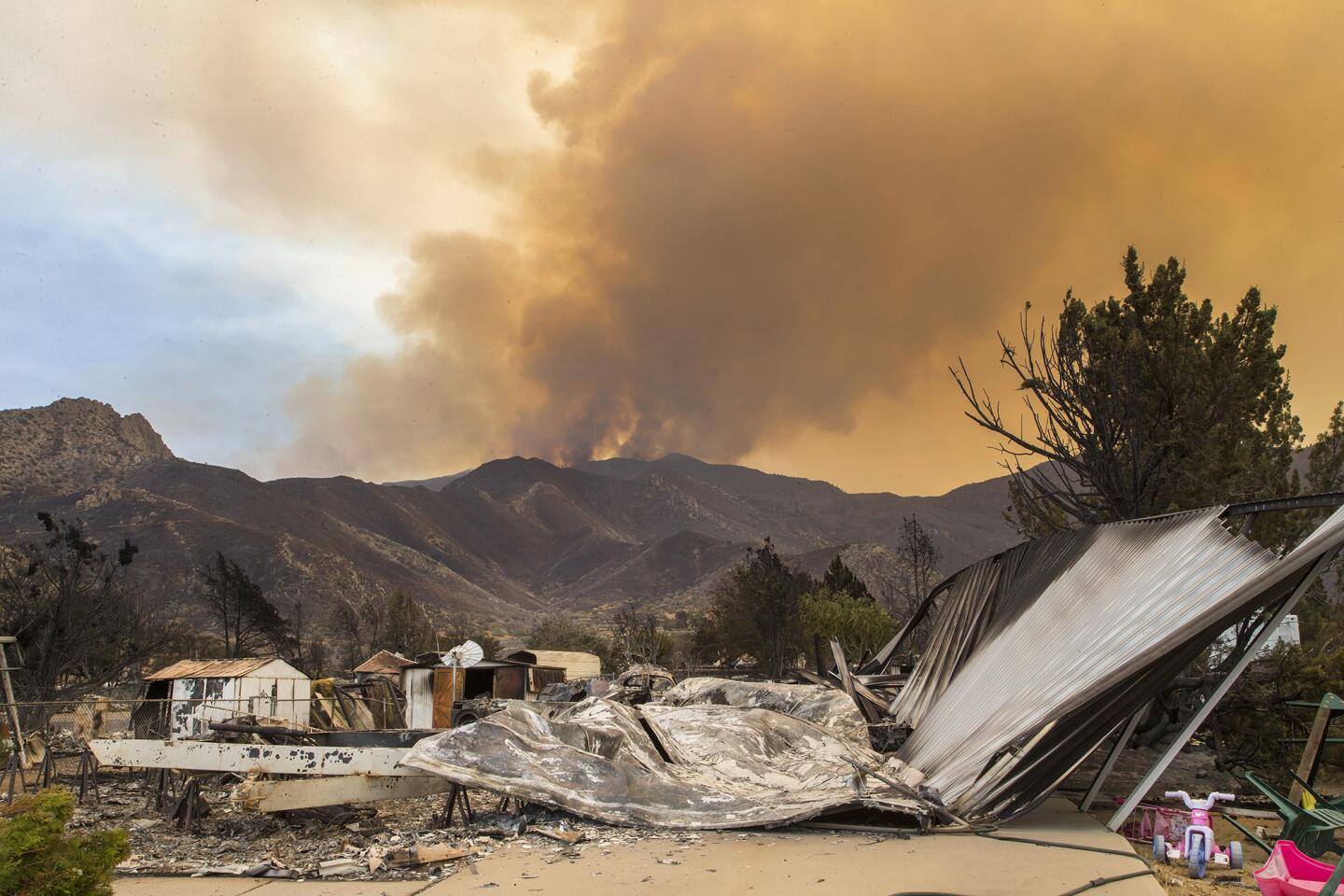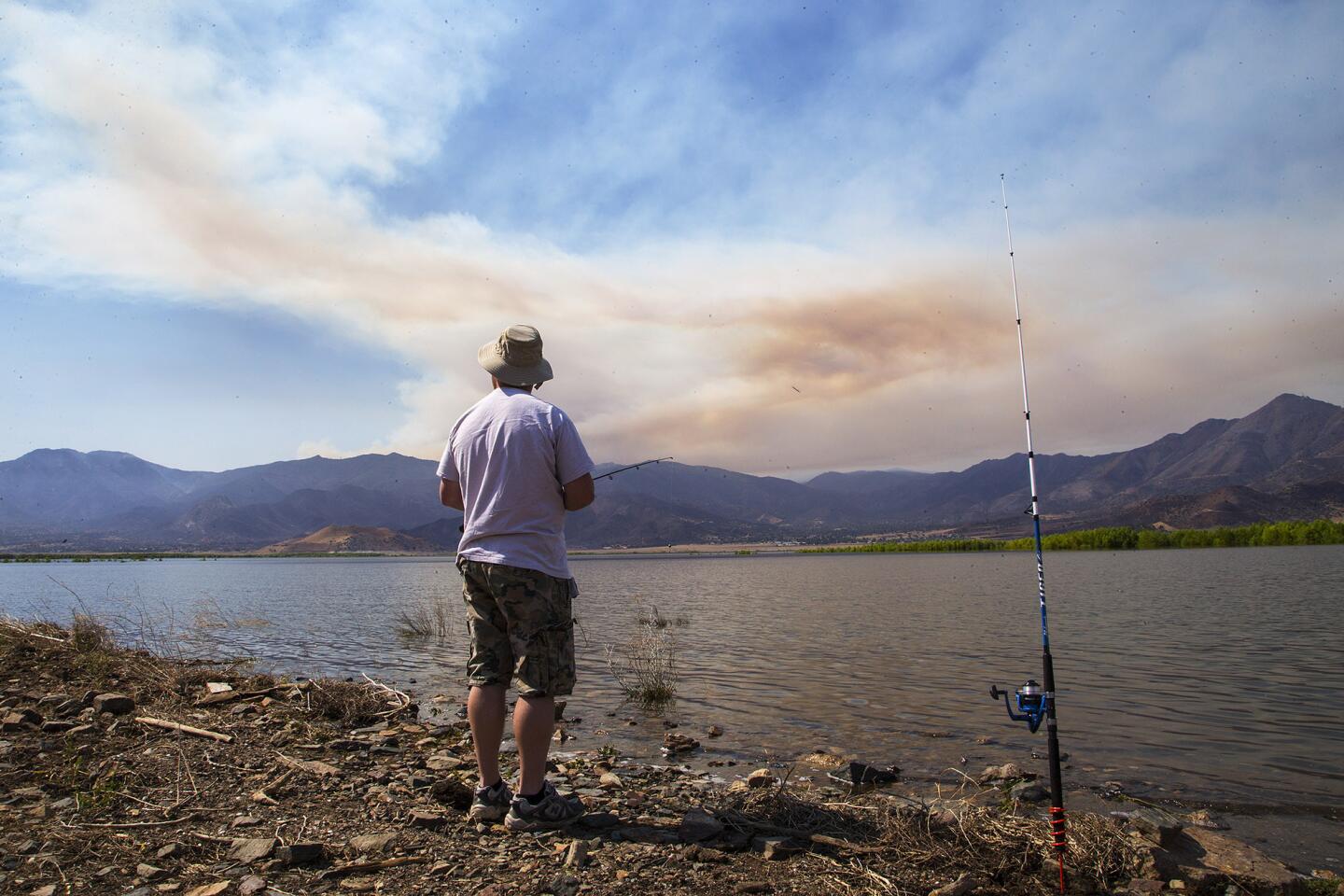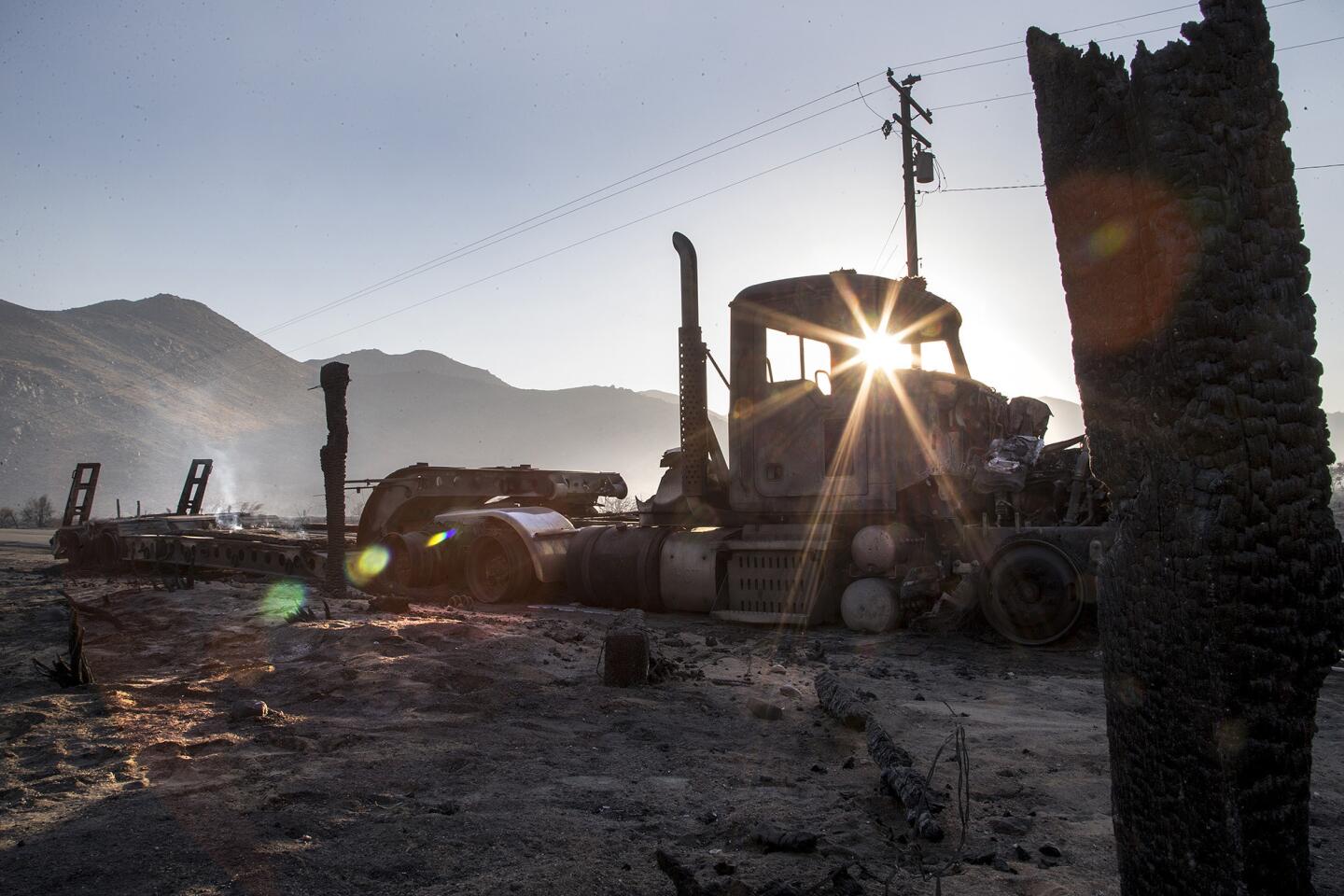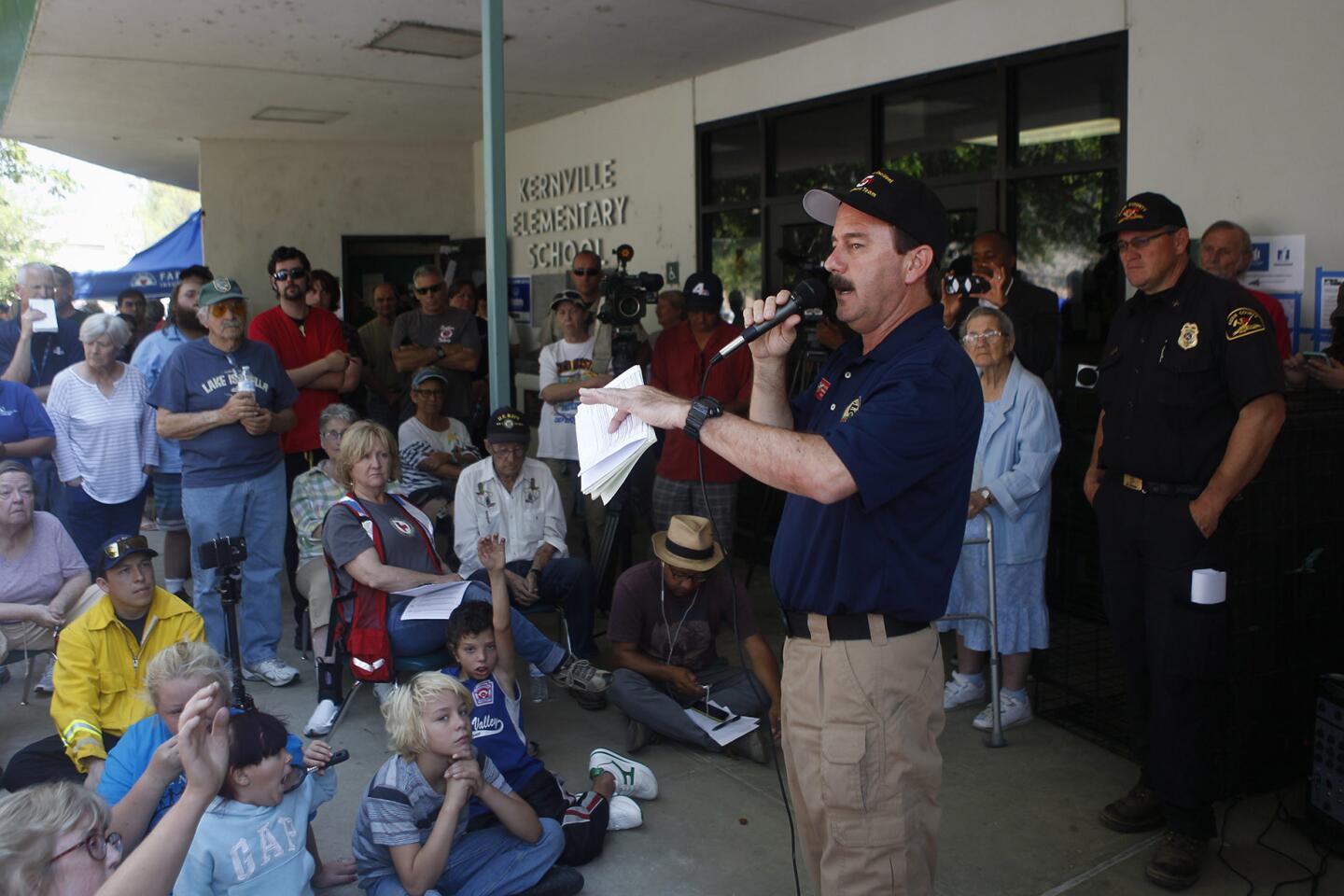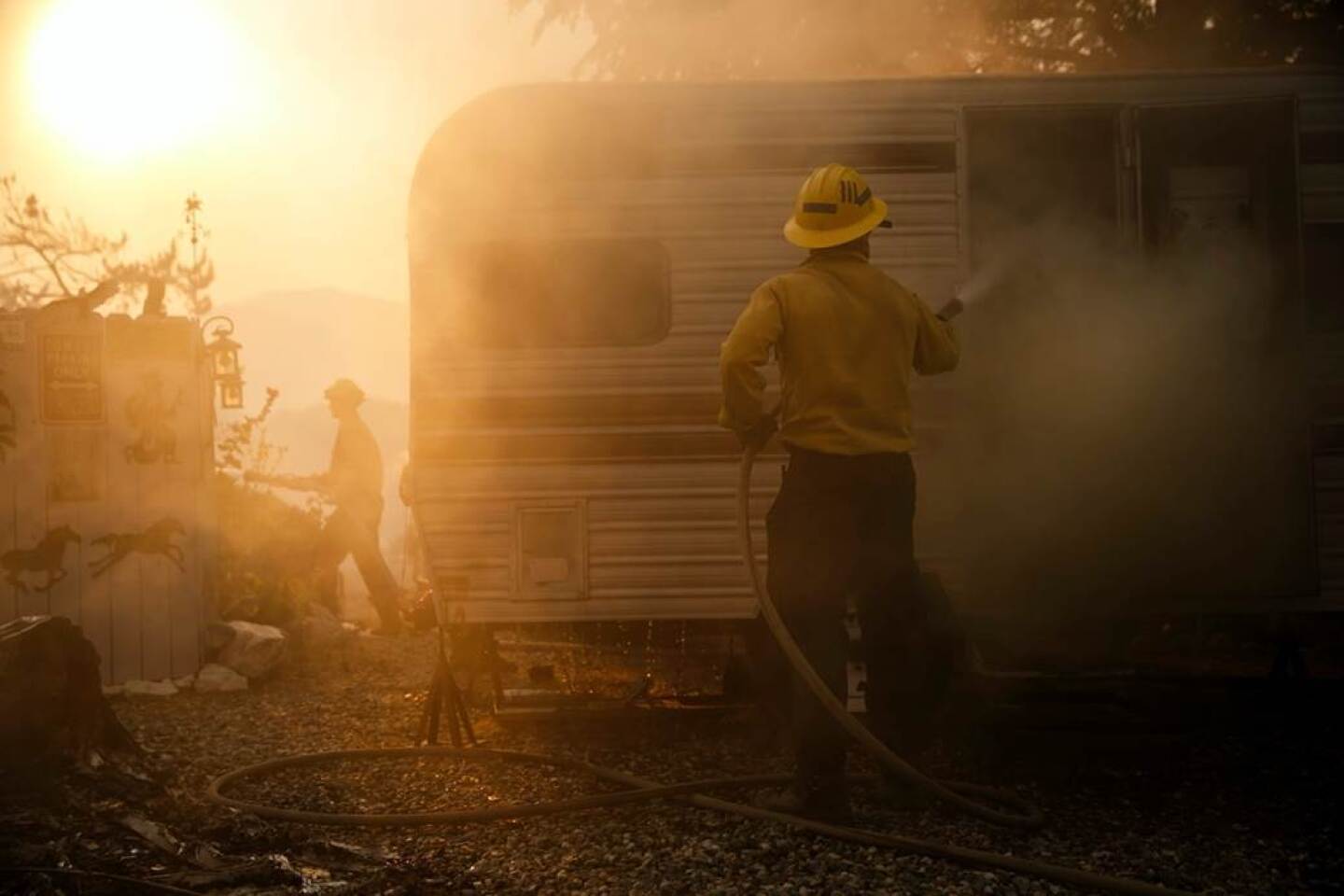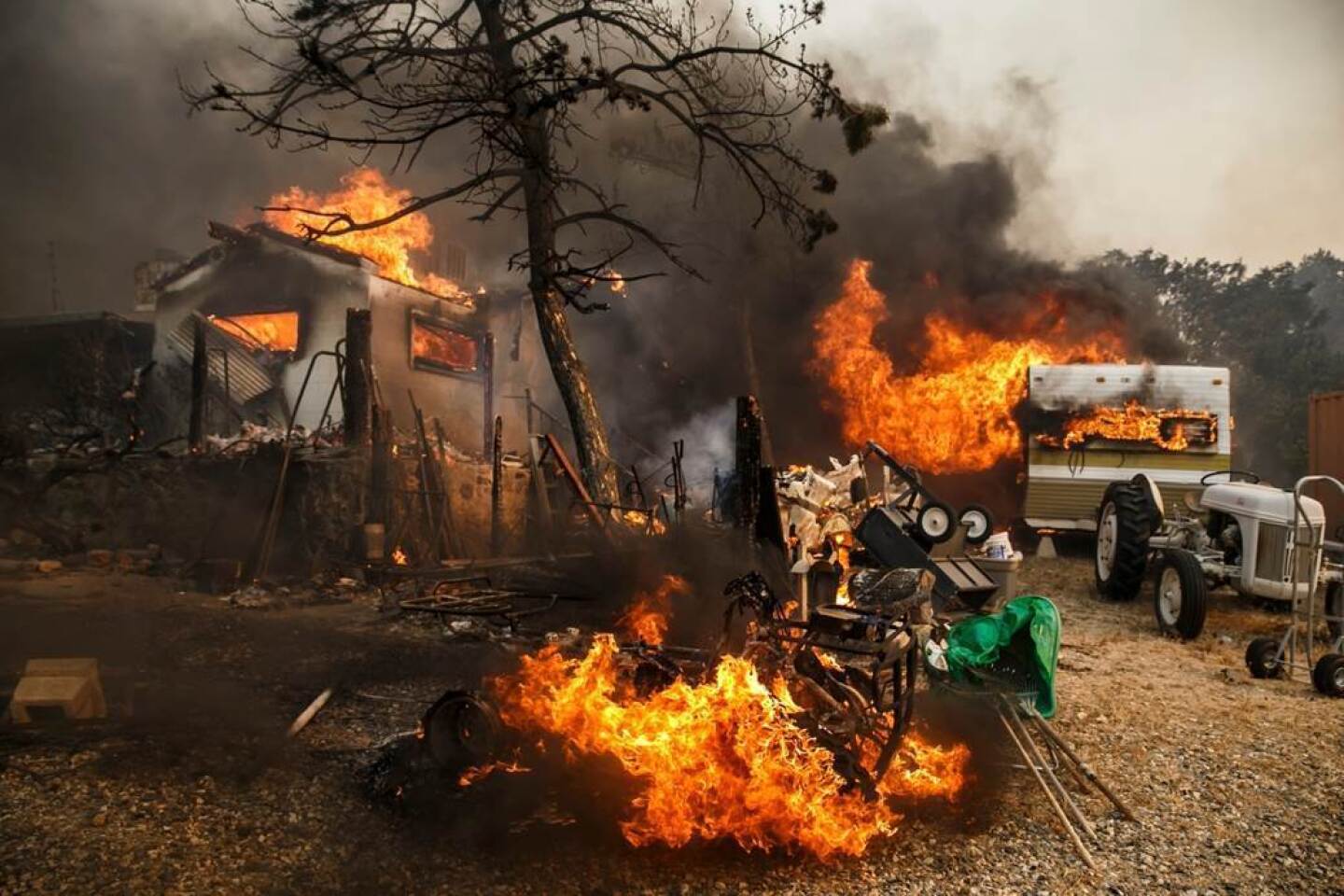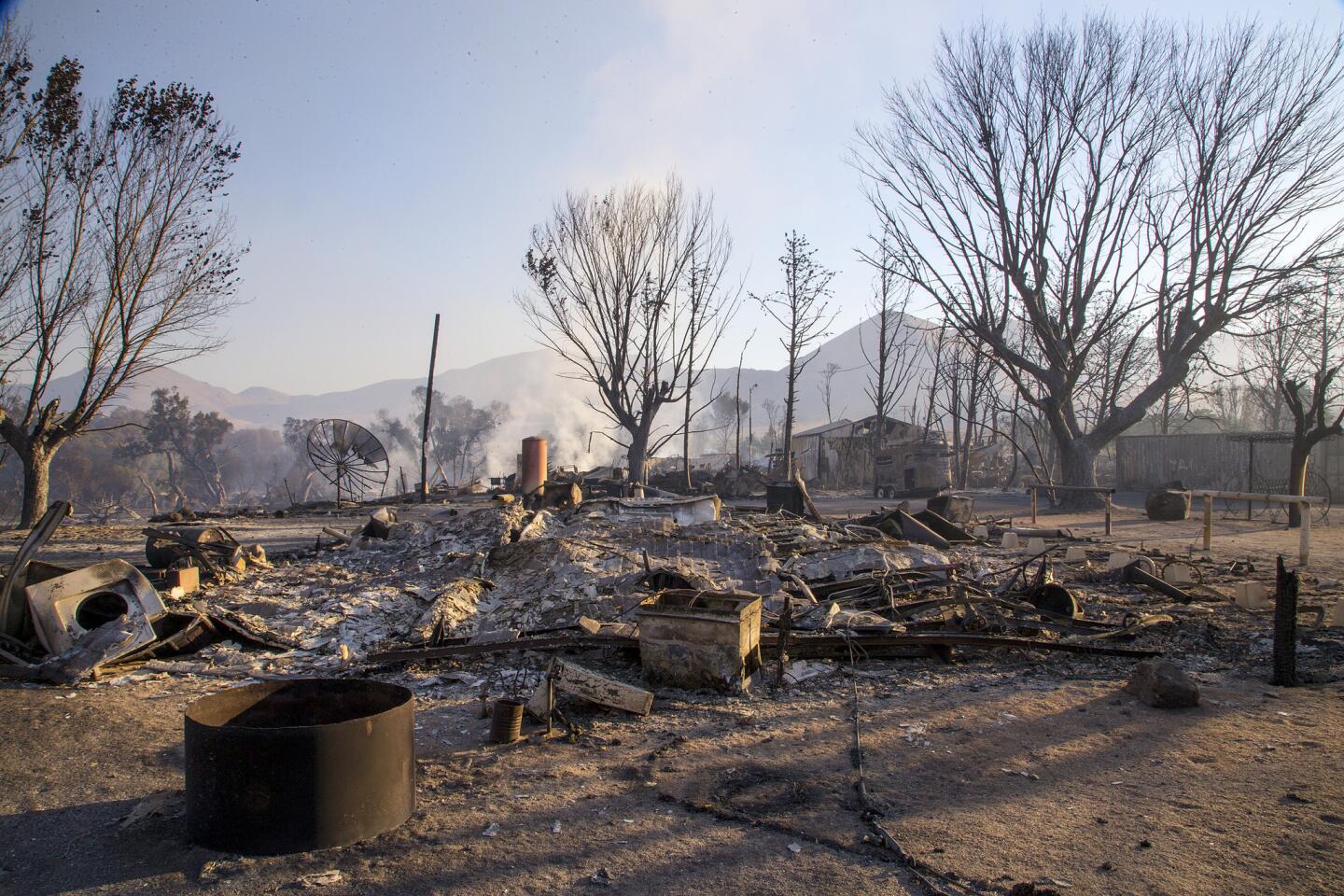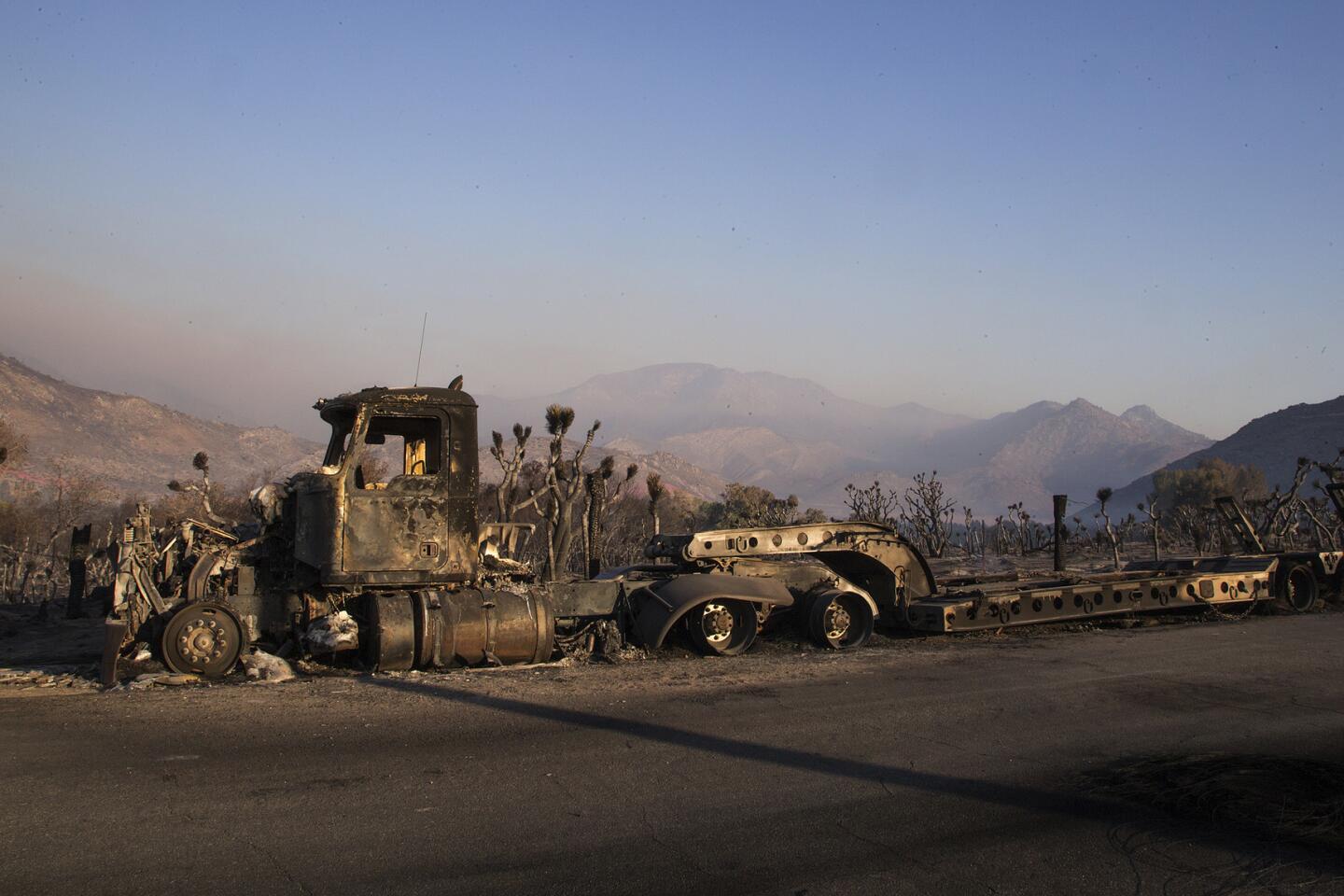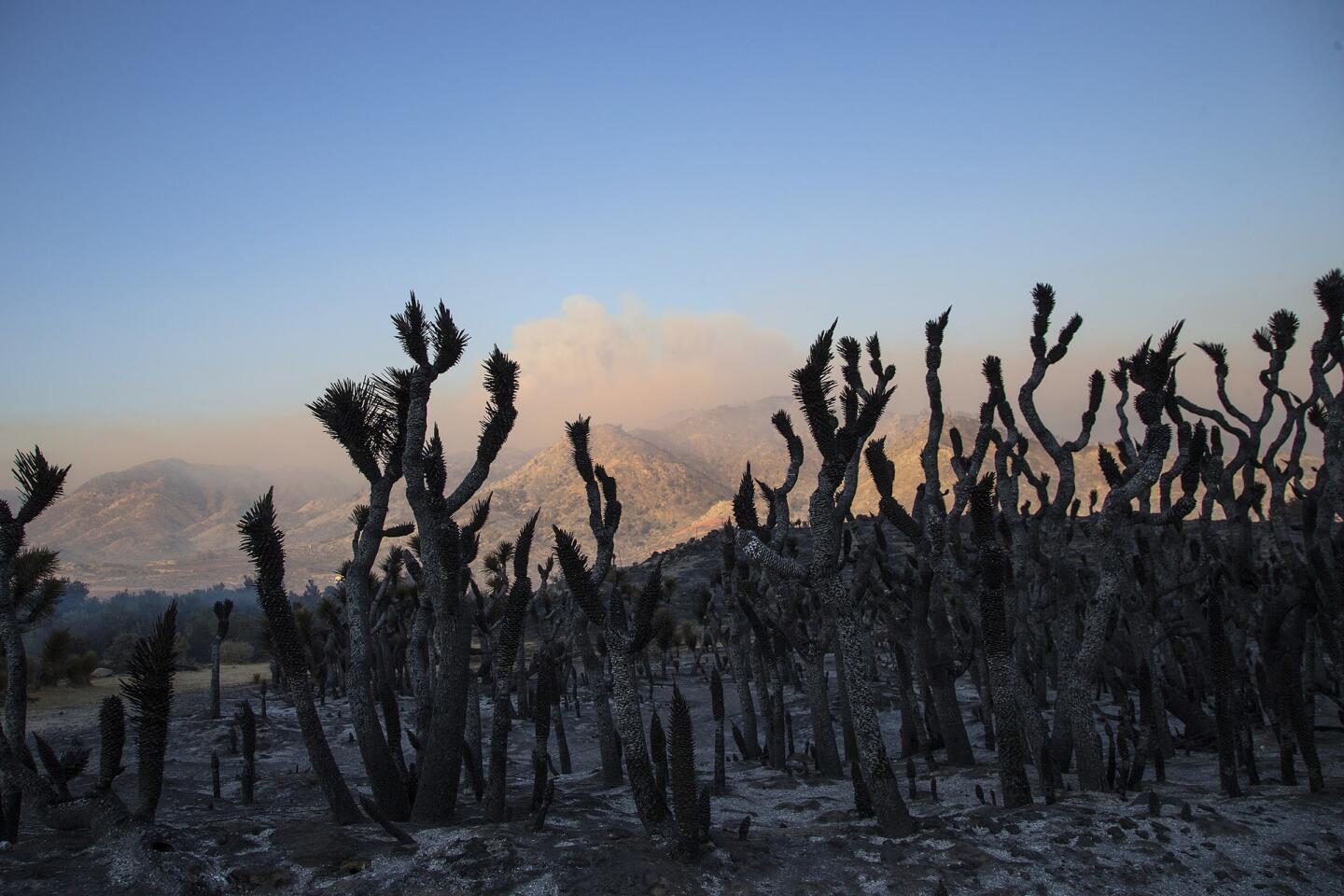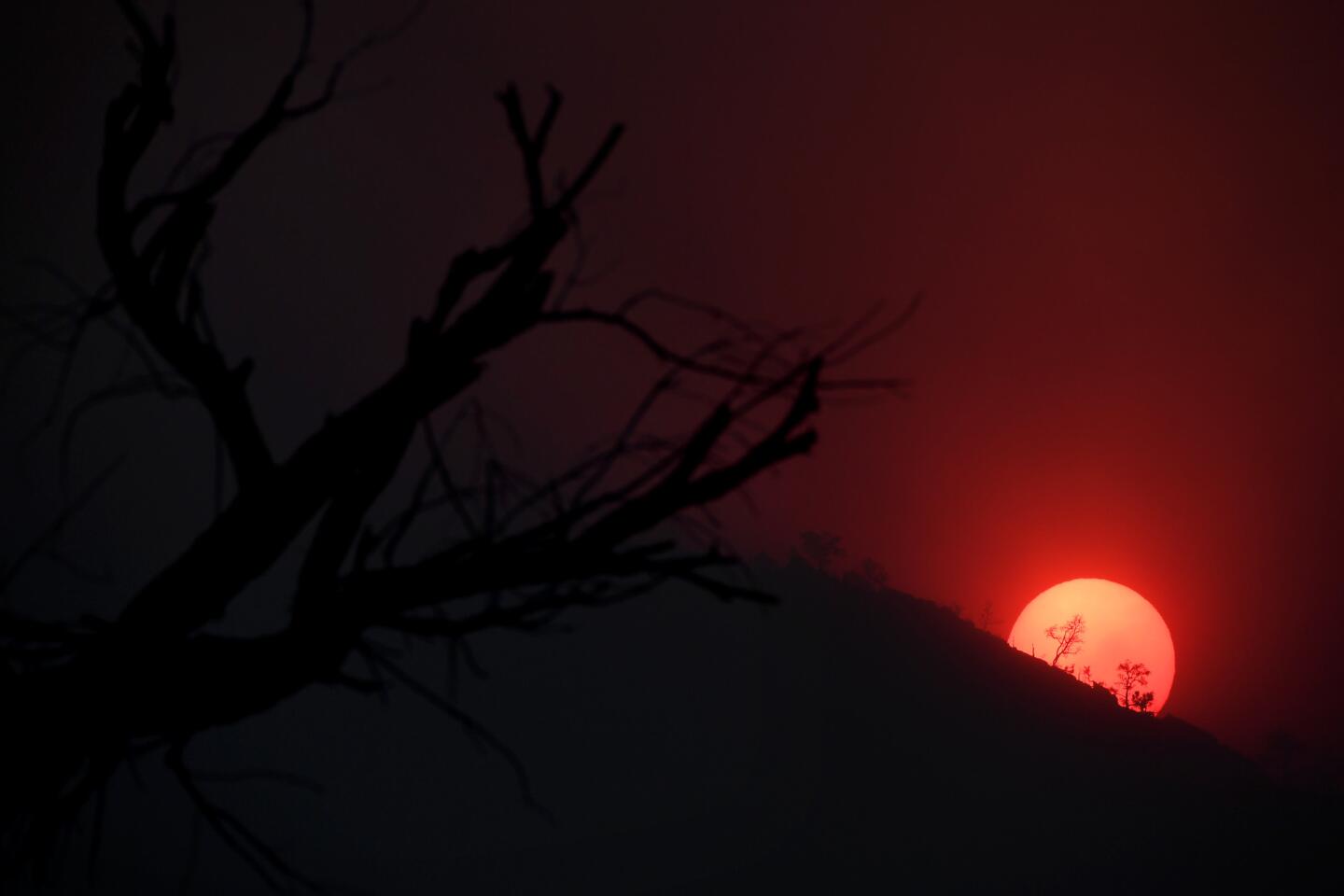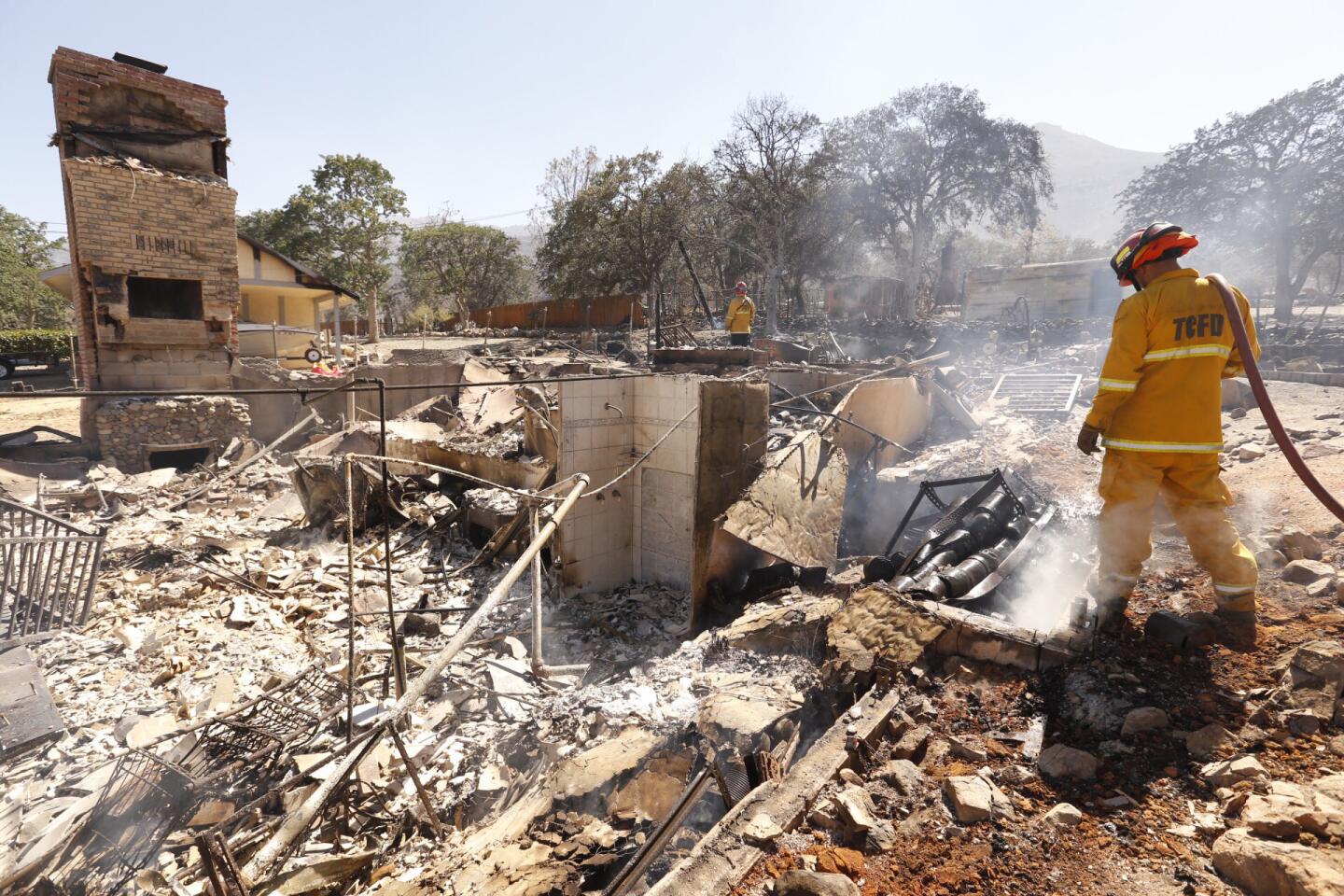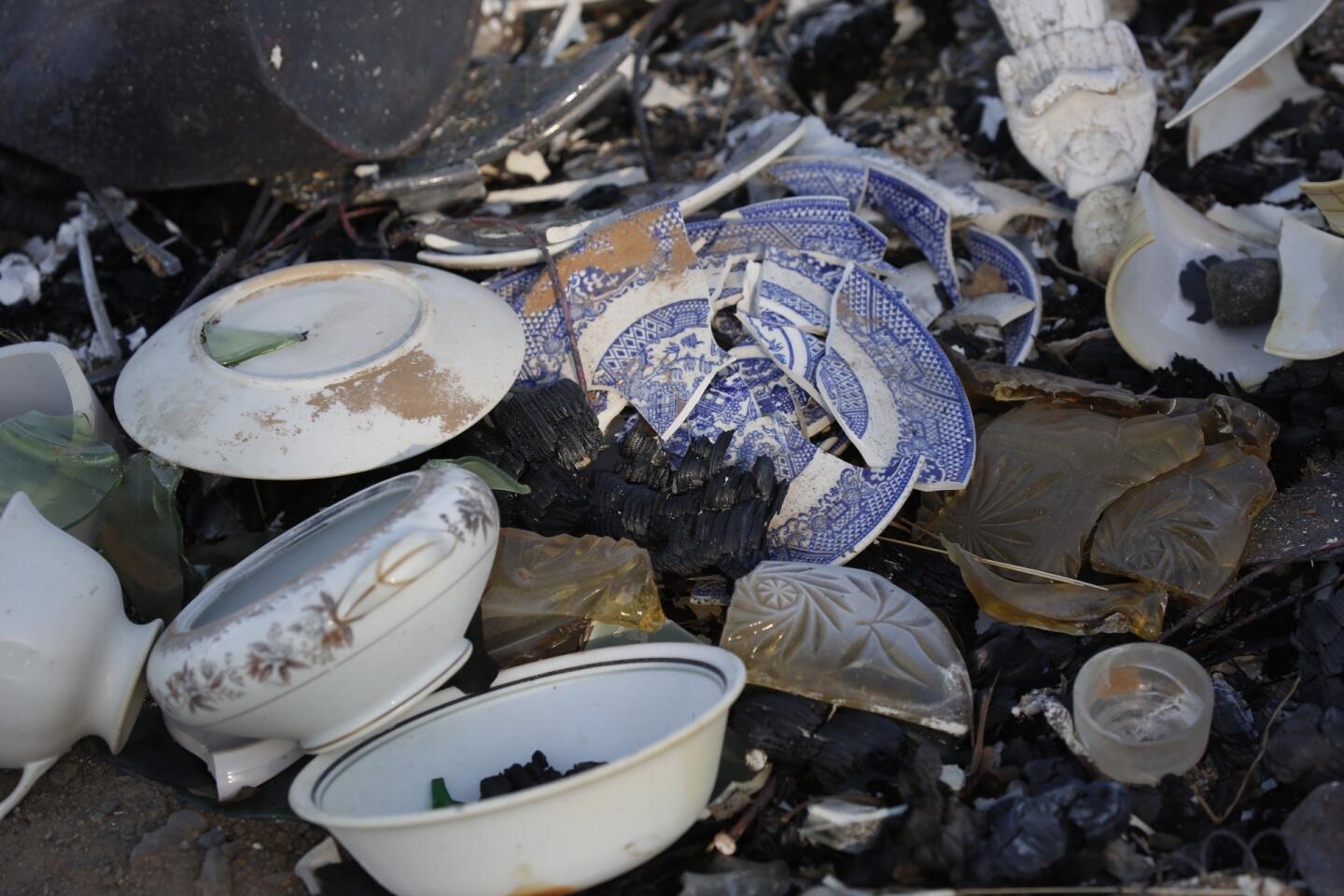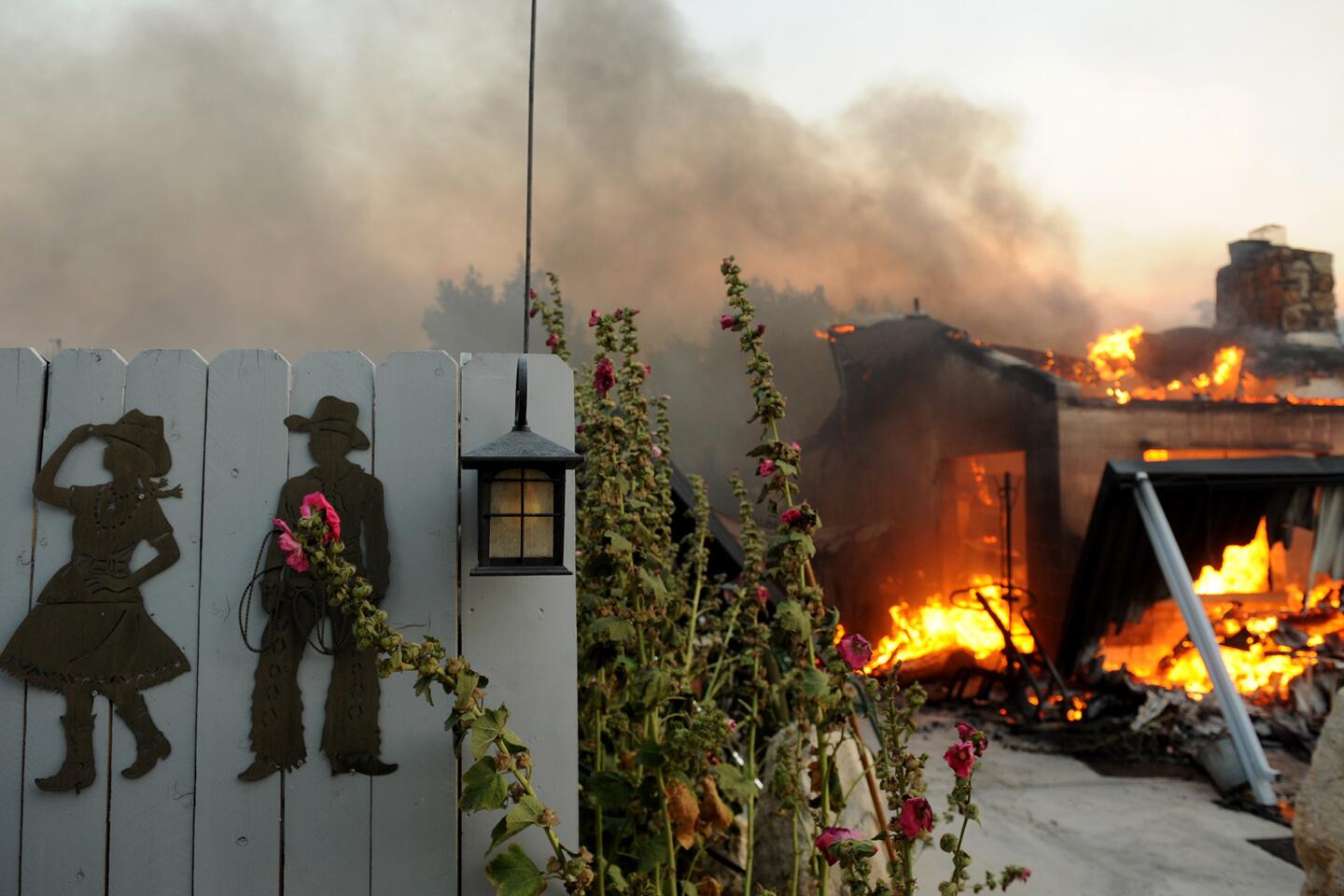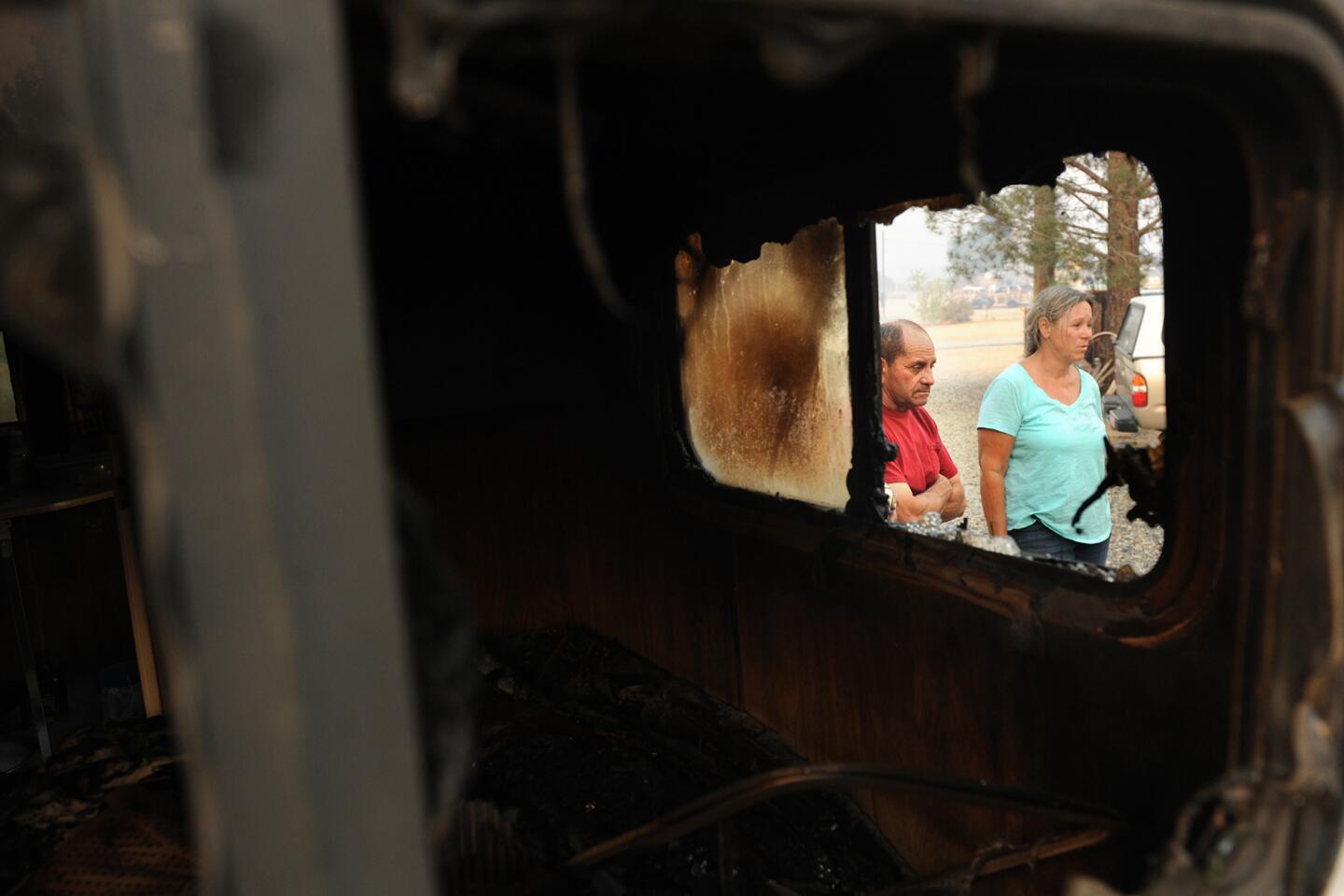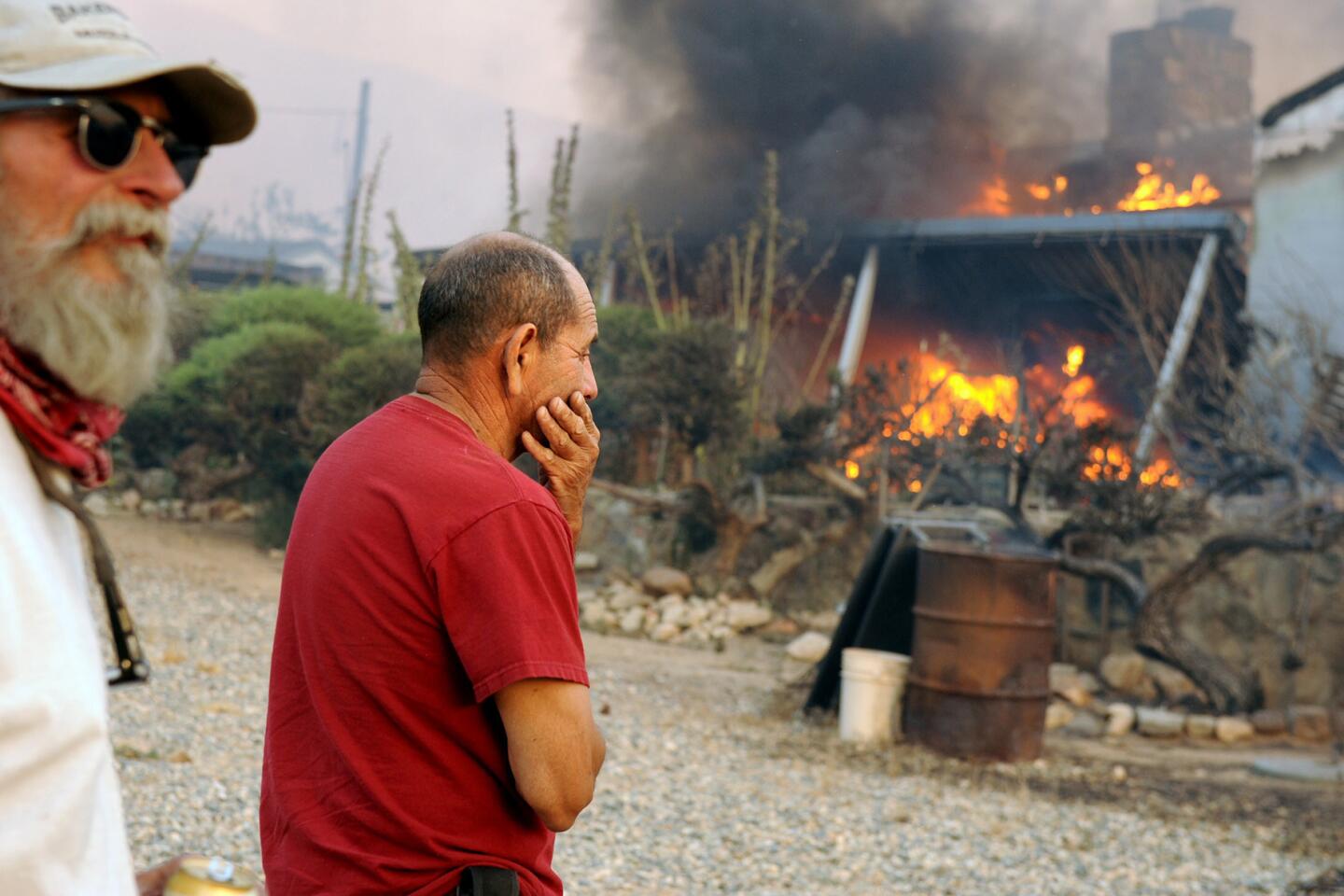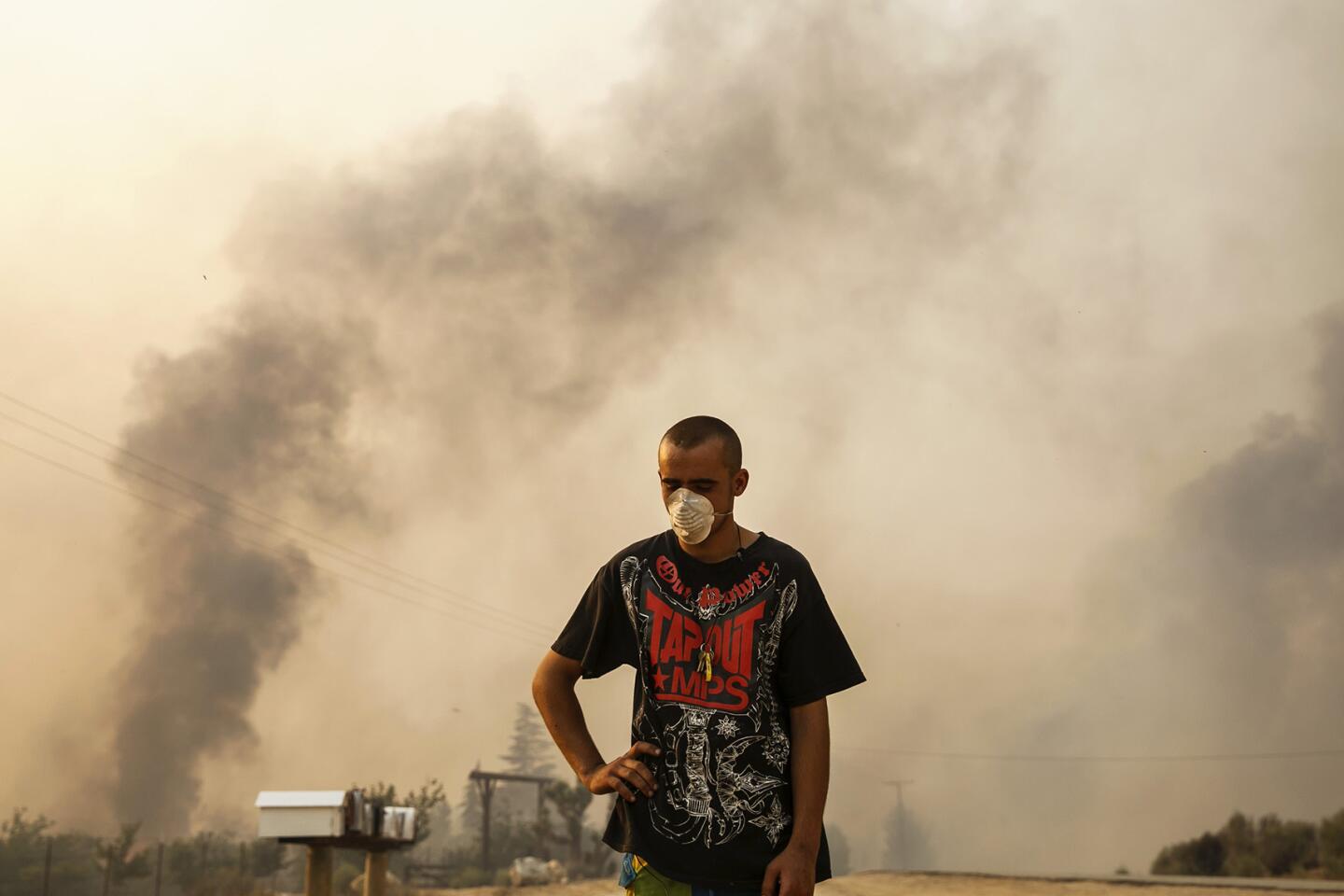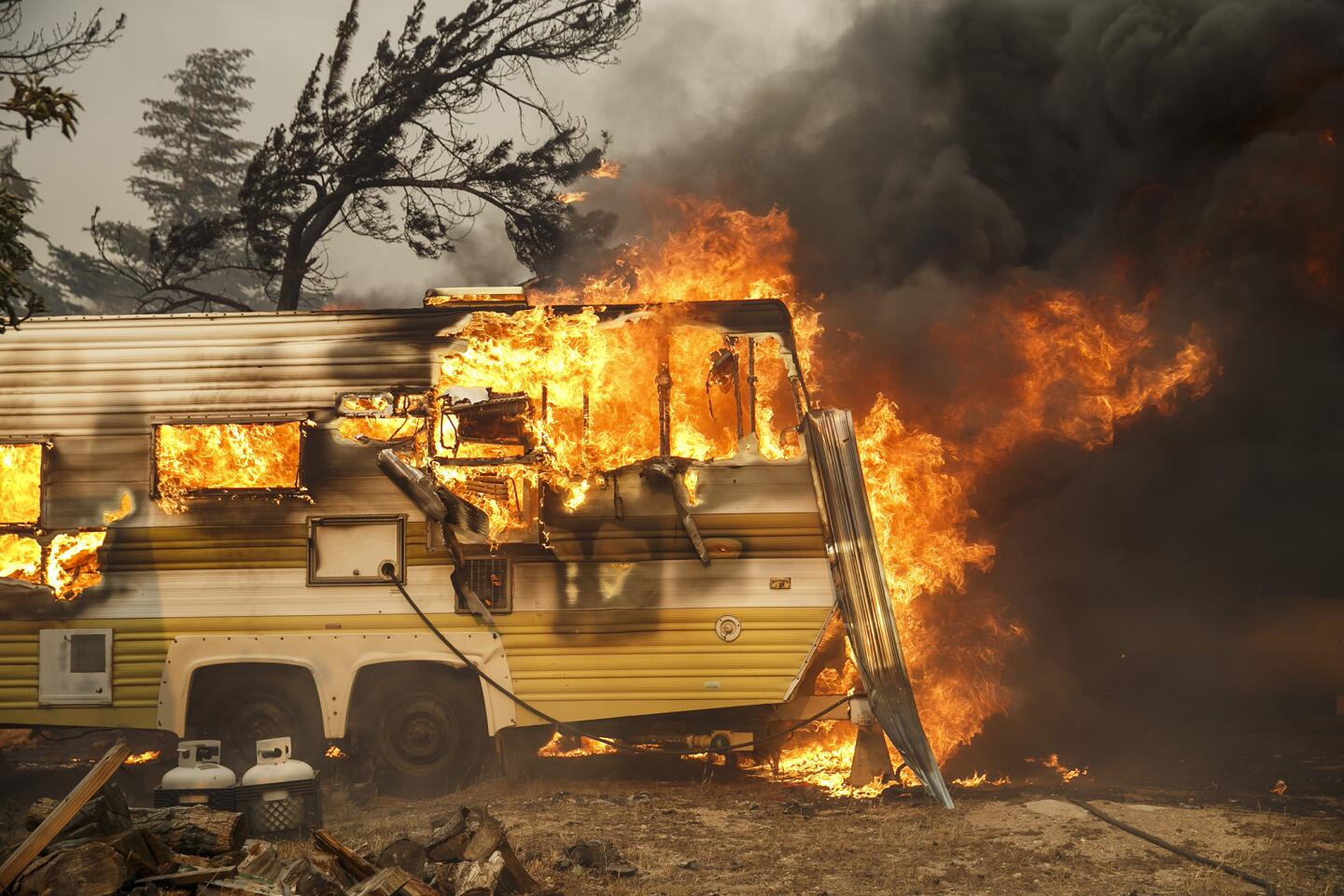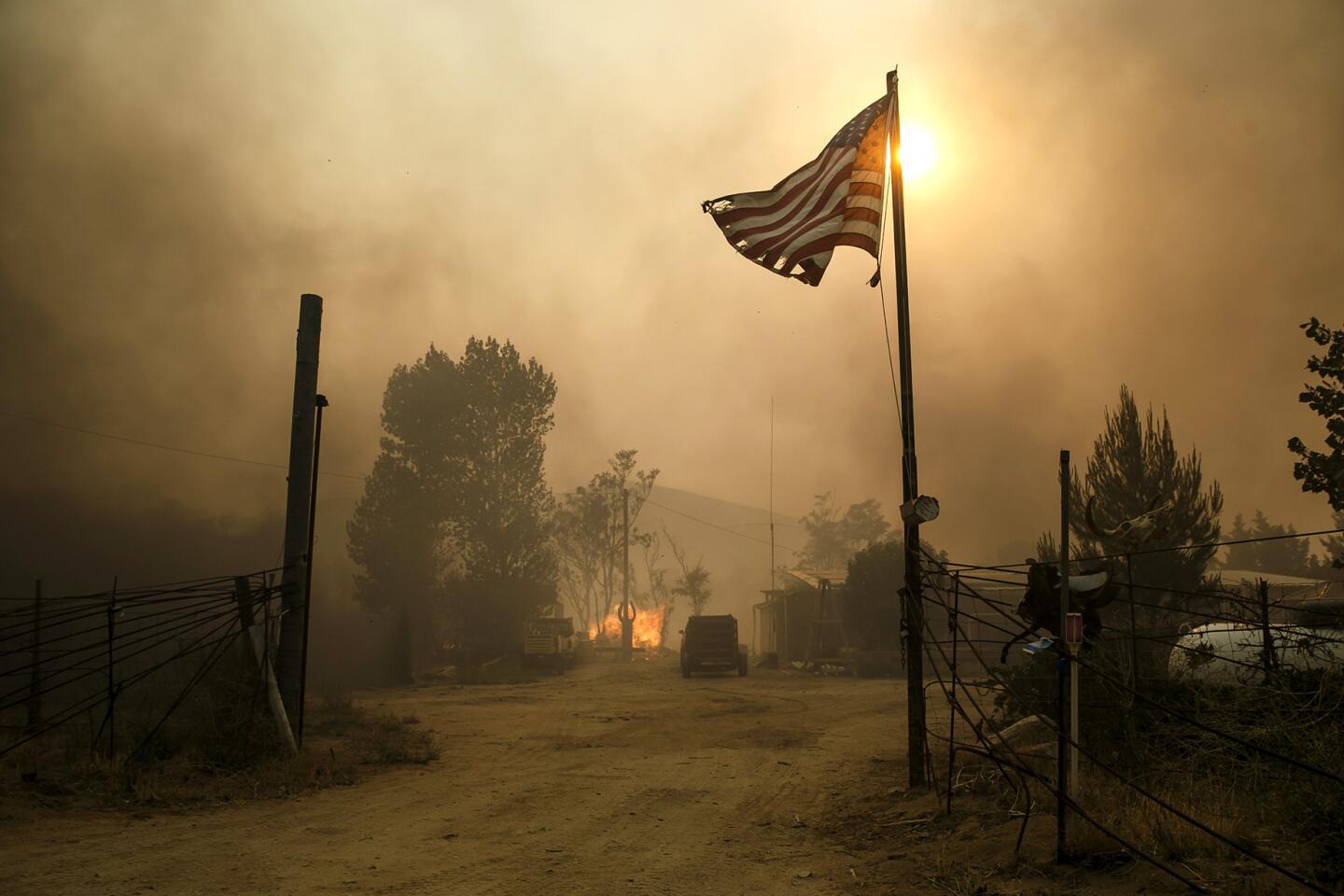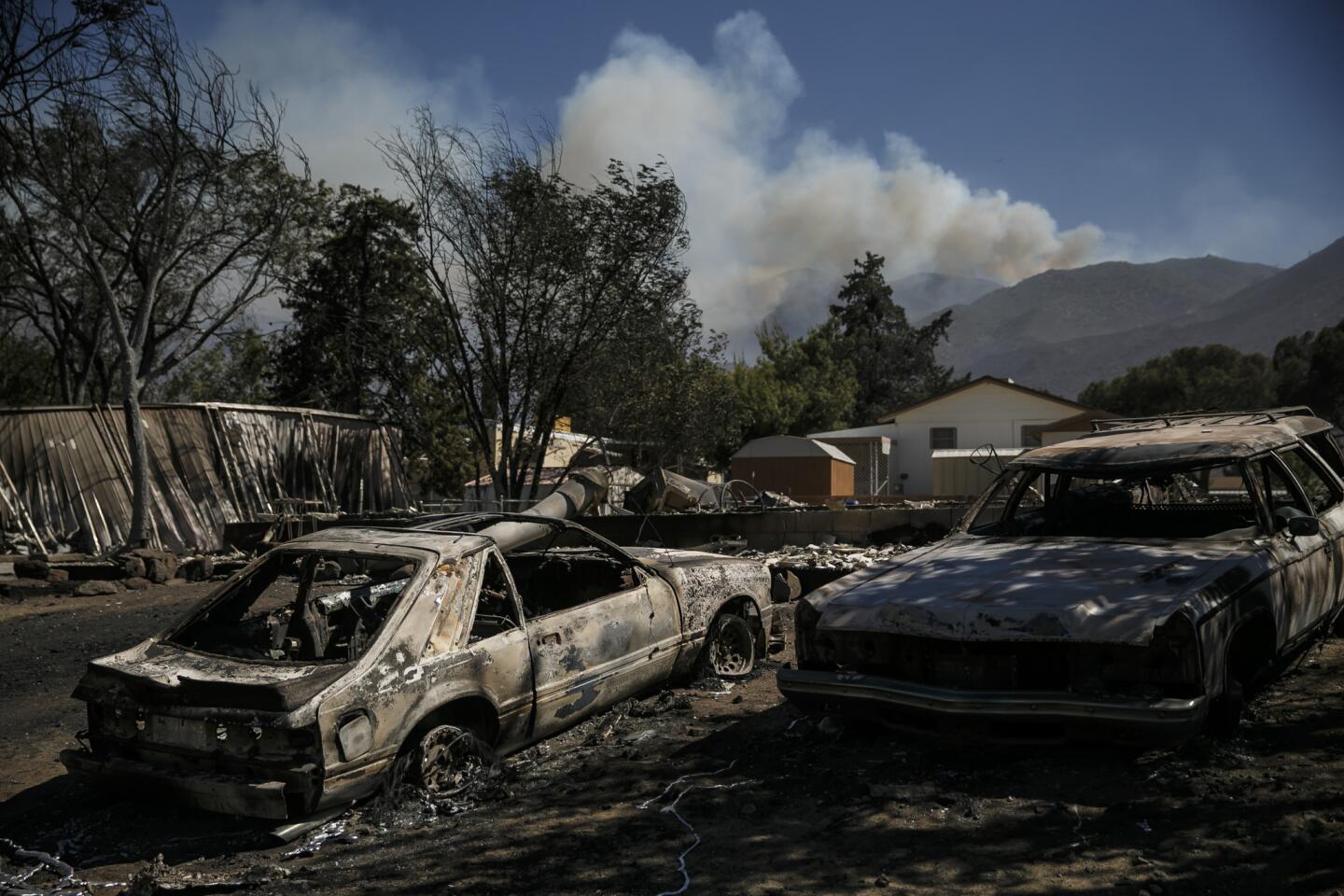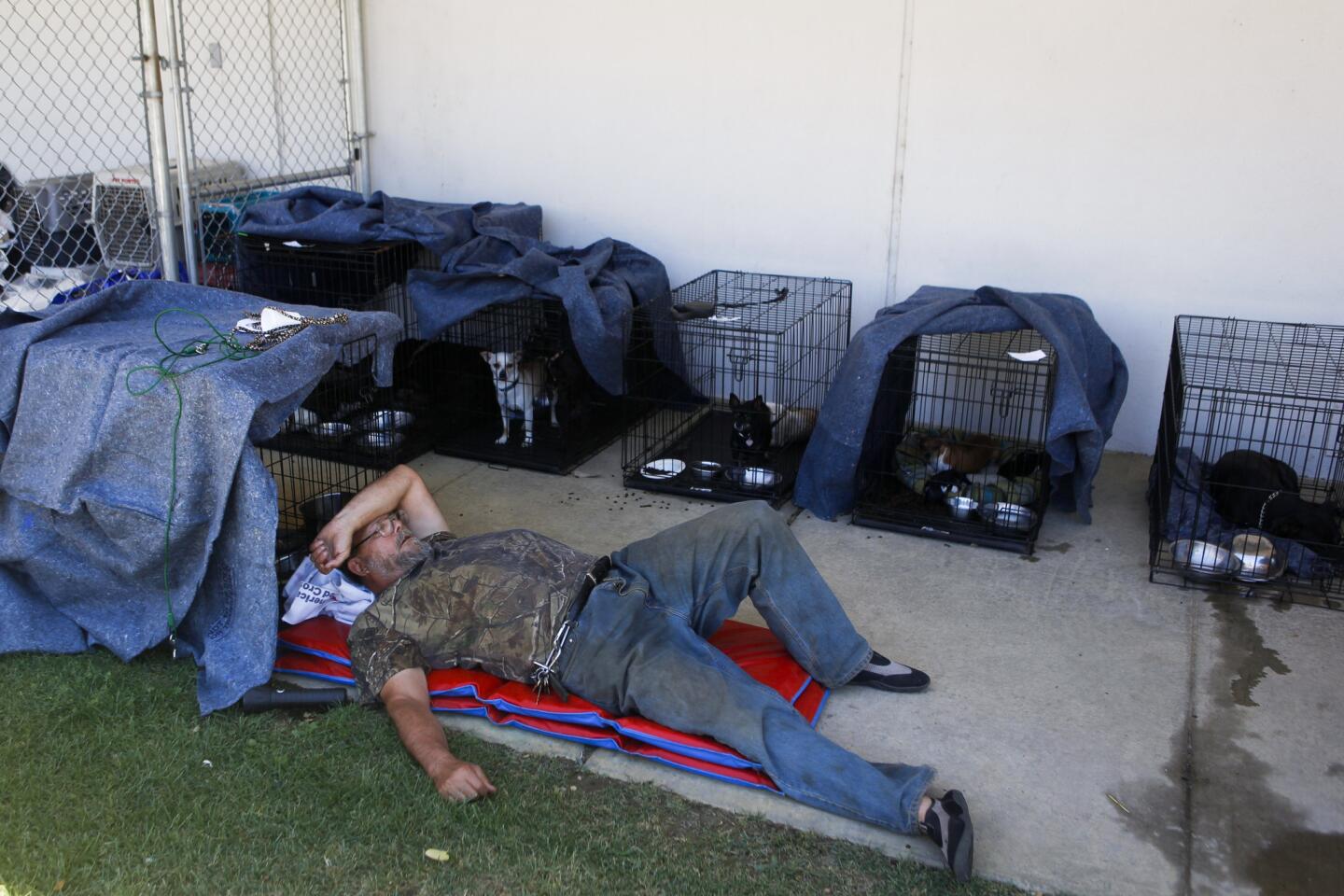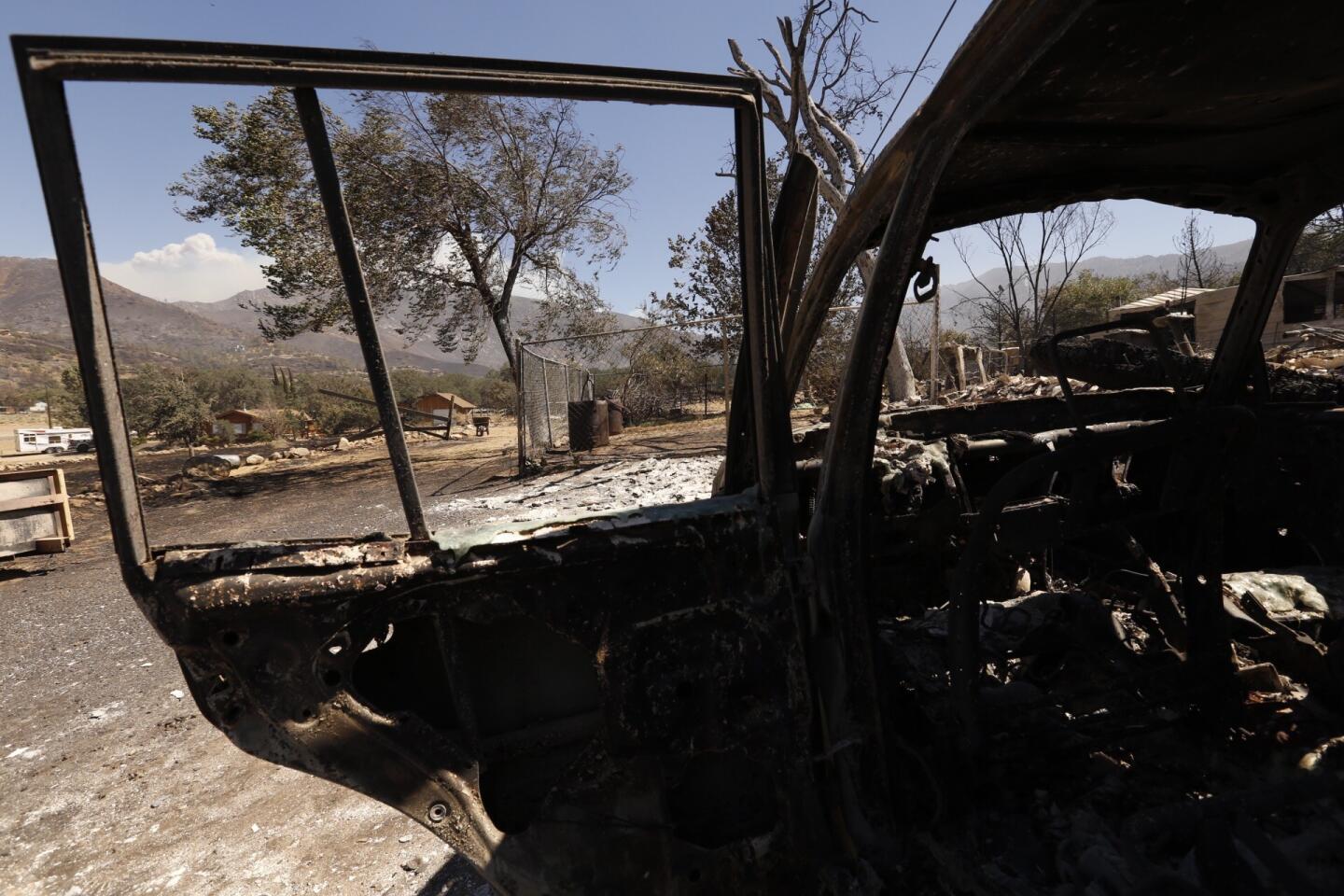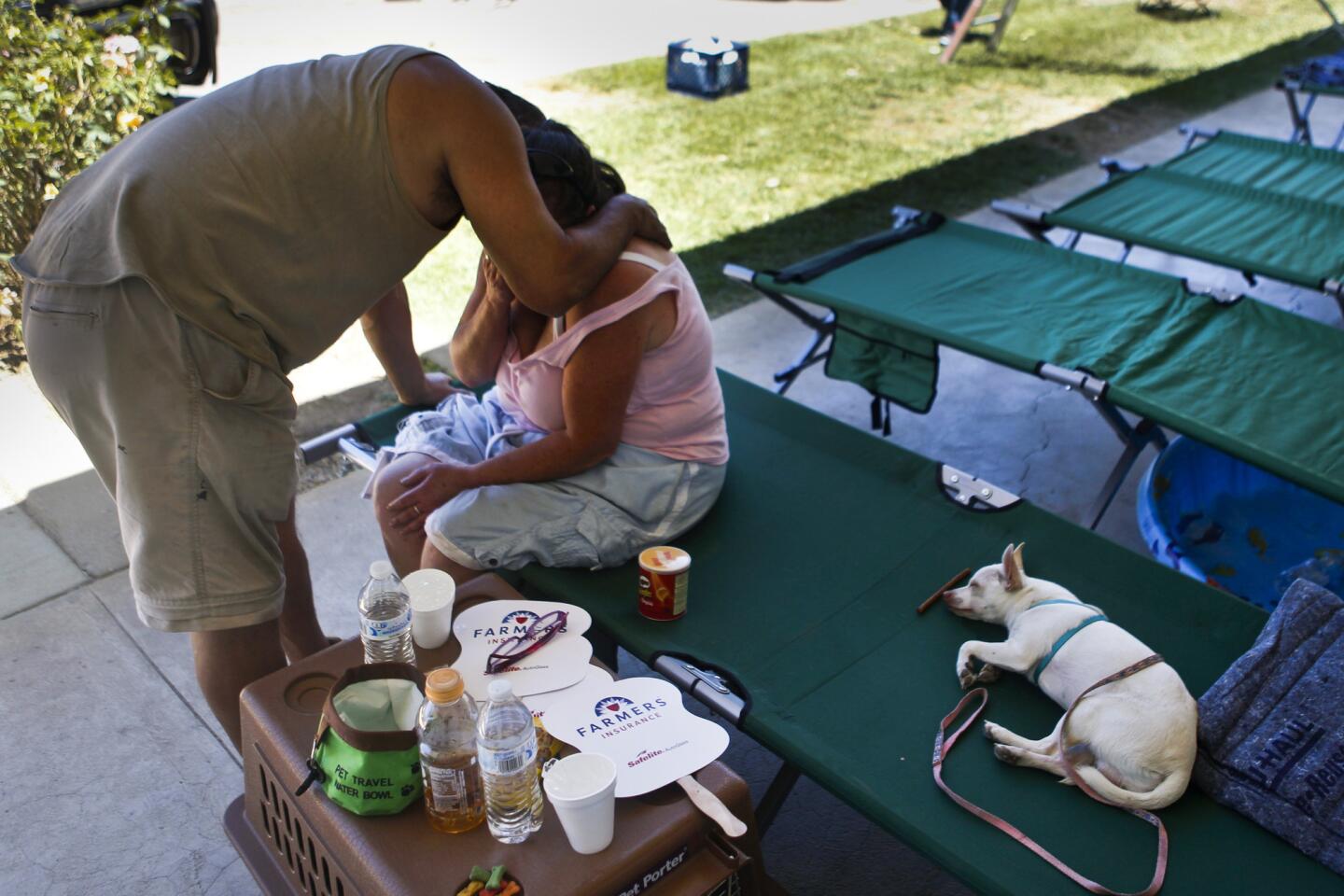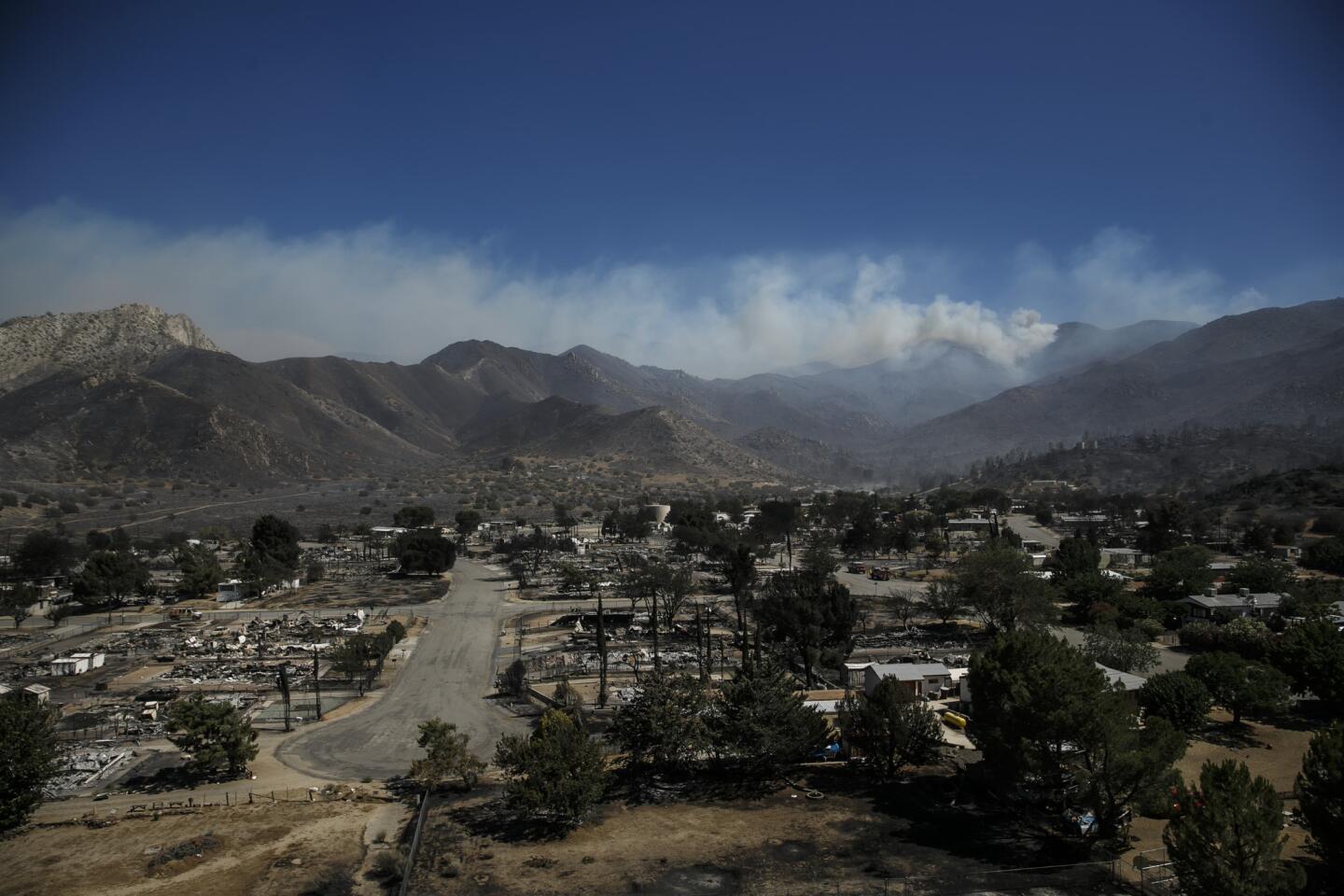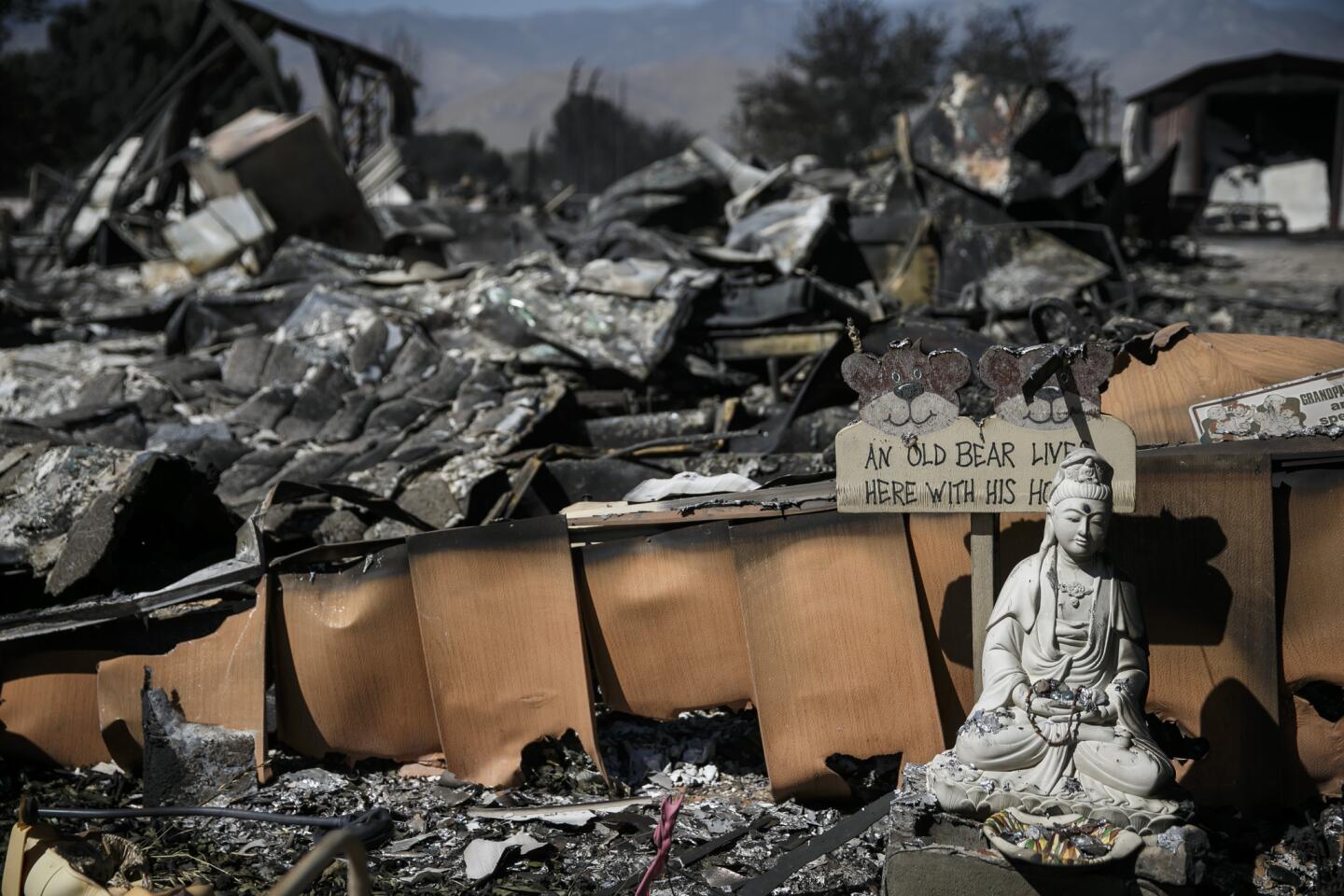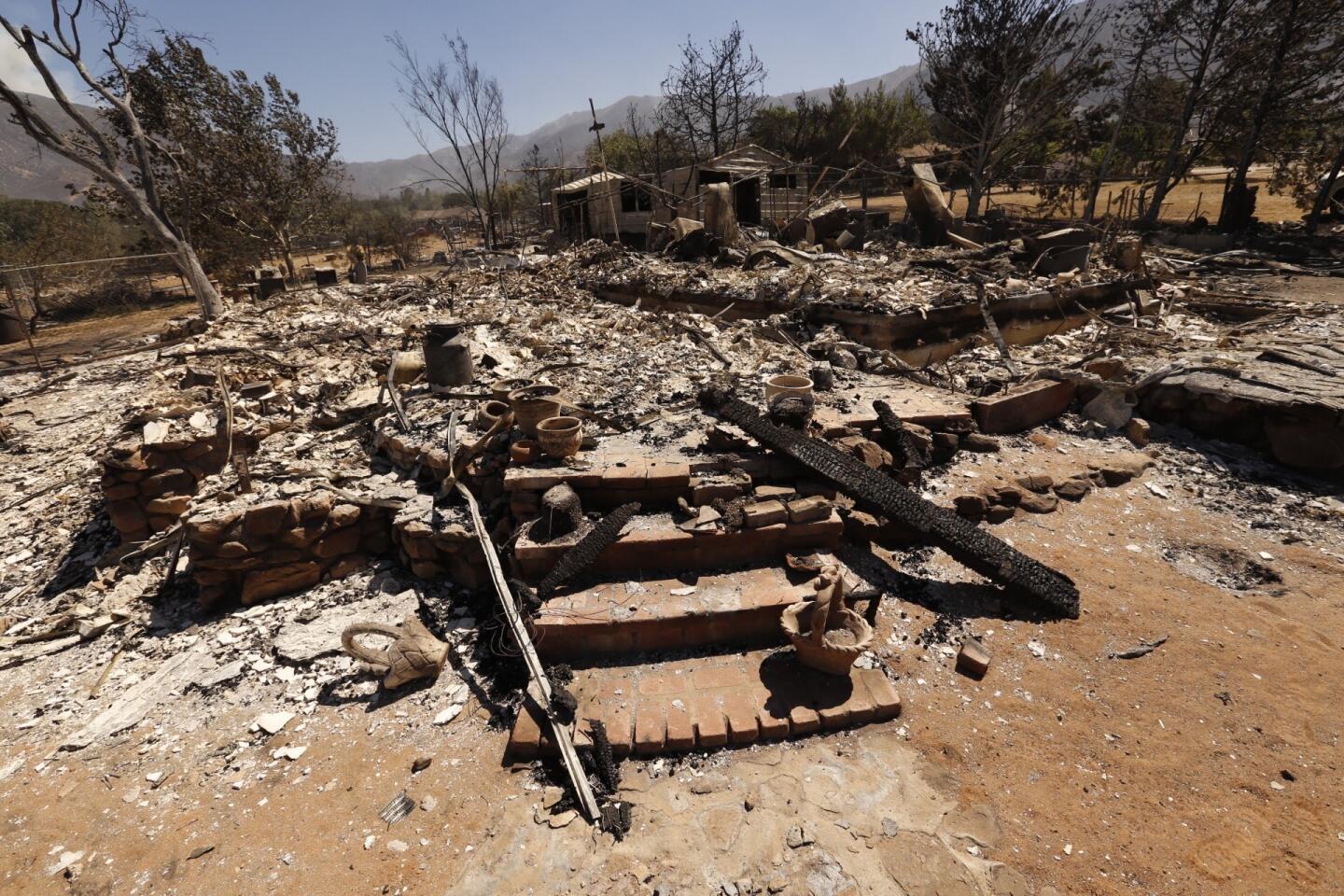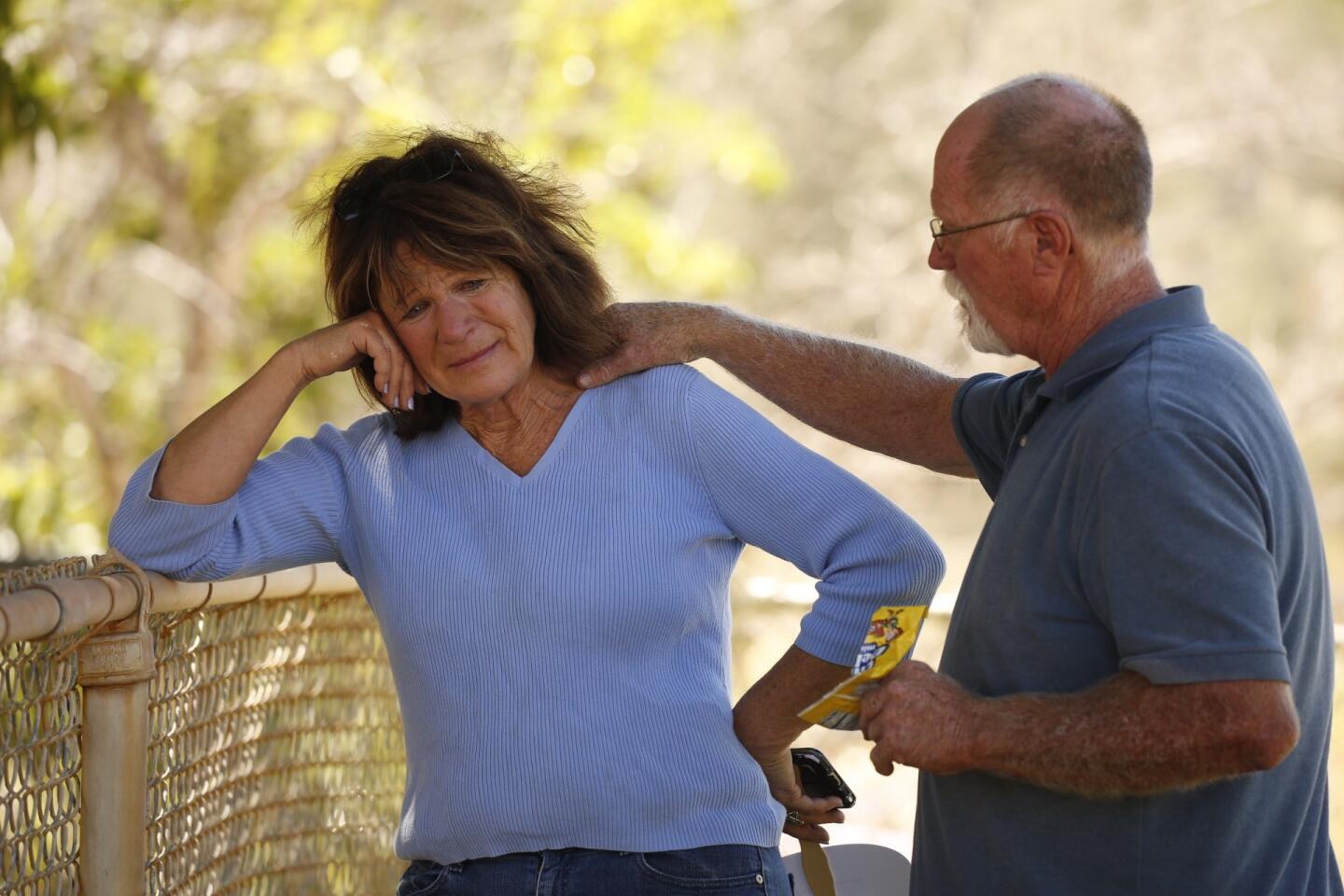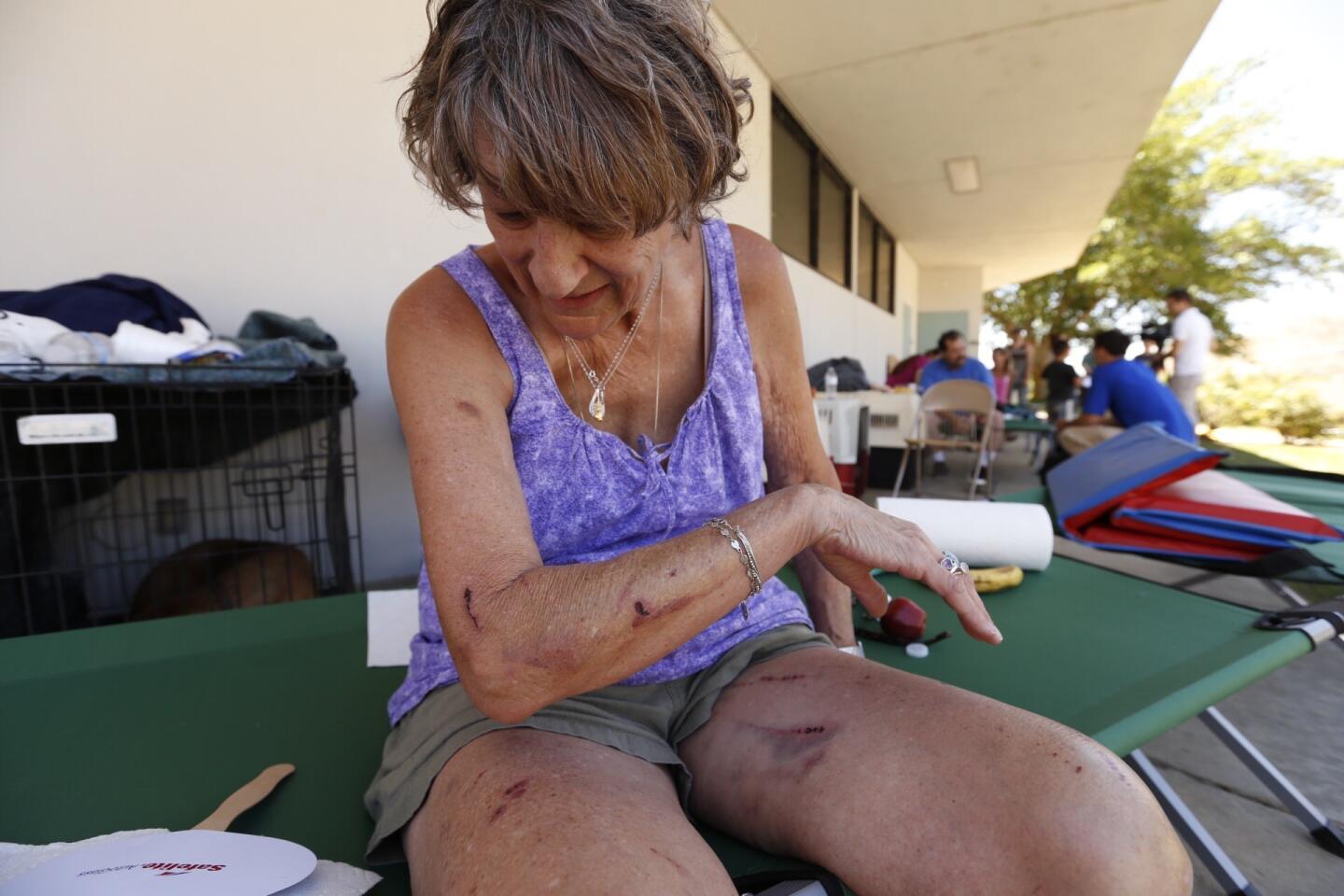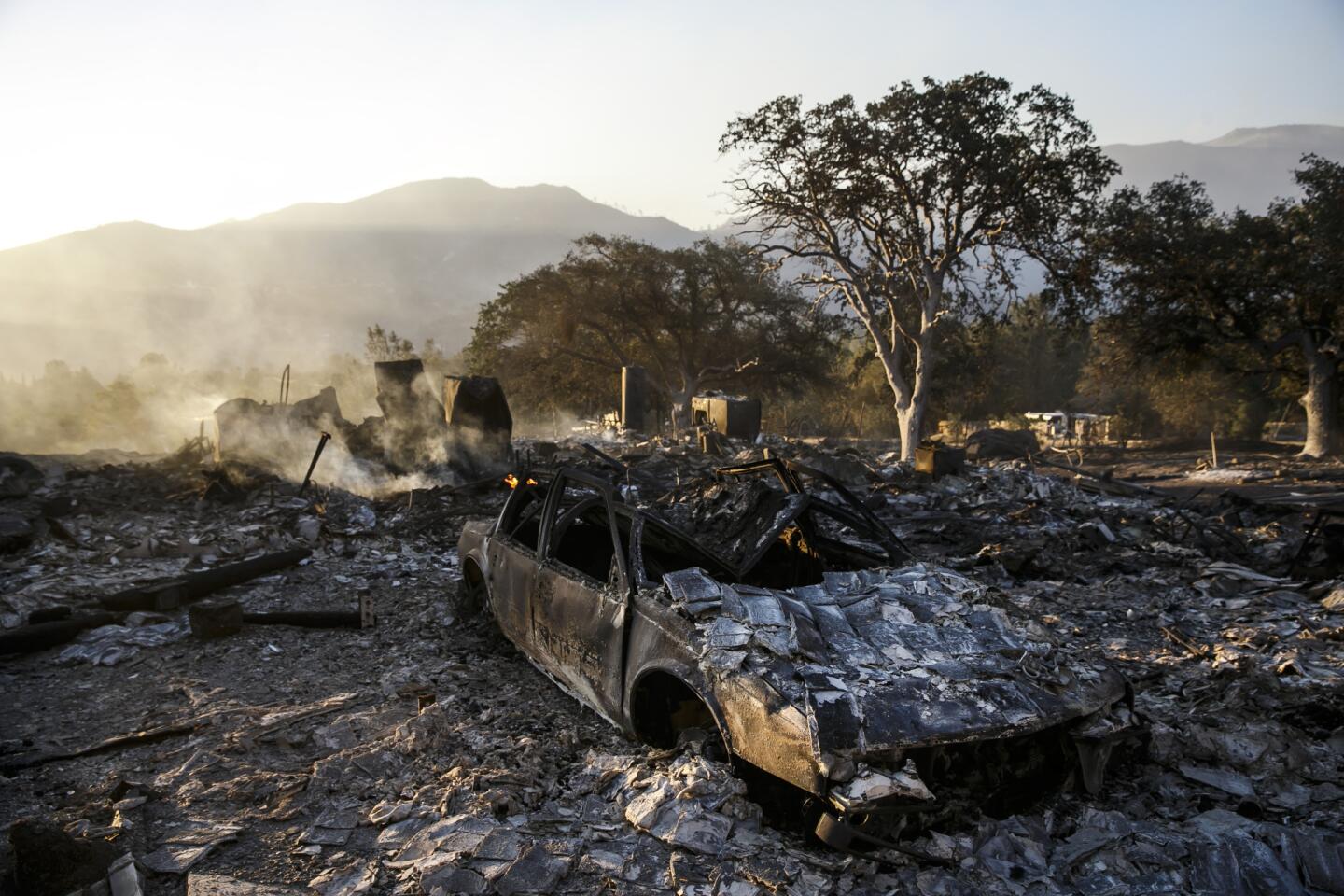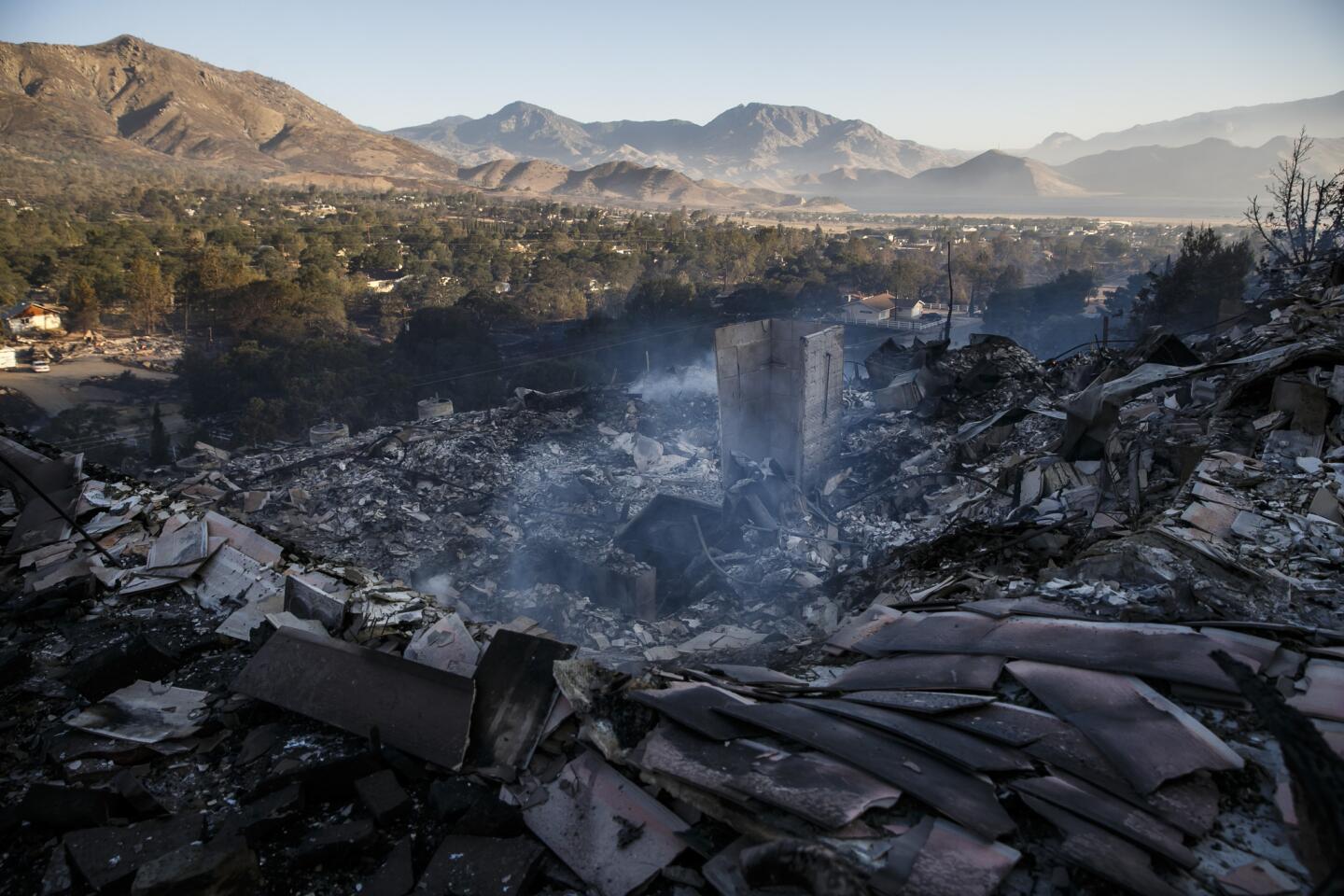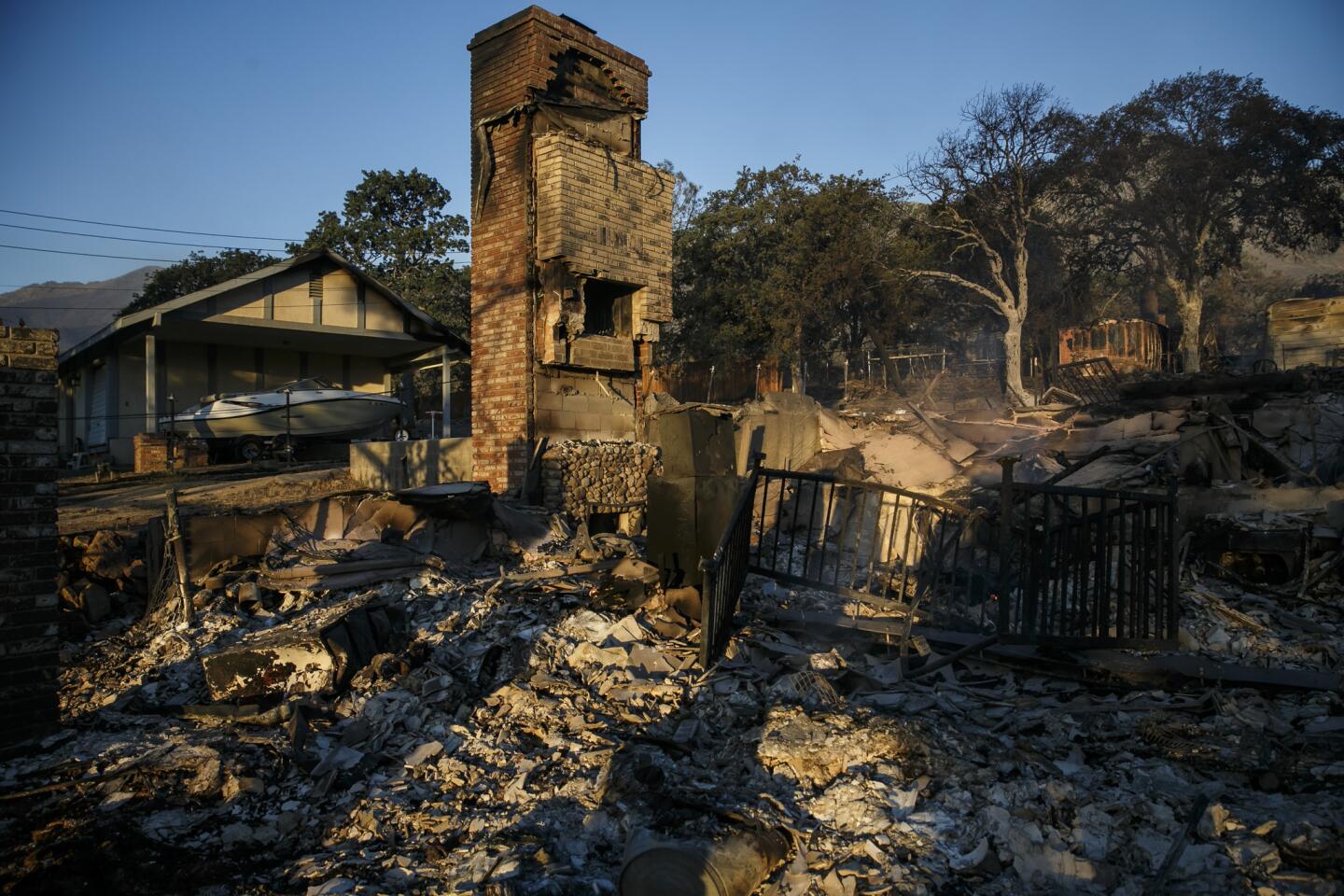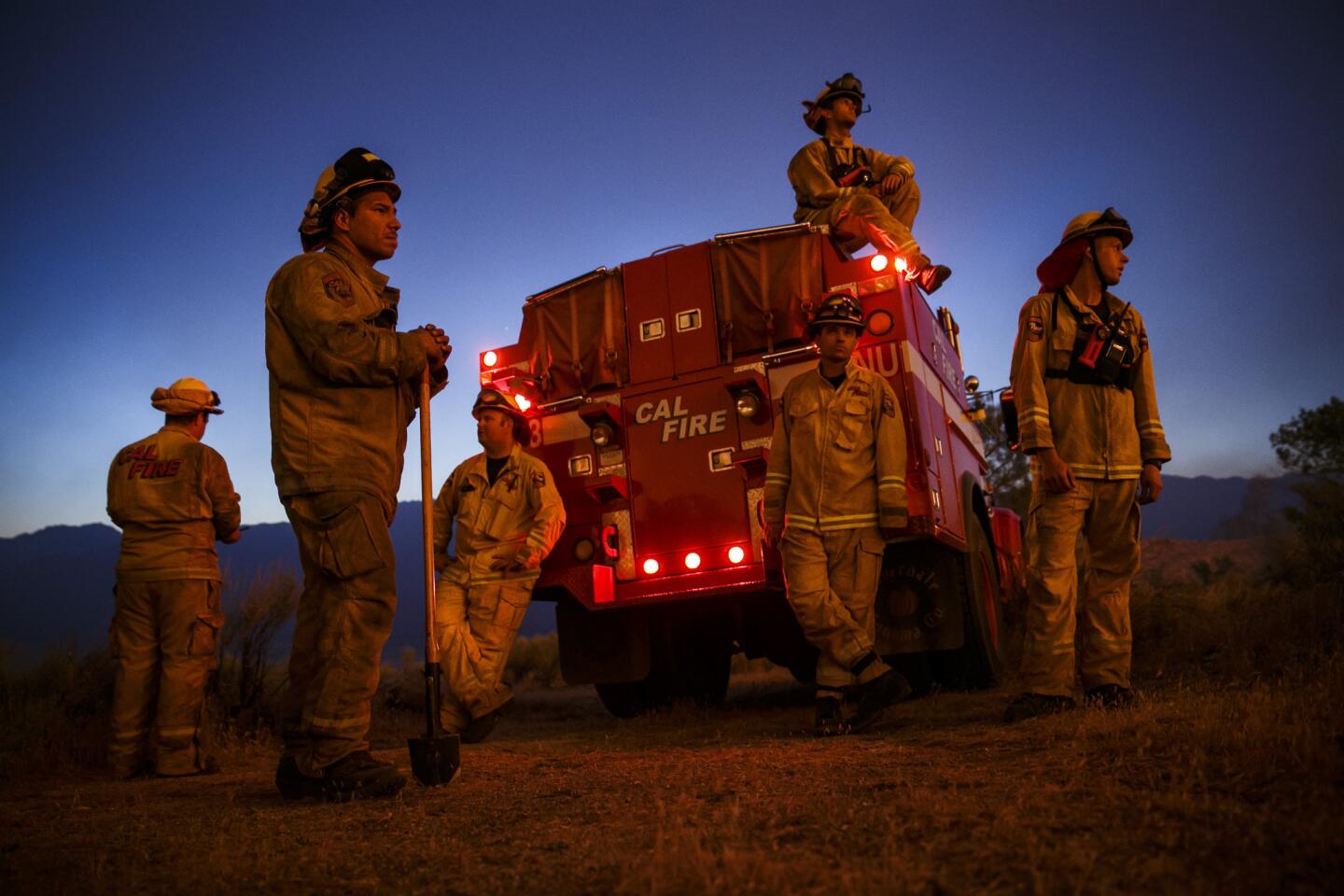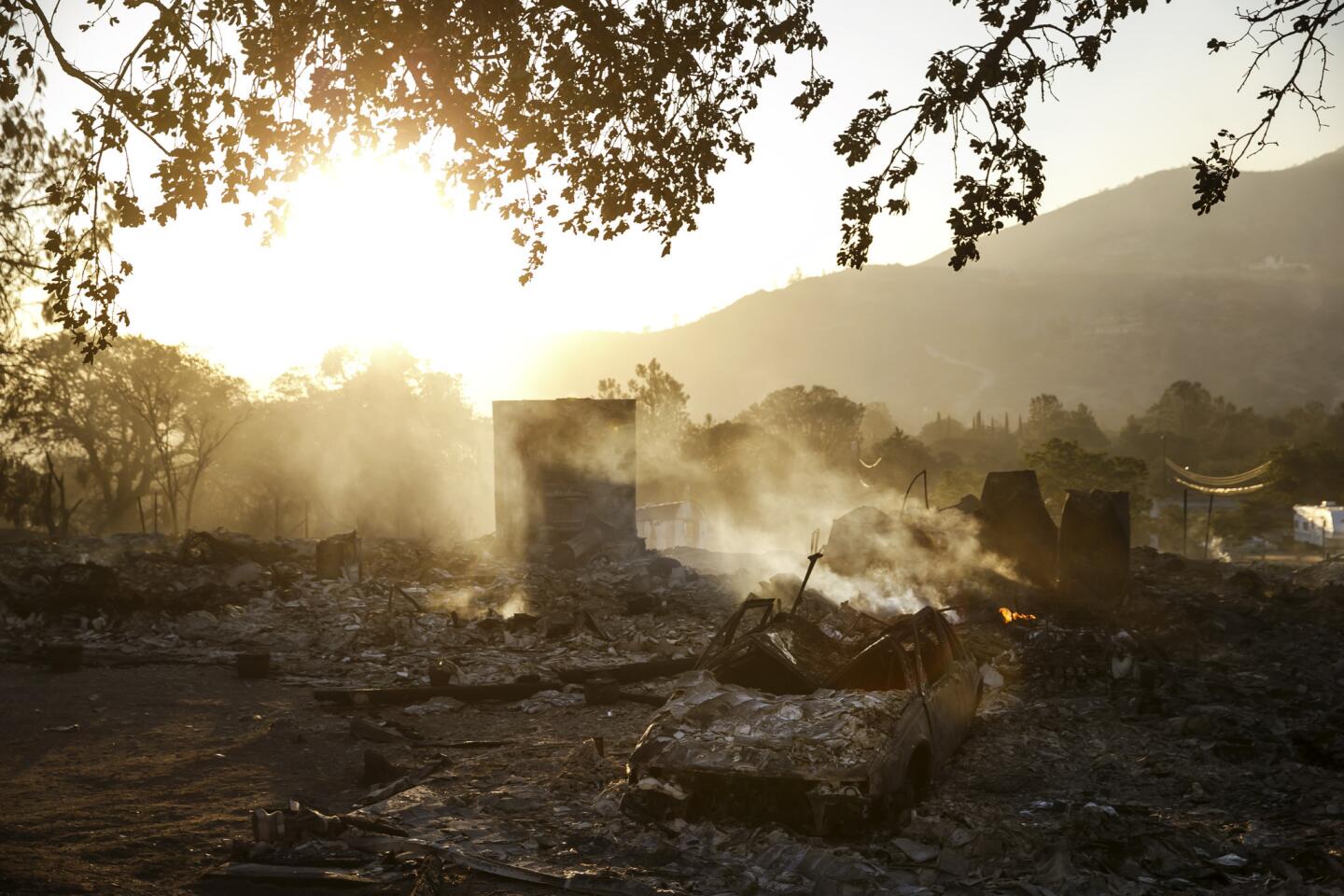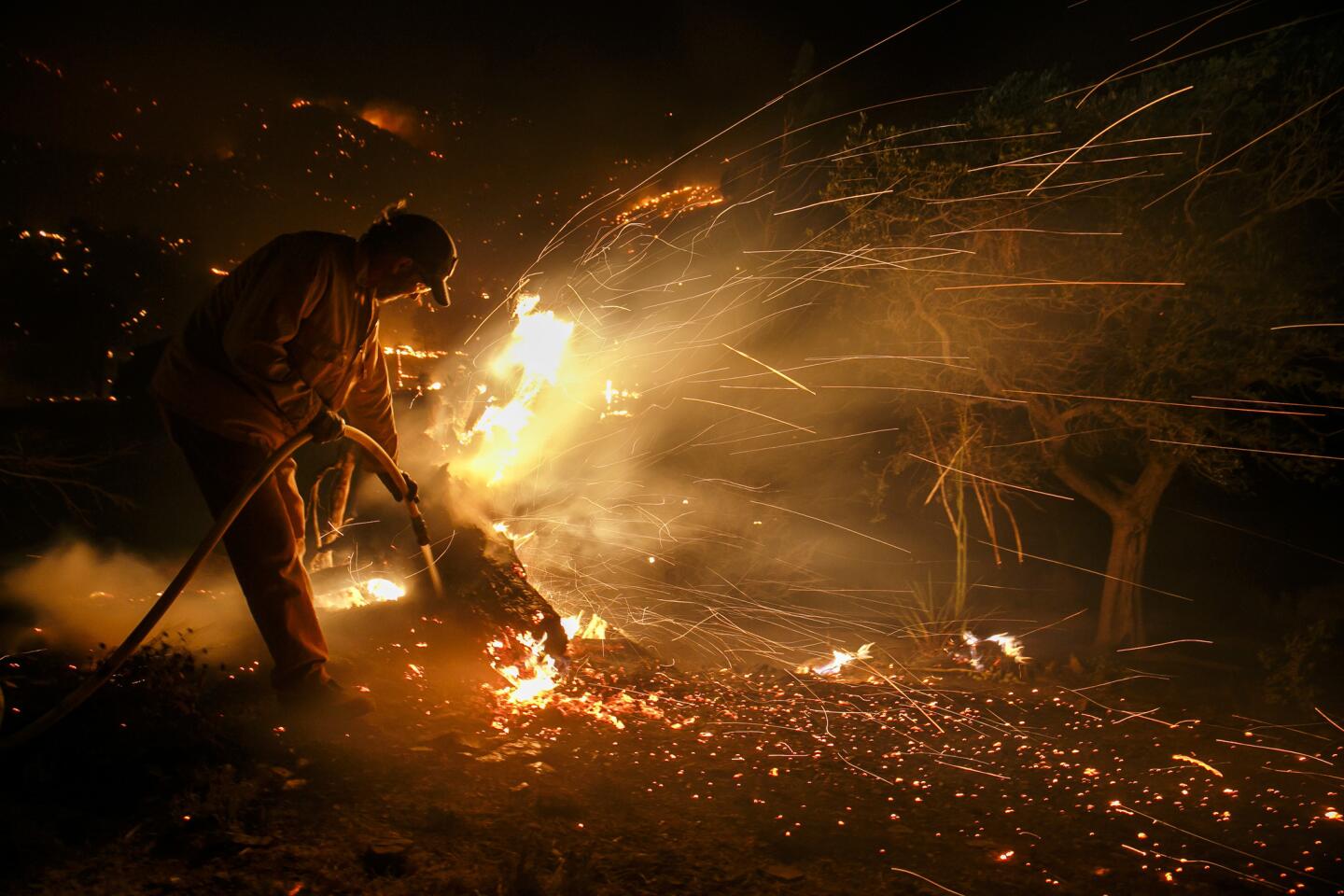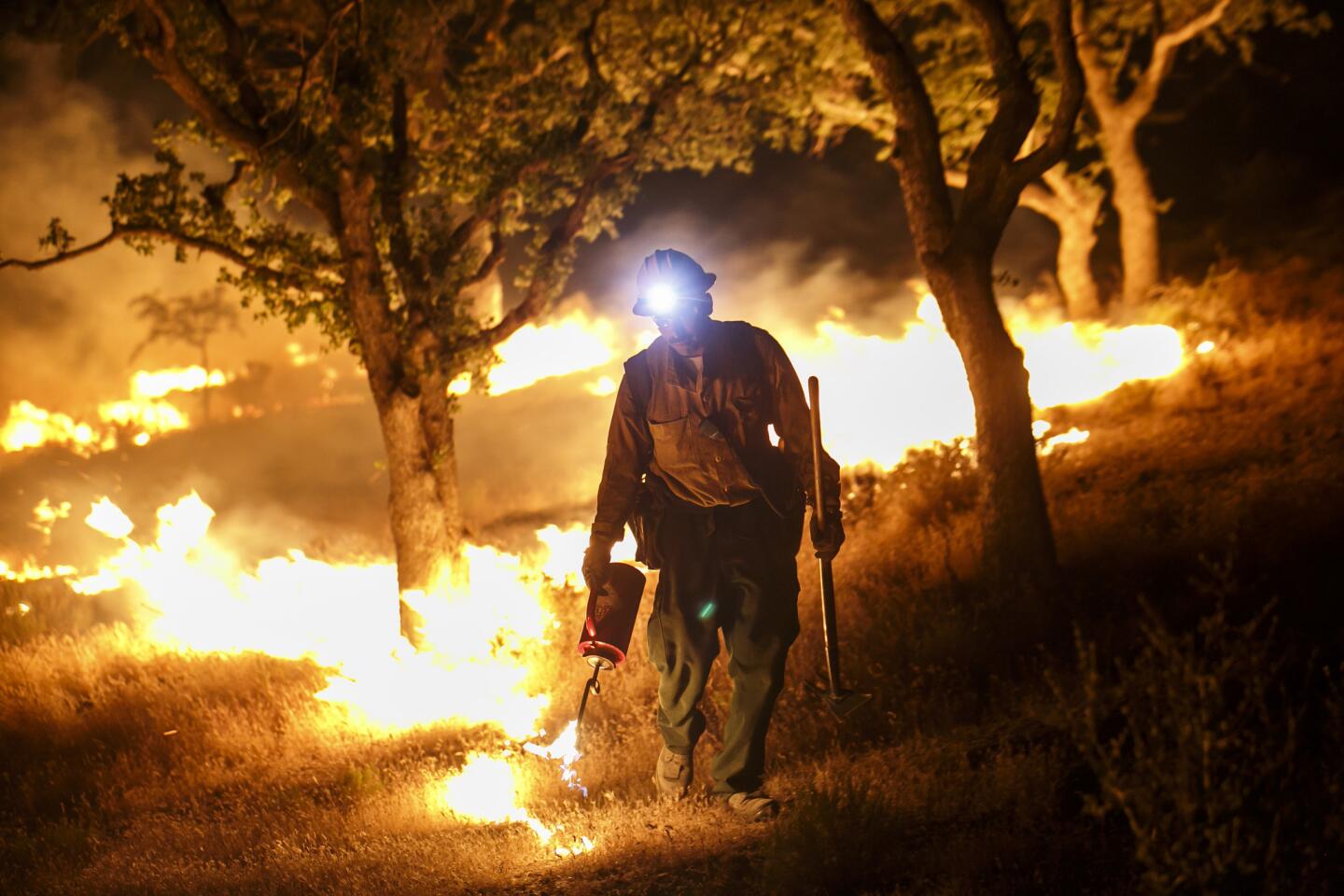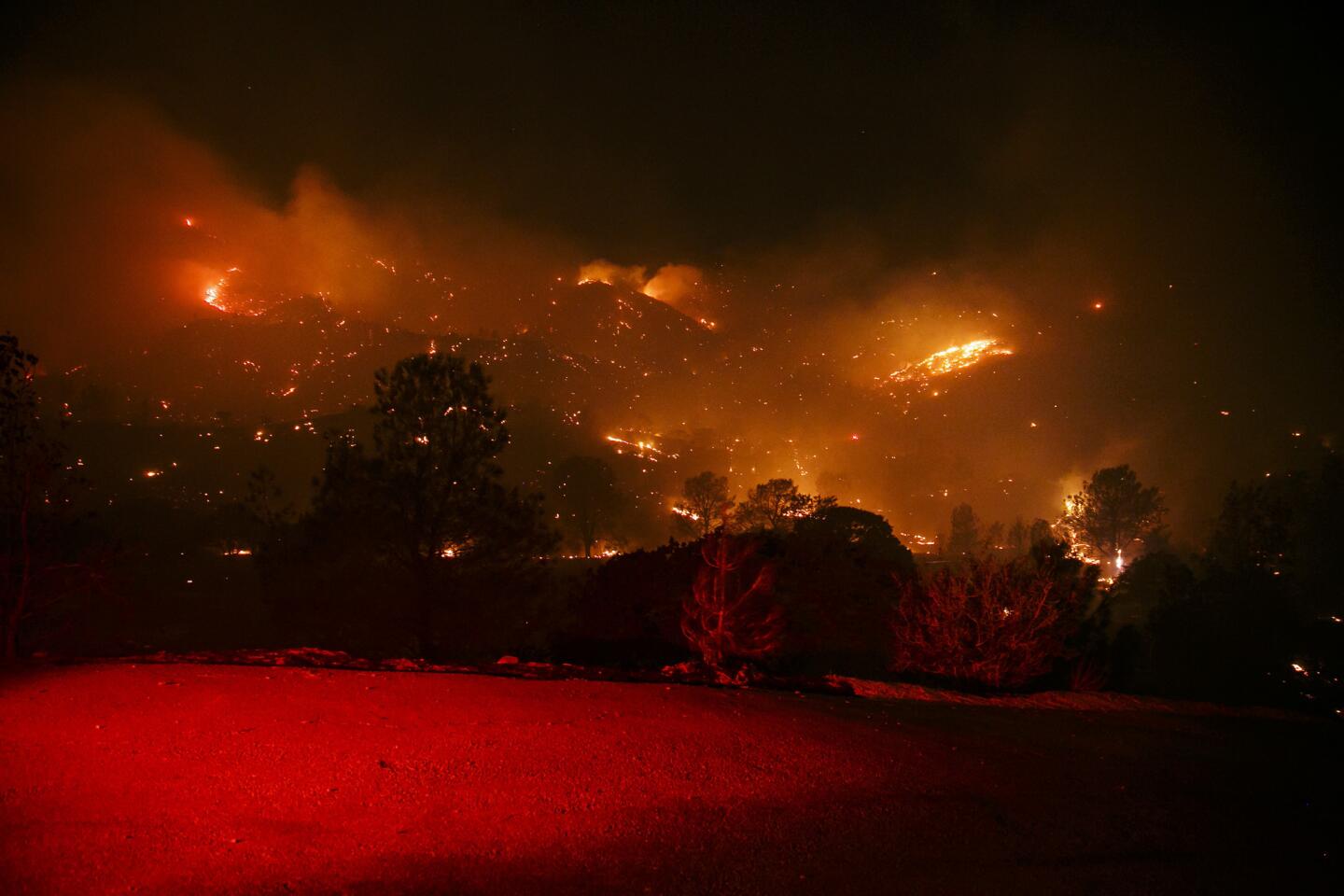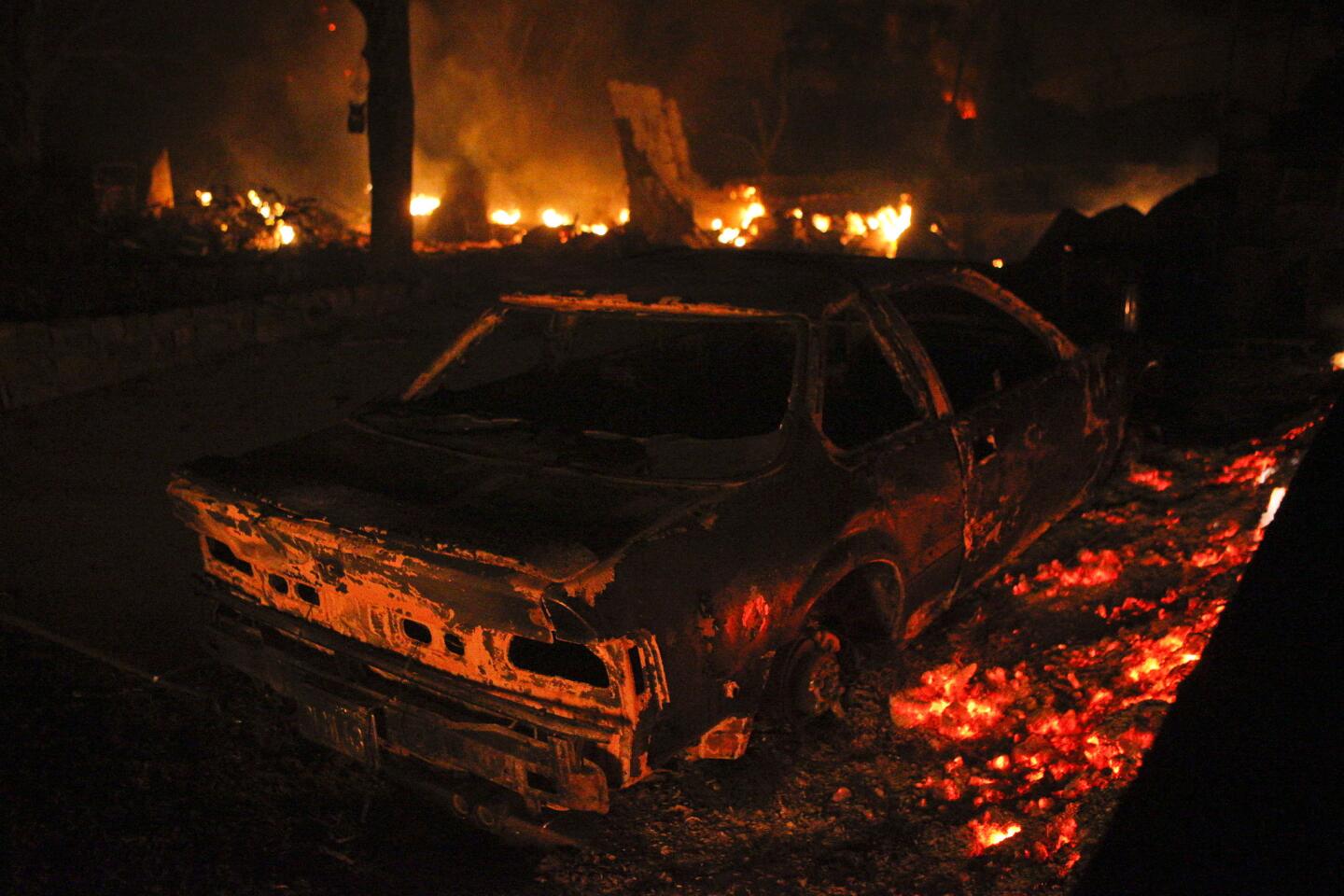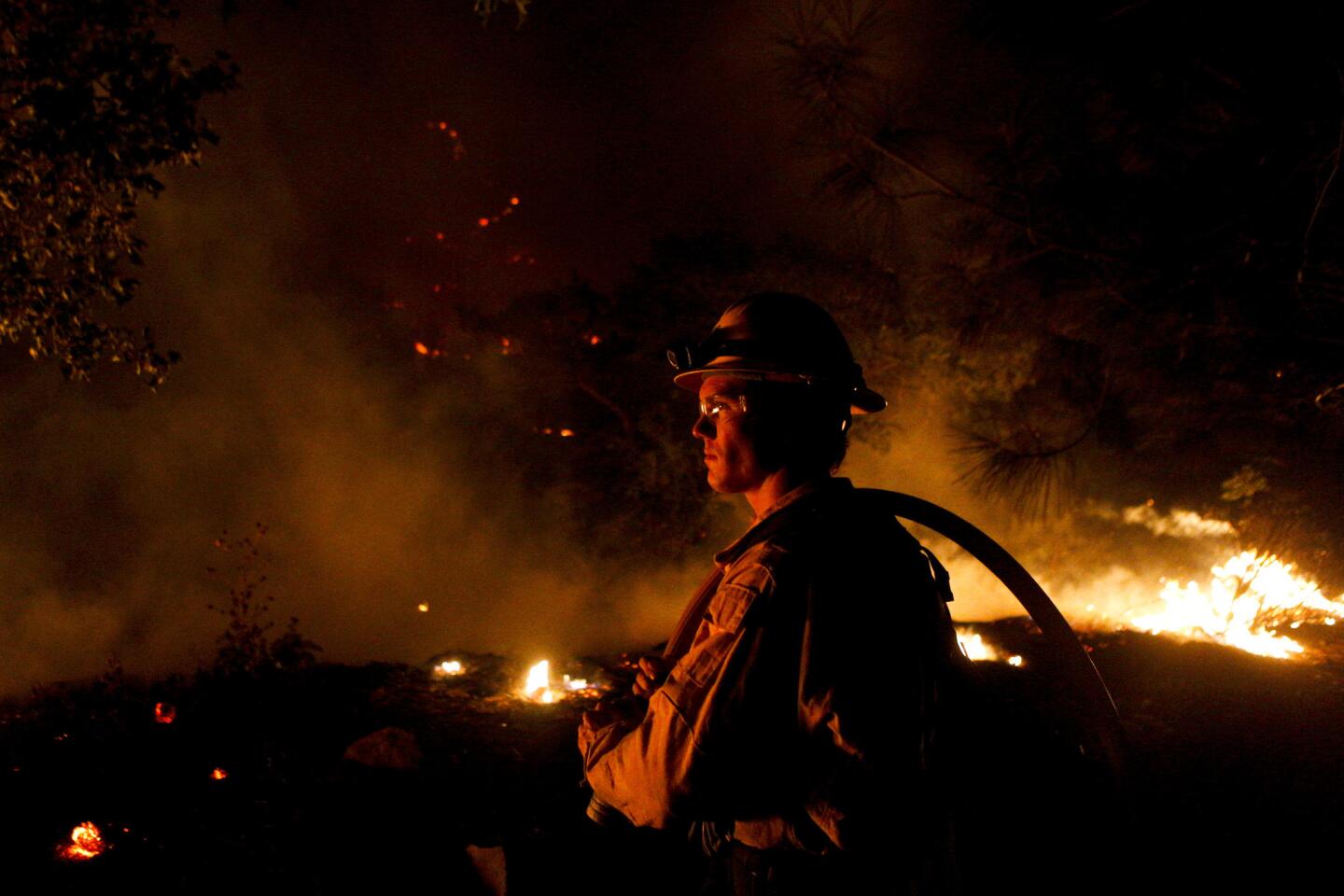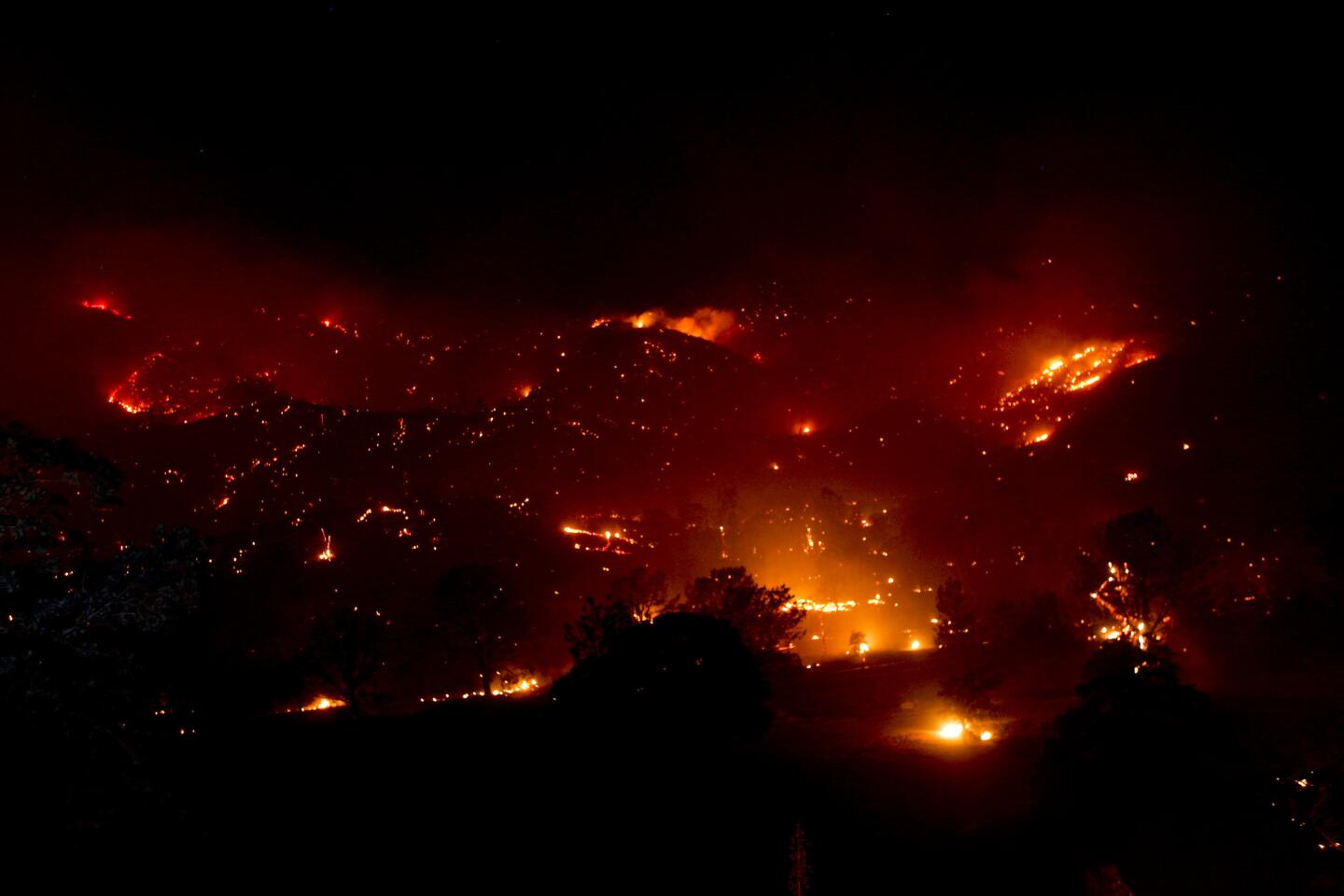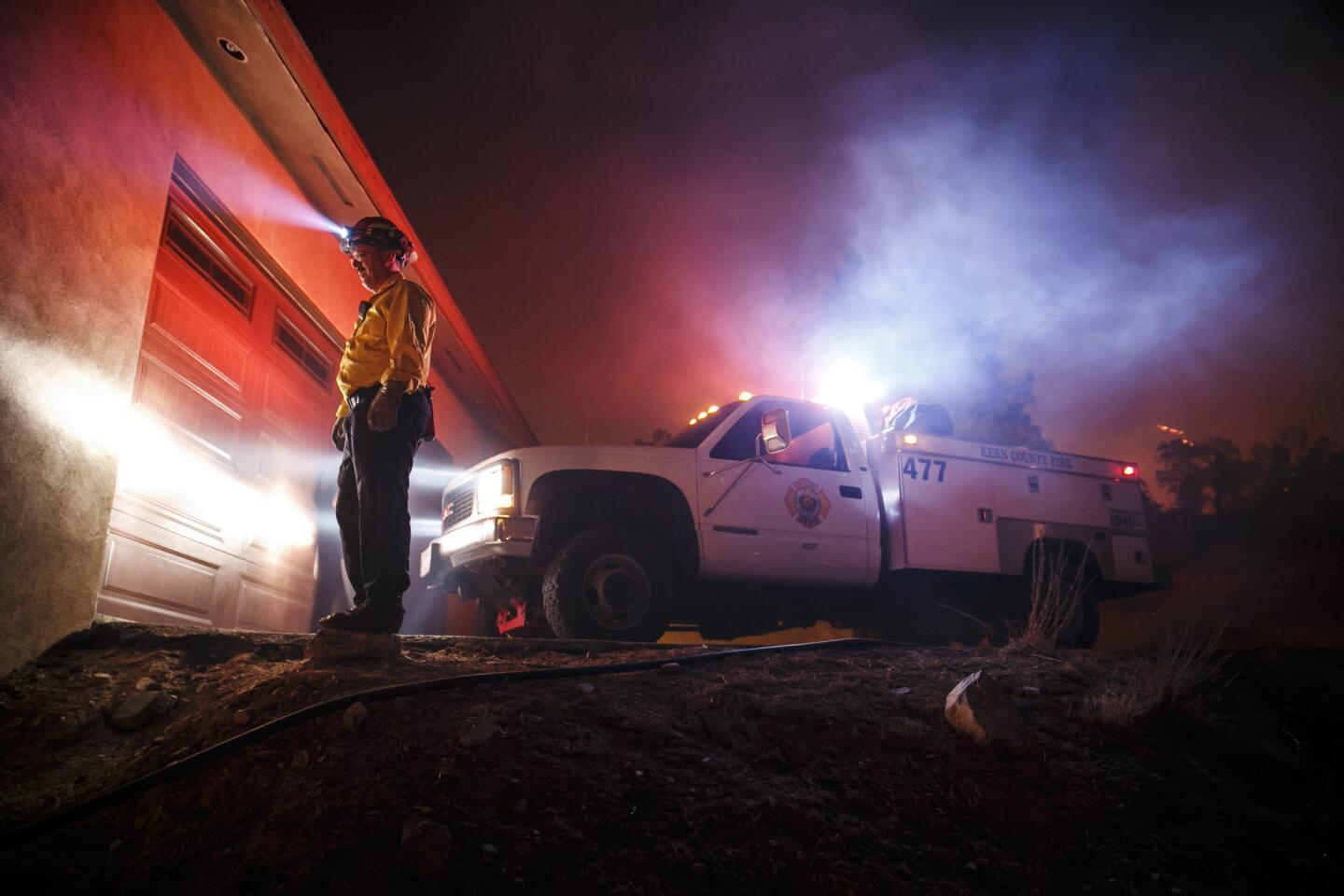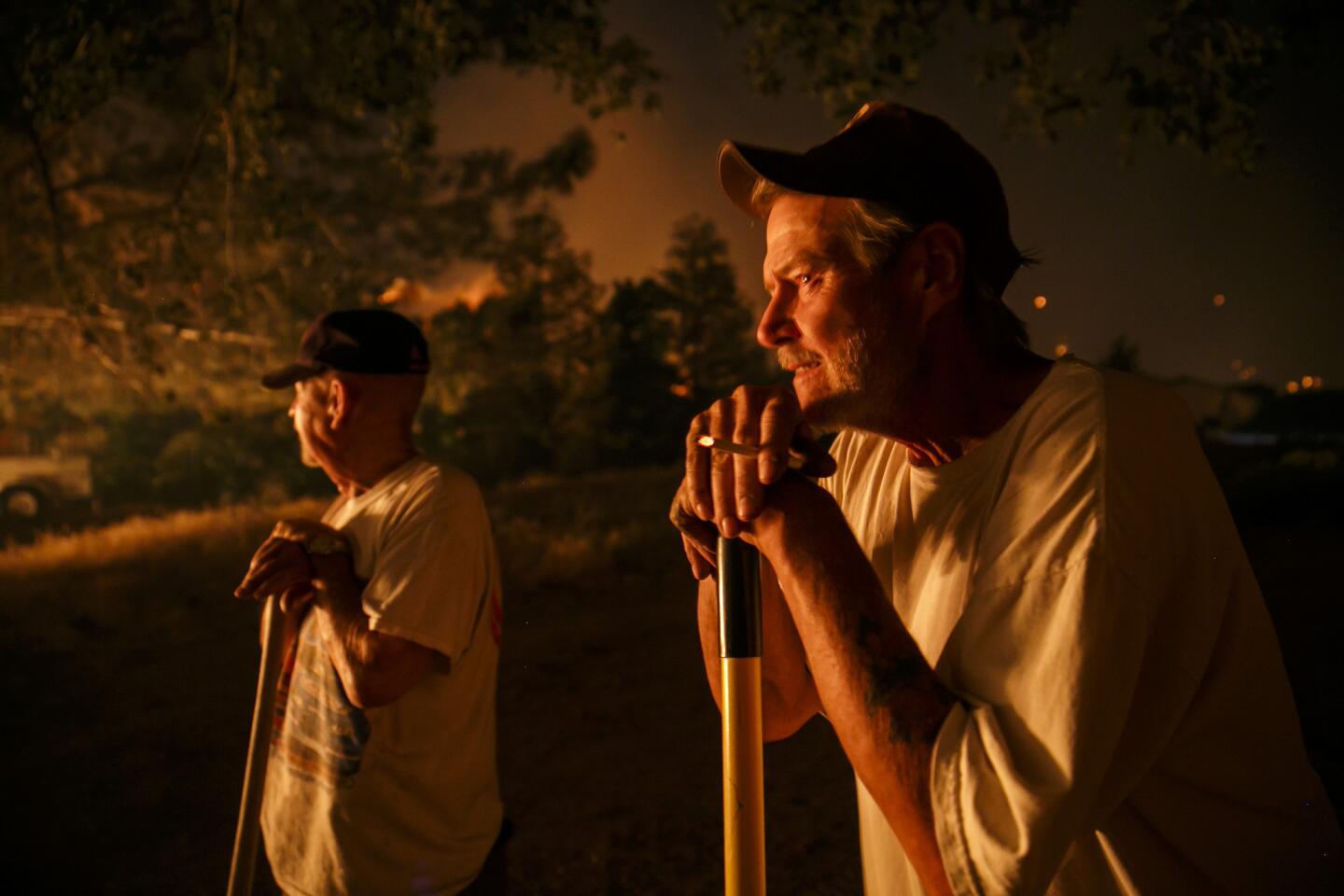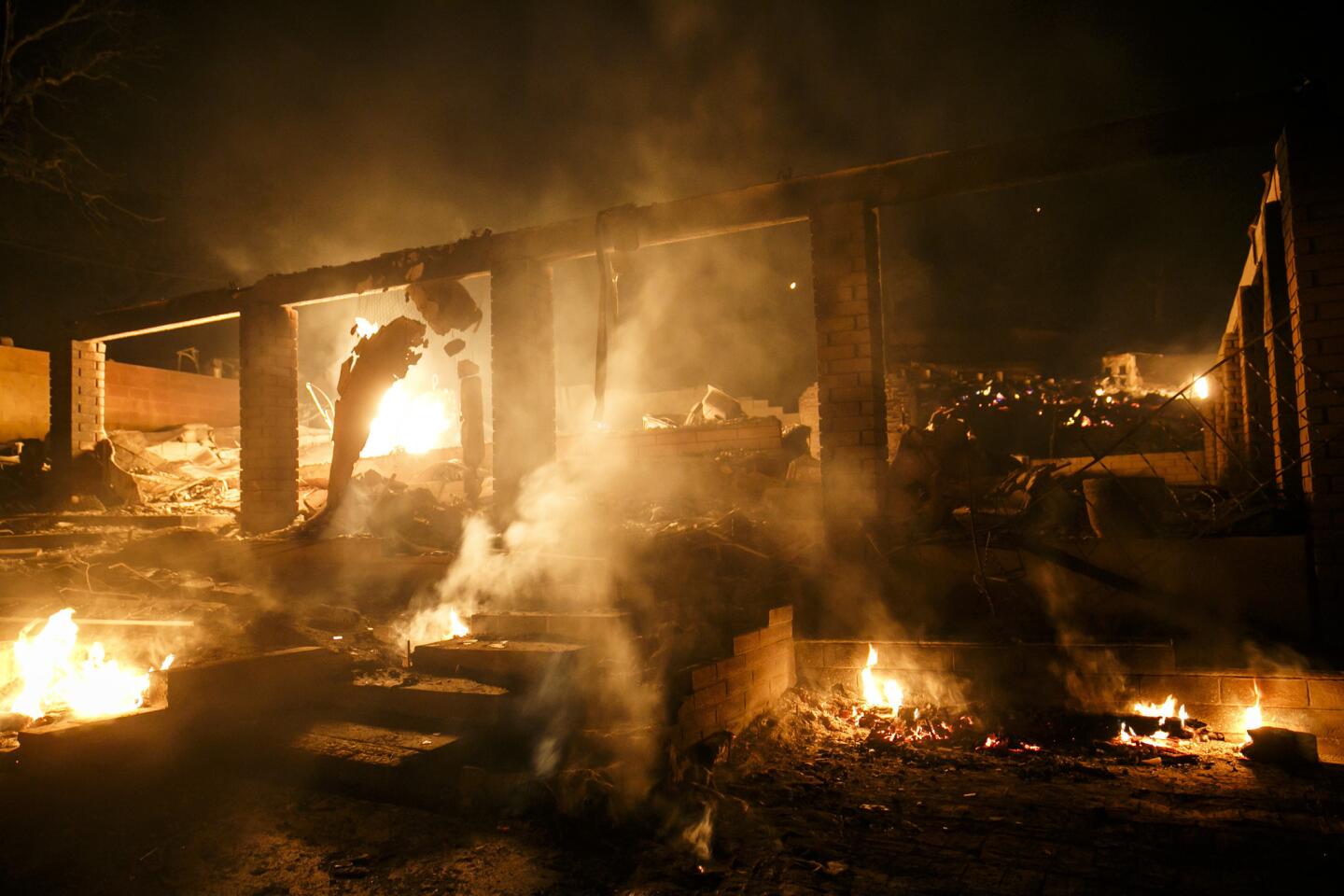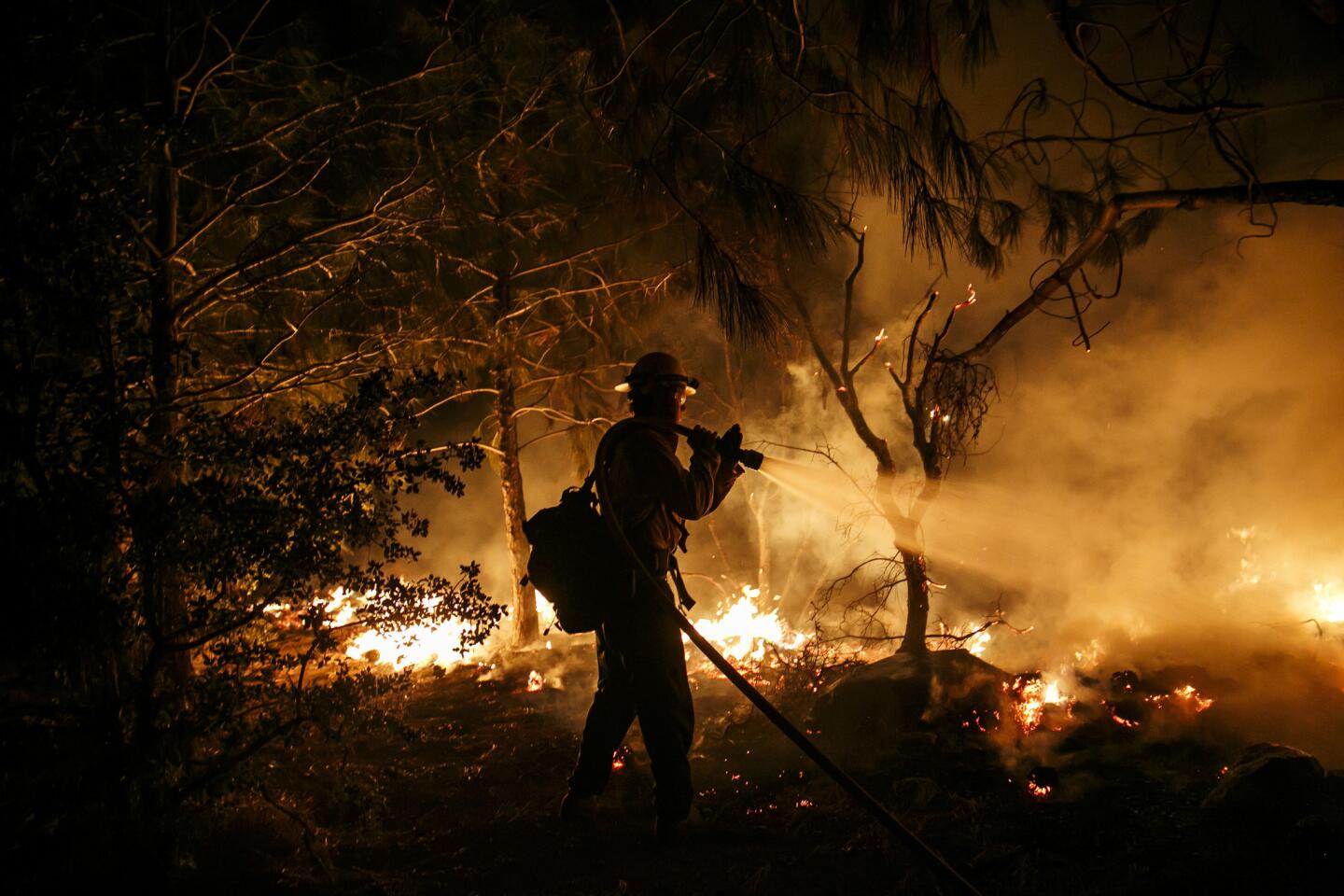‘It was apocalyptic.’ Residents had no warning as fire destroy homes, lives
- Share via
Reporting from KERNVILLE, Calif. — The smell of smoke startled Nathan Magee as he settled down to watch television in his eastern Kern County home.
Moments later, Magee, 54, and his wife Teresa, 55, watched Thursday night as flames bore down a mountain toward their South Lake community in Kern County. Magee frantically searched for his keys and his wallet. The couple grabbed their dog Dodger and cats Baby and Tiger and ran for their car — already low on gas — as ash and pieces of burnt wood rained down on them.
“It was a firestorm,” Nathan Magee said early Friday from a grade-school-turned-evacuation-center, not knowing whether his home still stood.
For Magee and other residents around Lake Isabella, the Erskine fire seemed to come out of nowhere and strike without warning. Many ran for their lives as the wind-whipped fire barreled from the foothills down into the tiny towns that dot California 178 east of Bakersfield.
Fueled by drought conditions, massive stands of dying trees and soaring temperatures, the fire consumed 46 square miles and destroyed more than 100 structures, making it the most destructive wildfire so far this year in California.
Authorities confirmed two deaths.
Those who did escape the fire shared harrowing stories of survival. The wind blew so strongly that it knocked down tables, and vases full of rocks, and buffeted firefighters and residents in retreat.
“The wind was so diabolical,” said Magan Weid, 57, who fled with her father and with other neighbors. “Everything was flying into your eyes. I didn’t have time to get glasses. I literally just grabbed a bag with miscellaneous crap. I didn’t have time to get anything together.”
The fire began at the junction of Erskine Creek Road and Apollo Way shortly before 4 p.m., said Kern County Fire Department Capt. Michael Nicholas. In those early hours, fire crews frantically tried to save what homes they could, but were overwhelmed by the power of the blaze. One fire official broadcast his journey through the fire zone, showing home after home burning to the ground.
Hundreds of firefighters flooded the area Friday morning to join in the effort, officials said. Three suffered from smoke inhalation.
The fire, whose cause is under investigation, caused evacuations in communities such as Bella Vista, South Fork, Weldon, South Lake and Mountain Mesa.
Nancy Moore, 64, had gone to visit friends in Mountain Mesa on Thursday afternoon, but when she arrived, they said they were being evacuated because of an approaching wildfire. Moore had her friends come to her South Lake home, but almost as soon as they arrived, they were forced to evacuate once more.
She didn’t see the flames, but saw the smoke and watched as strong winds knocked over vases and plants and tipped over tables.
“It was intense,” she said. “I’ve never seen anything move that fast.”
Chelsea Hunt, 27, saw the fire reach a nearby mountain from the home she shares in Squirrel Valley with her boyfriend and her grandmother. She was shocked at how close the clouds of smoke were to her home.
“It was apocalyptic,” she said. “I can’t even remember what I was doing. All I remember is seeing the fire and realizing I needed to run.”
And she did, leaving behind all of her possessions — including her Social Security card and birth certificate. The few possessions that remain are her car and her pajamas. She, her boyfriend and grandmother evacuated to Kernville Elementary School, where they joined more than 100 others.
Shawn Rice, 22, described the scene as he and his family tried to evacuate from South Lake as stressful, with many neighbors trying to do the same and creating a small traffic jam. As he watched the flames at the ridge of a nearby mountain, he couldn’t help but think the worst.

Dozens of homes burned Thursday evening in a fast-moving fire that broke out in a rural area of Kern County, the most destructive blaze in a week of brush fires across Southern and Central California.
“South Lake is probably going to burn down, along with my home and the surrounding homes in the community,” he said. “It was negative thinking but I’m seeing the flames and was thinking realistically — things are looking pretty terrible.”
On Friday, Rice looked in the distance at the orange glow from the wildfire. He said he didn’t know how to feel because he wasn’t sure whether his family’s home had burned down or not.
“It would be a miracle if it’s still there,” he said. “The important thing is I’m alive.”
The parking lot of the evacuation center Friday was filled with dozens of vehicles, where people had placed dog food, animal crates and bags of clothes. Some cars were empty, but at least one person, wrapped in a Red Cross blanket, slept in a car.
On Friday morning, Cher Buys, 63, said she had arrived at the evacuation center to find people “crying their guts out.”
The Weldon resident said she was at home in bed when the electricity went out around 7 p.m. the night before. She said she walked outside and into a fog of smoke: “You couldn’t see the neighbor’s house next door.”

The scramble to contain the wildfire drew more than 1,100 firefighters from across California, with hundreds more on the way.
See the most-read stories this hour >>
After grabbing a few items from her home, she jumped into her black Jeep and drove off just as firefighters were arriving to evacuate residents. She could also see tall flames being driven closer by the wind.
“It just kept climbing and climbing over the mountains,” she said of the fire. “For it to move through five towns is a lot.”
Officials said the area was ripe for a disastrous fire. Besides the extreme weather, the area has been hit hard by a tree die-off that has claimed the lives of millions of trees across the state. The trees are dying due to a lethal combination of drought, heat and voracious bark beetles, heightening the already serious danger of big brush fires.
“The trees aren’t getting water,” Buys said. “They’re dying.”
Conditions were the worst they could have been for a fire, said Geri Jackson, a spokeswoman with Sequoia National Forest, one of several agencies responding to the blaze. Temperatures were in the high 90s, humidity was in the single digits and low teens, and the area was just coming off a weeklong wind advisory.
“The wind, the heat and the low humidity — all that does is just drive a fire,” Jackson said. “When the fire initially started, it took off quickly.”
Worries intensified for some, as they struggled to reach people in the Lake Isabella community. Because of the fire, cellphone service around the fire had been compromised, fire officials said. A local television station reported long lines of people at one of the evacuation centers, waiting to use a land line to make a phone call.
Kimberly Reyes, 54, and Luis Reyes, 59, who live in South Lake, said they had problems with their cellphones and weren’t able to reach their family for some time.
“It’s frustrating,” Kimberly Reyes said. “You couldn’t call family and I’m sure they’re watching the news and wondering if we’re safe.”
“You also don’t know how other people in the community are doing,” Luis Reyes said. “Sometimes that’s dangerous, because people go out looking for others.”
The Kern County blaze is the latest of several major brush fires to hit Southern and Central California in the last two weeks.
In Santa Barbara County, the Sherpa fire forced hundreds to flee their homes north of Santa Barbara last week. This week, two fires in the hills above Azusa and Duarte forced more evacuations.
In San Diego County, firefighters increased containment Thursday of the Border fire just north of the U.S.-Mexico border. Mandatory evacuations were ordered for the entire east county community of Potrero. The Border fire has burned 7,483 acres and destroyed five homes, according to the California Department of Forestry and Fire Protection.
Officials warned to expect more property loss in Kern County as the blaze continued to spread.
At Kernville Elementary School, many waited anxiously for news about the status of their homes and their communities. When Anthony Romero, a spokesman for the Kern County Fire Department told them Friday morning that 80 to 100 homes had been lost, many gasped.
The Magees joined countless others in a waiting game for news.
Nathan Magee, asked what comes next if their home was lost, had few words.
“Honestly, I don’t know.”
Vives reported from Kernville, Mejia from Los Angeles and Fernandez from Lake Isabella. Los Angeles Times staff writers Veronica Rocha, Joseph Serna, Ben Poston and Matt Hamilton contributed to this report.
ALSO:
Class-action suit filed against Long Beach over stings targeting gay men
Cleanup efforts under way to remove thousands of gallons of oil following Ventura spill
Have you seen Monique? Detectives seek clues with reward in mother’s yearlong disappearance
UPDATES:
7:30 a.m. Updated with new acres burned.
More to Read
Sign up for Essential California
The most important California stories and recommendations in your inbox every morning.
You may occasionally receive promotional content from the Los Angeles Times.



